- Skip to main content
- Skip to primary sidebar


Destinations
- Plan Your Trip
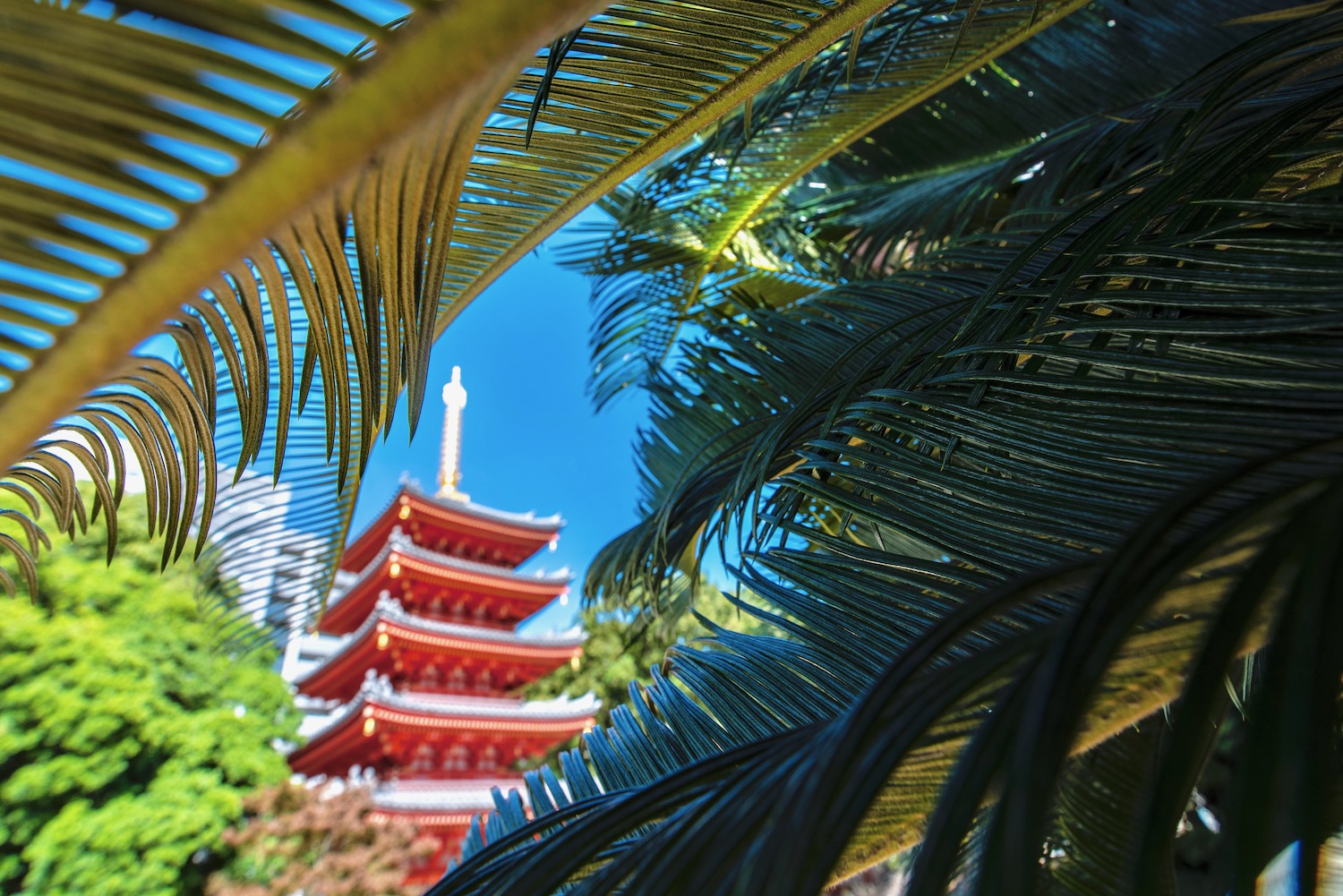
Kyushu Starts Here
I’ve had a Kyushu travel guide on this site for a long time—but I haven’t really been satisfied with it, if I’m perfectly honest. Some parts of it were downright superficial, and reflected the fact that I’ve been discovering the island piecemeal over the past several years, rather than having done a deep dive.
This changed a few years ago, of course: In November 2019, I embarked upon a truly extensive Kyushu trip, which saw me visit each of the island’s prefectures. Some destinations were completely new to me, while I simply hadn’t seen others in a while. In both cases, the impact upon my understanding of Kyushu was extraordinary. And I’ve since been back many times.
Some of you have arrived on this page directly from a search engine, while others might have stumbled upon one of my stream-of-consciousness style Kyushu travel blog posts and come in that way. In either case, I’m delighted you’re here—and within a few paragraphs, I’m pretty sure you will be, too.
Practical Matters
When to visit kyushu.
Notice all the perfectly blue skies in this pictures throughout this Kyushu guide ? These are largely due to the fact that I traveled to Kyushu most recently during the month of November which, along with May, is one of my favorite months to visit Japan in general. While it’s true that you’ll need to come during the latter part of the month if you wanted to Kyushu’s autumn colors (or in late March if you want to see the sakura ), these two “shoulder” months (which are also, importantly, typhoon-free) are the best time to visit Kyushu, as far as I’m concerned.
Where to Stay in Kyushu
In general, the best hotels in Kyushu are slightly inferior to the ones you find in major destinations on Honshu, though they’re not as mediocre (in my opinion) as places to stay in Hokkaido and Shikoku. City hotels like Tokyu Stay Hakata and Hotel Forza Nagasaki , for example, are more or less up to Tokyo standards. On the other hand, I do find accommodations in secondary destinations to be lacking, be it guest houses at the foot of Mt. Aso, or all but a few onsen-ryokan properties in Beppu (such as the sea-facing Shiosai no Yado ) are disappointing.
How to Get Around in Kyushu
I’ll be referencing various modes of transport throughout this Kyushu travel guide, but in general I’d say you should expect a mix. The Shinkansen , for example, only runs between Fukuoka (Hakata), Kumamoto and Kagoshima, which means that for travel to cities like Nagasaki, Beppu and Miyzaki, you’ll need to avail ordinary express trains; some destinations (such as Mt. Aso) are currently only accessible by bus, on account of the 2016 earthquake. Additionally, although I generally have very mixed feelings about renting a car in Japan , in many cases this is the best way to explore secondary Kyushu destinations.
Money, Costs and Communication
Your Kyushu visit is unlikely to differ much from traveling elsewhere in Japan when it comes to money or costs: Most travelers will spend around ¥10,000-25,000 per day (this is about $90-230, as of publication time), and a surprising amount of that will be in cash, due to Japan’s resistance to cashless payments as compared to other countries. Kyushu has rapidly improved its Wi-Fi infrastructure alongside the rest of Japan; unlimited data SIMs are available for purchase at Fukuoka Airport, assuming you aren’t arriving at Haneda or Narita and picking one up there . Speaking Japanese helps when travel in Kyushu, but isn’t necessary.
Kyushu vs. Shikoku
The good news? I’ve written a post that compares and contrasts Shikoku vs. Kyushu (which, I’m happy to say, does not trash talk either of these islands, both amazing in their own ways). The better news: I’ll summarize its conclusion for you here. Simply put, Kyushu and Shikoku offer similar experiences (interesting medium-to-large sized cities and unique, easy-to-access natural experiences), with Kyushu being larger (and therefore having more potential choices for travelers) and Shikoku being smaller and having significantly fewer tourists.
Where to Go in Kyushu
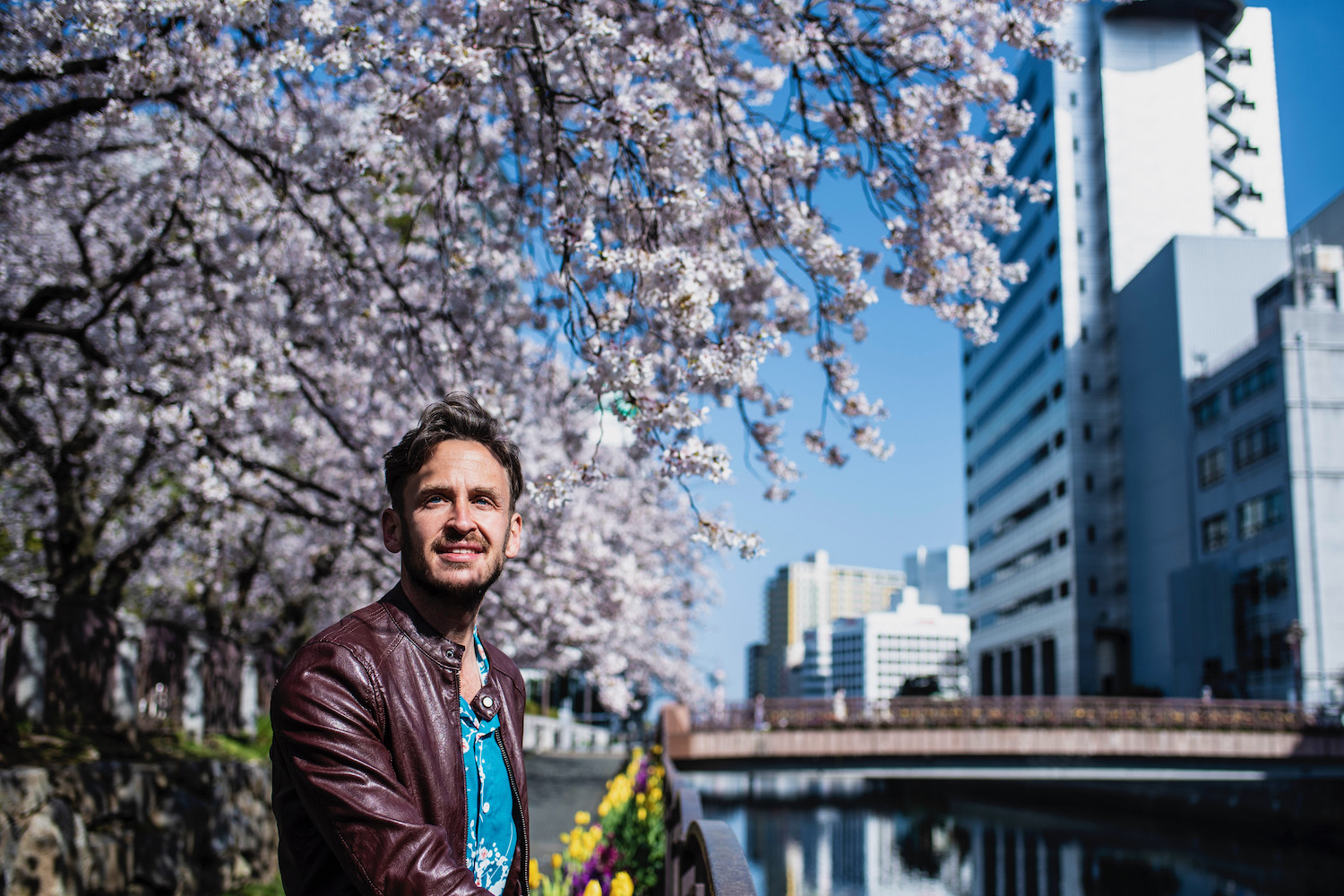
Most Kyushu travel starts in Fukuoka , especially if this is where you’re arriving in Japan. I love this city more every time I visit it, from the temples and shrines of the historical Gion district just west of Hakata Station , to the panoramic views of the city from Atago-jinja shrine, which rises above the coast, to the famous Fukuoka Yatai food stalls. I also enjoy taking day trips from Fukouka, be they ones more or less in the city like Nanzo-in ‘s reclining Buddha or the famous Dazaifu Tenman-gu shrine.
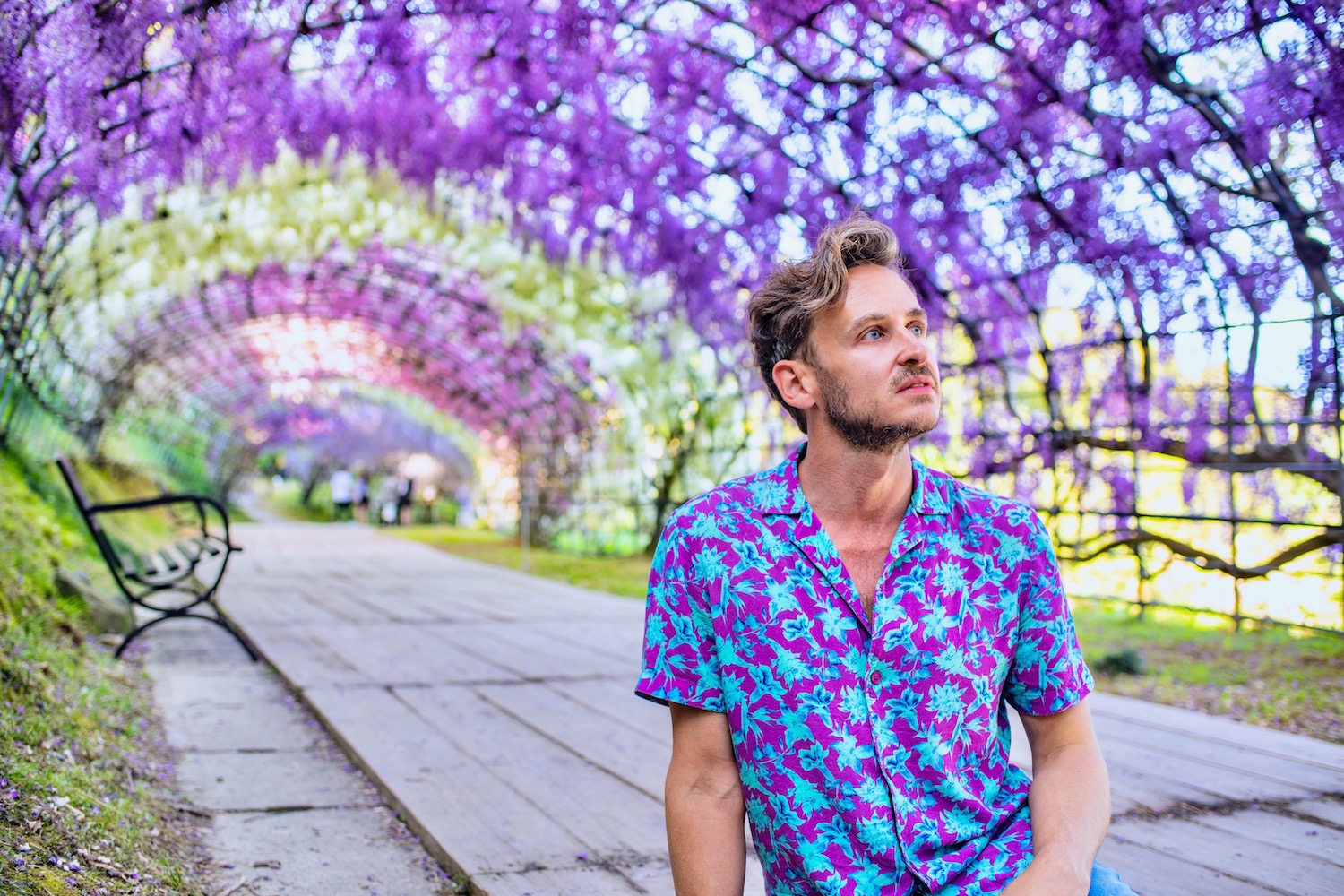
BONUS: Happen to be in the Fukuoka area in late April or early May? If you don’t mind renting a car (and rolling the dice on being there for “full bloom,” enter a world of pink and purple at Kawachi Wisteria Garden , a gorgeous park located on a hillside north of Kokura city.
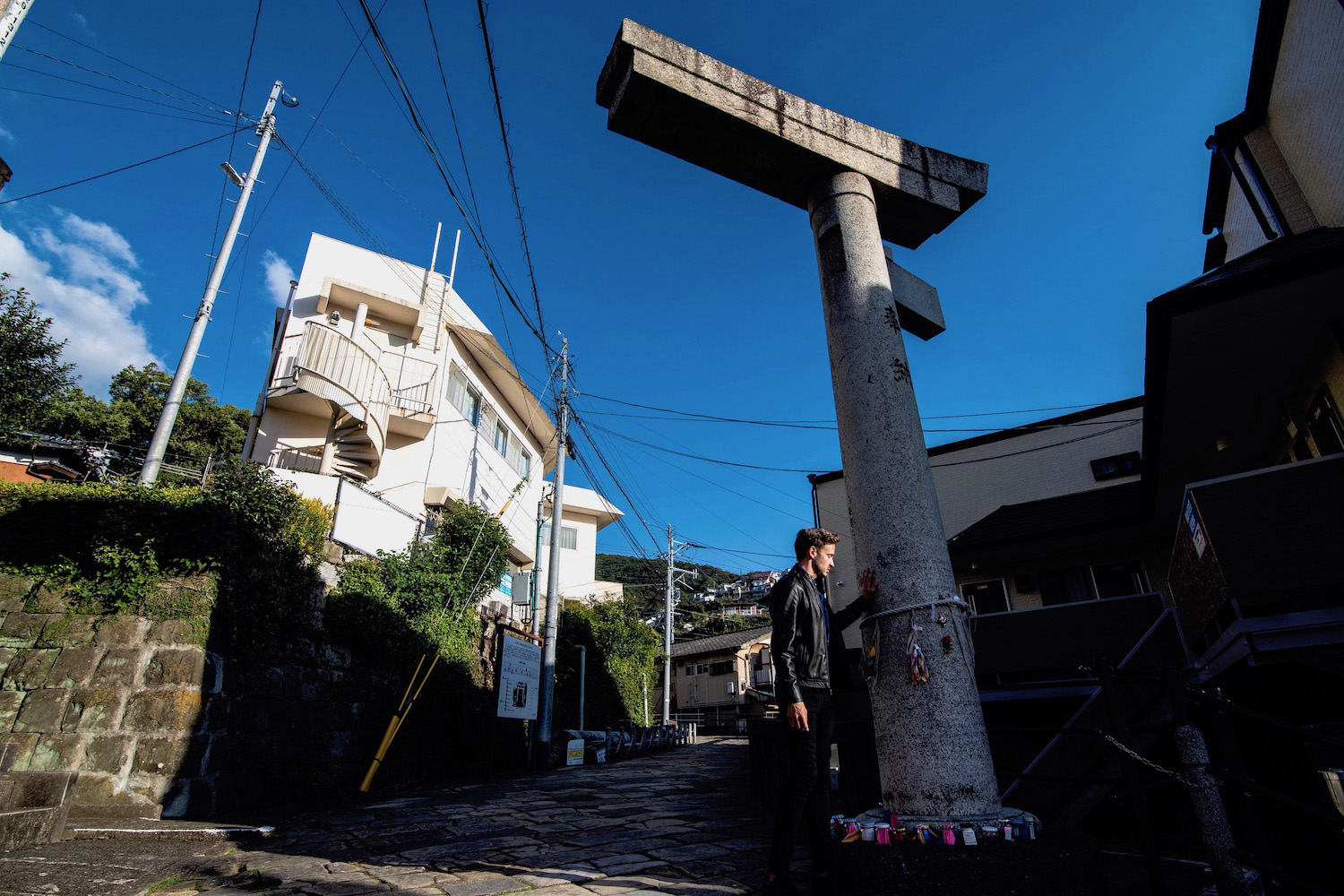
Nagasaki is one of the best places to visit in Kyushu—and not just because of World War II-era tourism sites, even if I find the area around Nagasaki Ground Zero to be very moving indeed. From the picturesque Oura Cathedral and Glover Garden in the southern part of the city, to the stunning panorama Mt. Inasa offers, Nagasaki is one of the most beautiful and eclectic cities in all of Japan—and not just Kyushu. Nagasaki also offers the opportunity to take several fascinating day trips, including to gorgeous Yutoku Inari Shrine and historical Yoshinogari Park , which re-creates like if the Yayoi era of ancient Japan.
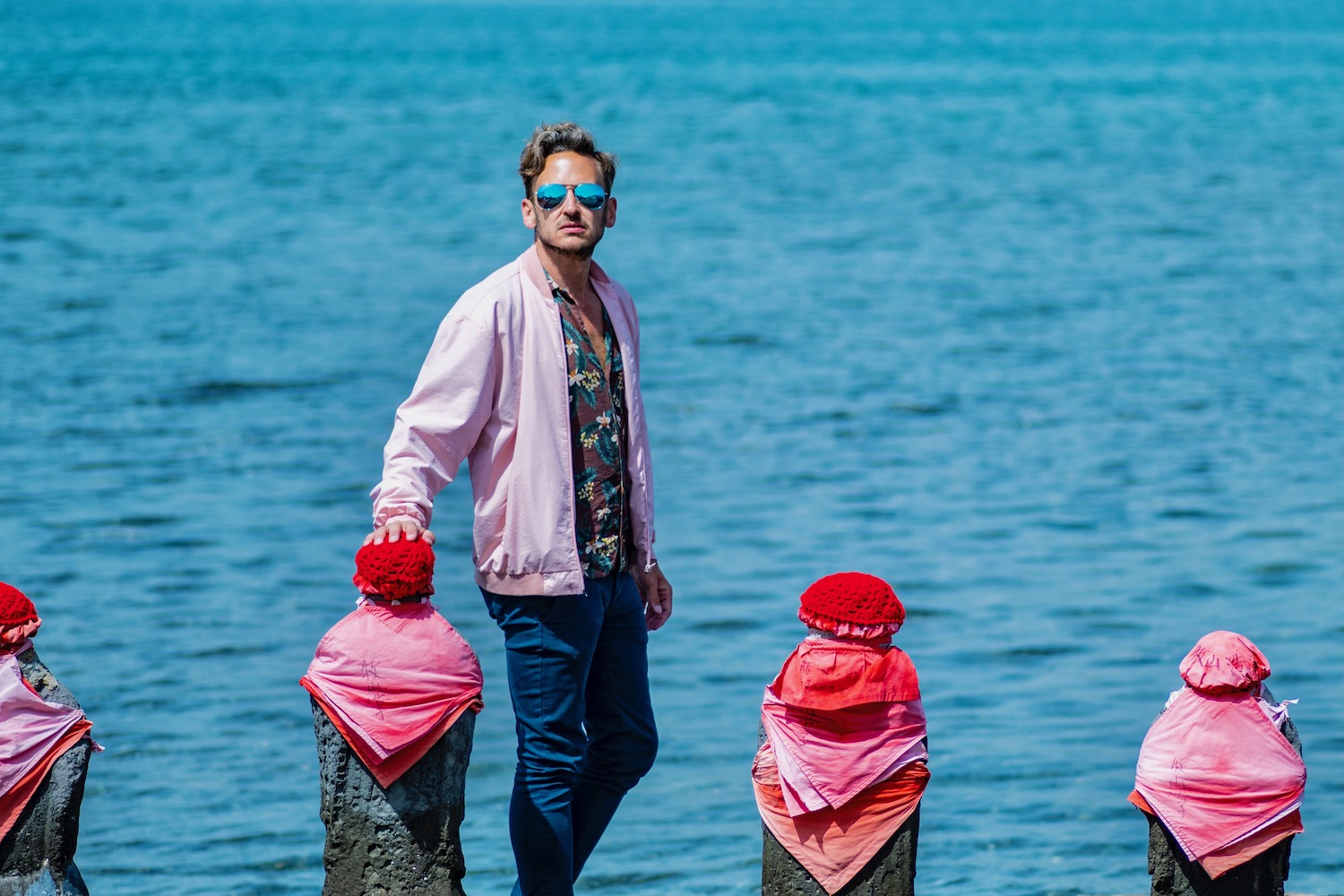
TIP: If you have a long time in Japan, or are just extra curious about Nagasaki, I highly recommend taking an excursion to the prefecture’s offshore islands. Pictured above, these include Ikishima , Tsushima and the Goto archipelago.
Kumamoto and Mt. Aso
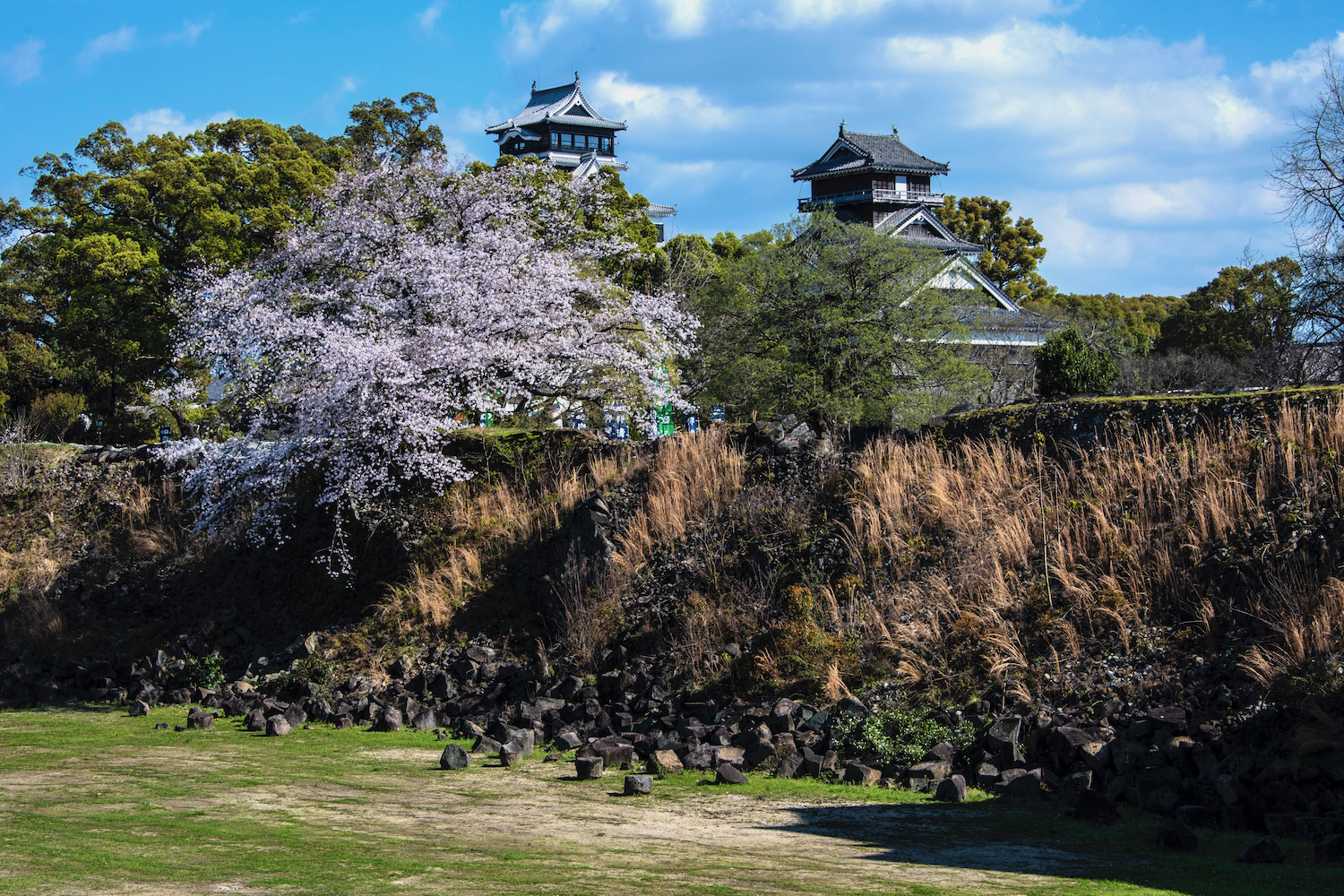
I’ll be honest: Before my latest trip, Kumamoto was not one of my favorite Kyushu destinations. I need to tell another truth, however, which is that I didn’t explore the city at the depth it deserves. While it’s difficult to deny the fact that Kumamoto Castle ‘s lingering damage is disappointing, I’d be remiss if I didn’t point out how amazing other destinations in the city are, from lush Suizenji Park to Honmyo-ji , a temple above which a towering park offers a stunning view of the city. Kumamoto is also the nearest major city to Mt. Aso , which is amazing either as a day trip to Mt. Aso from Kumamoto , an overnight excursion.
Oita and Beppu Onsen
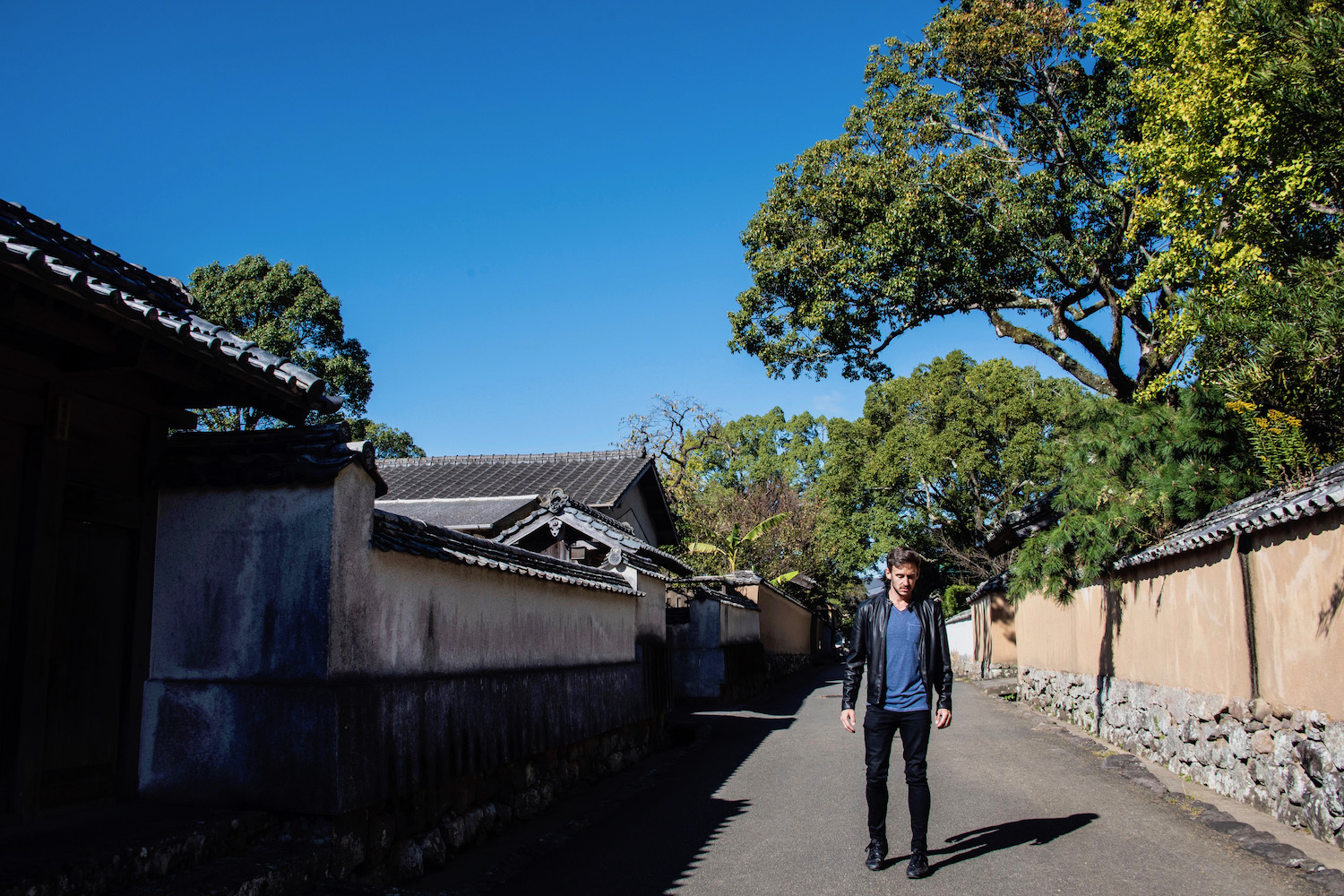
In the previous incarnation of my Kyushu travel guide, I focused largely on the Beppu Onsen hot springs you can actually swim in. During my latest trip, however, I got a chance to explore the Seven Hells of Beppu , with my favorites being Chinoike Jigoku (the “blood” hell) and Umi Jigoku (the “sea” hell). Another awesome part of my latest trip to Oita prefecture was renting a car and driving northward to the Kunisaki Peninsula , where destinations like the castle town of Kitsuki , Futago-ji temple deep in the forest and the vibrant Usa Jingu shrine surprised and delighted me.
Miyazaki and Takachiho Gorge
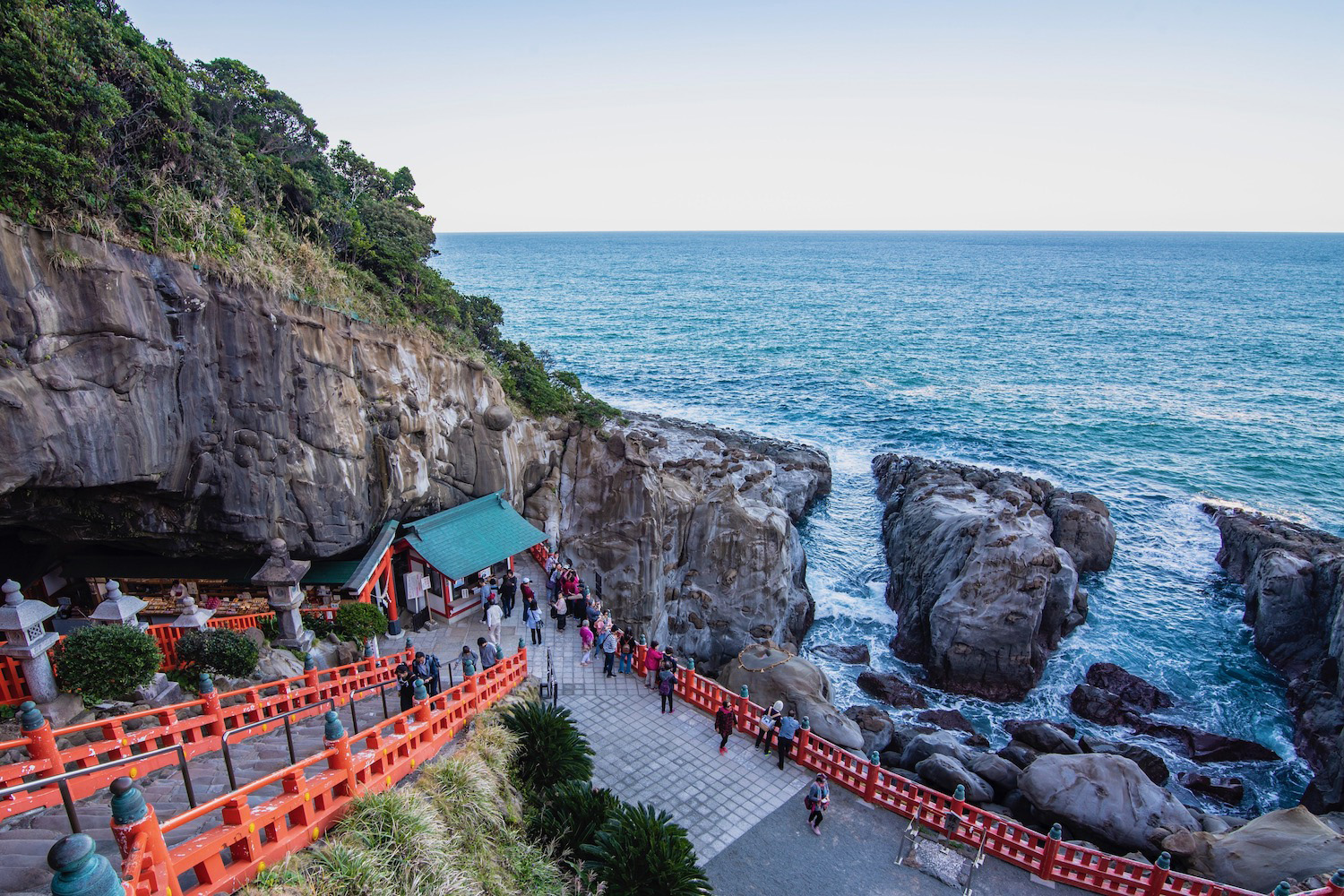
If you can time it right, the Takachiho Gorge in Miyazaki prefecture (which is not located particularly close to Miyazaki City , I should warn you— this day trip to Takachiho from Kumamoto illustrates that) is a great place to see Kyushu autumn colors. Even if you can’t, of course, this underrated part of southeastern Kyushu is very much worth a visit, if only because of Udo Shrine . Dedicated to Japan’s first emperor Jimmu, who launched his first military expedition from nearby Hyuga , it’s one of the best-kept secrets in all of Japan, not to mention one of the most gorgeous spots you can visit.
Kagoshima, the Satsuma Peninsula and Yakushima Island
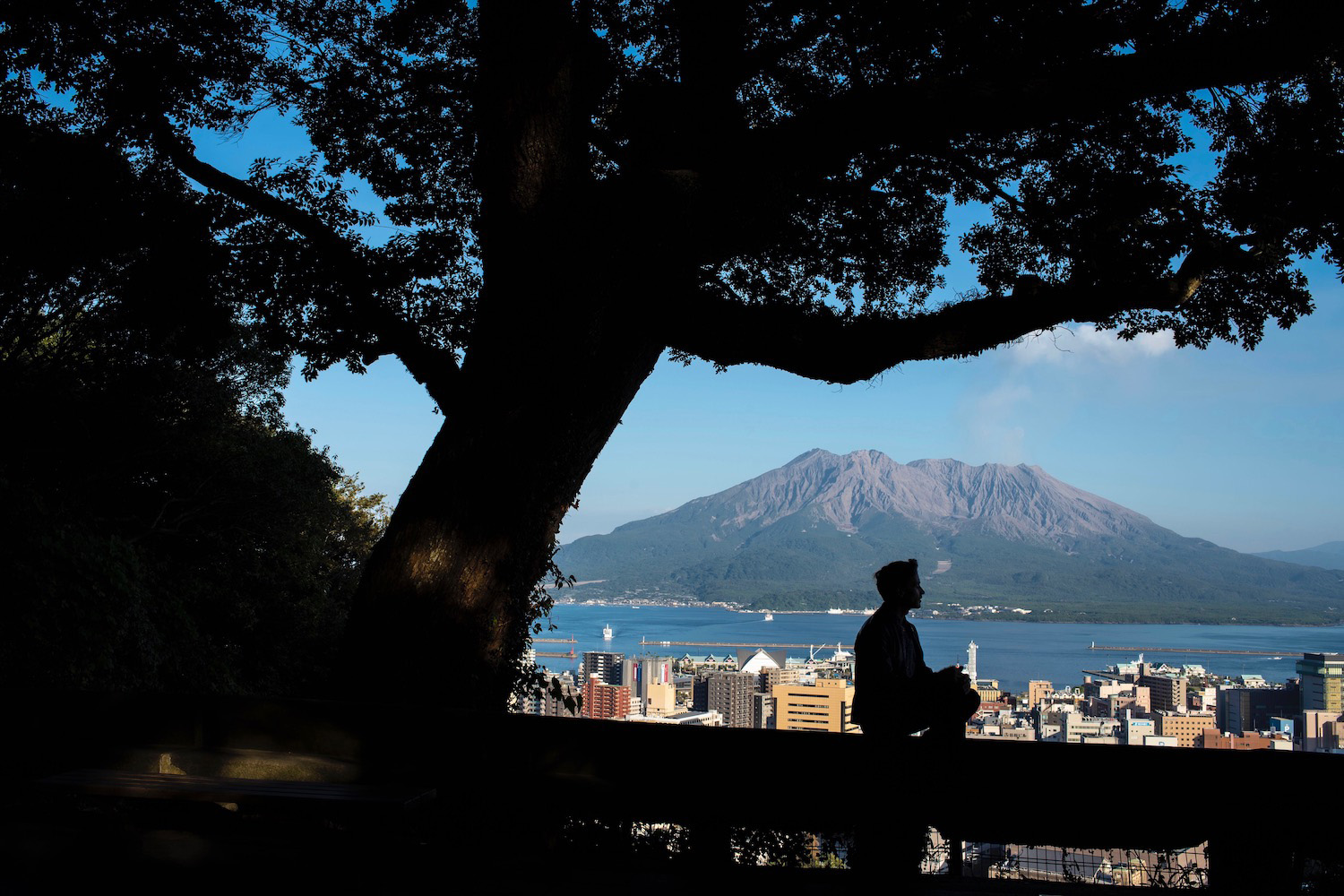
I didn’t intend to take a Kyushu road trip when I planned my November travel, but I ended up renting five separate cars. One of my favorite reasons for doing this was my day trip to the Satsuma Peninsula from Kagoshima . Spots like Chiran Samurai Village , the matcha fields of Ei , Cape Nagasakibana and the “sand bath” of Ibusuki provided the perfect foil to attractions within the city, from Sengan-en garden, to Sakurajima volcano, to Kagoshima’s answer to Fukuoka’s Yatai .
TIP: Have some extra time and want to take an excursion to somewhere absolutely otherworldly? Visit Yakushima Island , which is only two hours from Kagoshima by jetfoil ferry, but whose ancient cedars make it feel like somewhere else entirely!
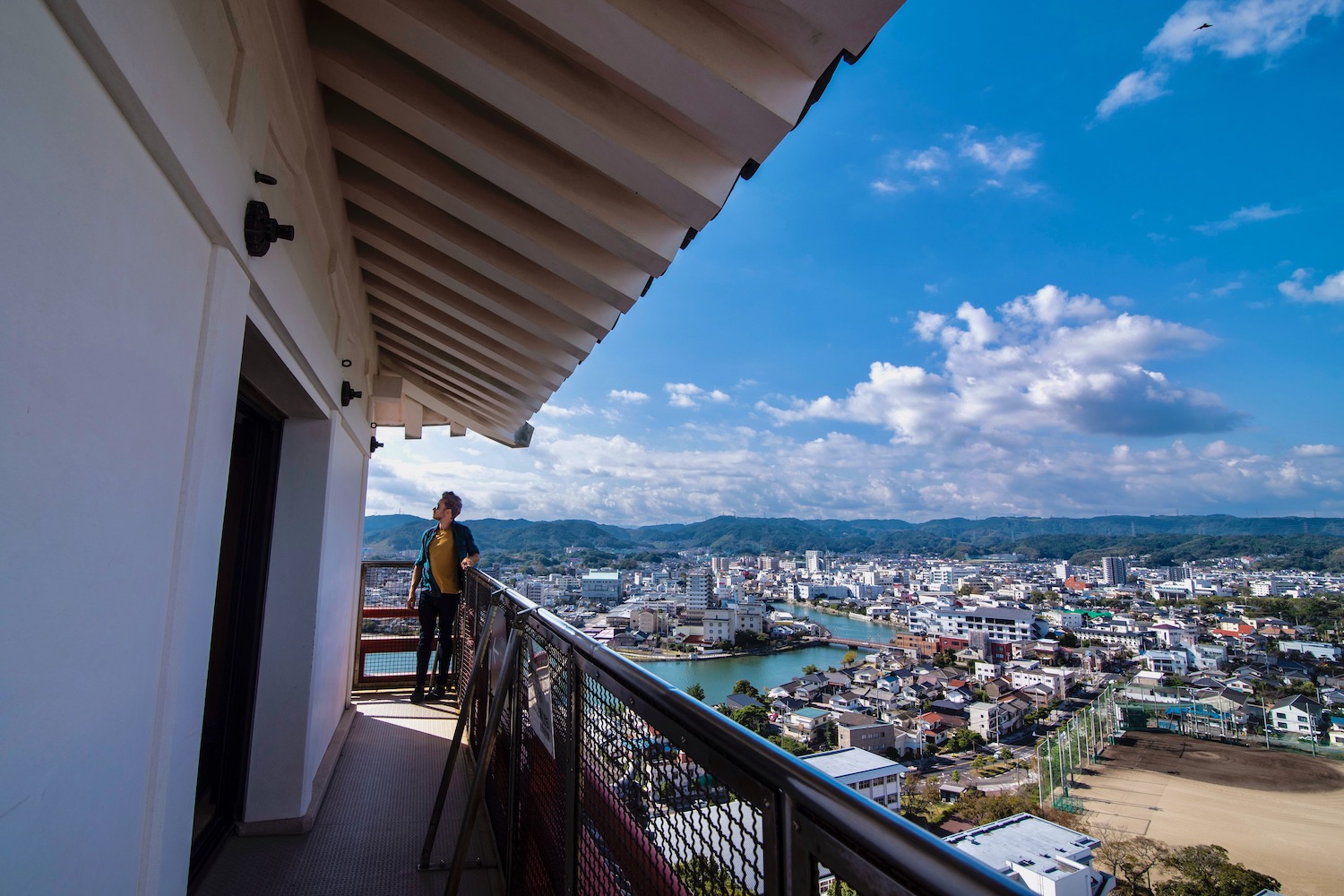
Kyushu’s (and, arguably, Japan’s) least-loved prefecture, Saga is a place that’s easy to miss, even though you’re likely to pass through it several times en route from one place to another during your Kyushu trip. Some of Saga’s top destinations are actually day trips from elsewhere in Japan, be that Karatsu Castle (from Fukuoka) or the Yoshinogari historical site and Yutoku Inari Shrine , which are accessible from Nagasaki. More purpose-driven travelers will appreciate the pottery town of Arita and the Oura Rice Terraces , which in my opinion are the most impressive in all of Japan.
How Long Should You Spend in Kyushu?
Regardless of why you decide to travel Kyushu or where you plan to go during your trip, I would generally say you should aim to spend as long in Kyushu as possible—things (and trains!) move slower here than they do in Honshu, which means you can’t fit quite as much into such a short amount of time as you might do elsewhere in Japan. In general, I’d say that one week in Kyushu or 2 weeks in Kyushu is a “Goldilocks” length of trip, which will afford you the opportunities to blend city experiences, natural adventures and maybe even a couple of wild cards.
Another factor affecting how many days in Kyushu, of course, is what your larger trip to Japan will look like. If, for example, you take a dedicated Kyushu trip like I recently did, you can afford to spend longer here. On the other hand, if Kyushu is one component of a more comprehensive Japan trip (I’m thinking two weeks in Japan , or perhaps even one month in Japan ), then a few days or a week is likely the longest amount of time you’ll be able to spend in Kyushu.
Is Kyushu Worth Visiting?
This one is easy, though there is some nuance I’ll speak too. On one hand, I would not have written a Kyushu travel guide (and traveled to the island so many times, including on my recent deep dive) if I didn’t feel Kyushu was worth visiting. On the other hand, there are a lot of misconceptions about this island, and one overarching truth: Most people simply don’t know a thing about Kyushu, apart from the existence of cities like Fukuoka and Nagasaki and maybe, the fake spa-musement park in Beppu .
Obviously, my hope is that if you’ve read my guide this far, you’ll be so excited about things to do in Kyushu at this point that literally nothing will be able to keep you off the island. Absent this, I’m not sure what I can say to convince you, other than to re-affirm my love for this island, and the fact that every time I’ve traveled here (I’m at three or four trips now, if I’m not mistaken) I crave a future opportunity to delve even deeper into it.
Other FAQ About Travel to Kyushu
When should i go to kyushu.
I love to go to Kyushu (which is already less crowded than hot spots like Tokyo or Kyoto, even in busy times) during the “shoulder” months like May and October. The good news is that no matter when you travel, much of the advice I present in this Kyushu travel blog will be relevant.
What is famous in Kyushu?
Kyushu is famous for the ramen of Hakata in Fukuoka, the atomic-bomb related sites in Nagasaki, Kumamoto Castle and the onsen hot springs of Beppu. To start with, anyway—as you’ve seen throughout this Kyushu travel guide, Kyushu is a land of treasures.
What is the climate of Kyushu?
Kyushu’s climate is defined by a mild, sunny winter, a hot and very rainy summer, and a spring and summer season that can go either way. Regardless of when you visit, you’ll want to make sure you curate things to do in Kyushu you can enjoy irrespective of the weather.
The Bottom Line
The extent to which you enjoy your Kyushu travel correlates directly with how deeply you can explore the island, although this isn’t necessarily tied to specific length of time. Ideally, you’ll be able to travel for at least a week in Kyushu, pairing urban experiences in large cities like Fukuoka, Nagasaki, Kumamoto and Kagoshima with nature (Mt. Aso or Yakushima island), culture (hot springs in Beppu or the Udo Shrine in Miyazaki) or something else entirely. Need personalized help planning your Kyushu adventure? Commission a custom Japan itinerary today!
Plan Your Japan Trip

Subscribe to email updates!
Words, images and design ©2018-2024 Robert Schrader, All rights reserved. Read Privacy Policy or view sitemap .

30 Awesome Things To Do In Kyushu, Japan: The Ultimate Guide
Jackson Groves
Posted on Last updated: June 24, 2023
Categories JAPAN
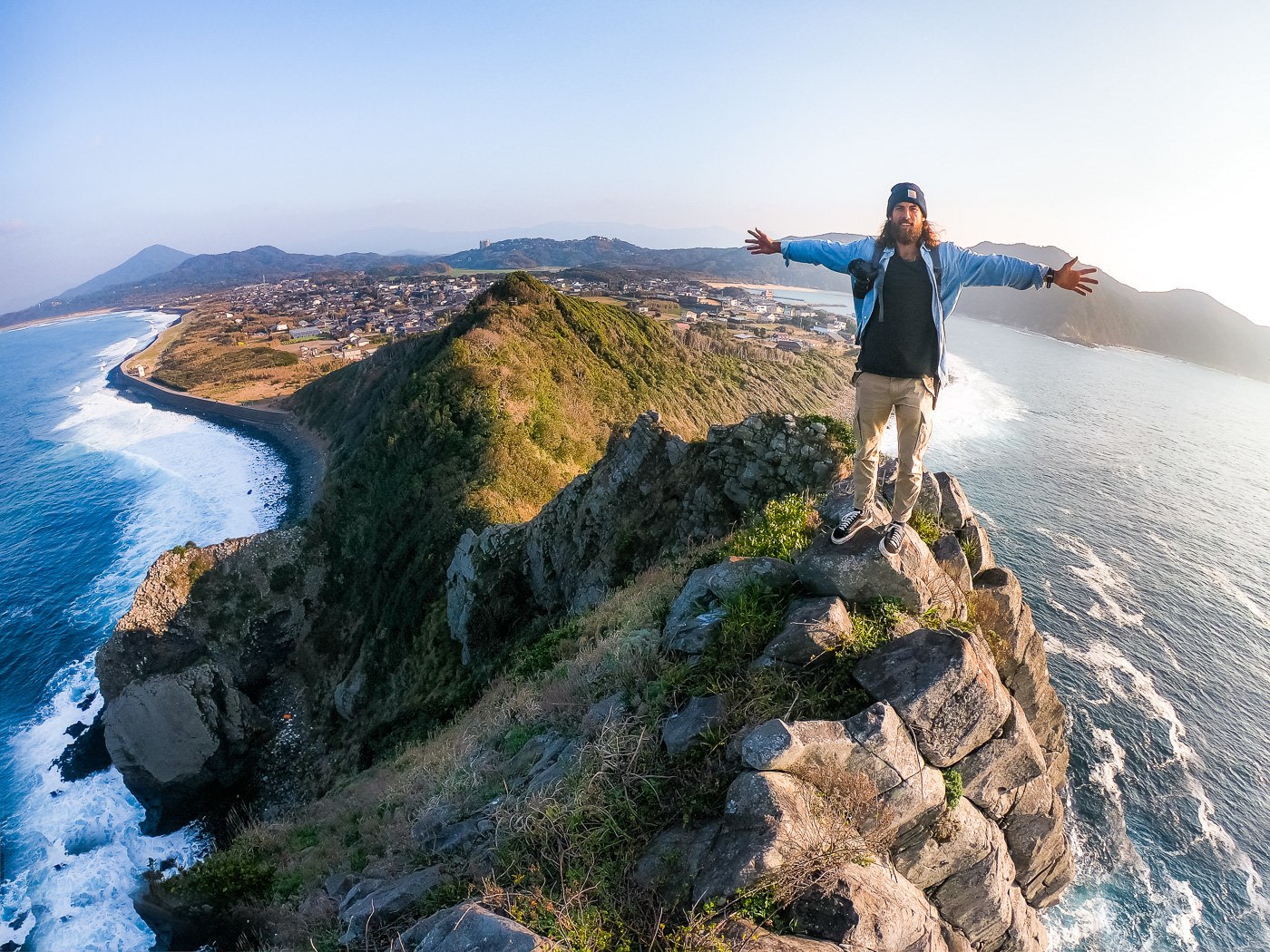
Kyushu is a volcanic island in the south of Japan with some pretty epic coastlines, incredible waterfalls, and several towns that are renowned for their volcanic hot spring activity. Kyushu is a great region for those who enjoy an adventure like to delve into the culture and get a little bit off the beaten path. I spent three weeks exploring the island of Kyushu by car and in this blog post, I will share with you my favorite 30 things to do in Kyushu based on my experience.
BEST RENTAL CAR COMPANY IN JAPAN
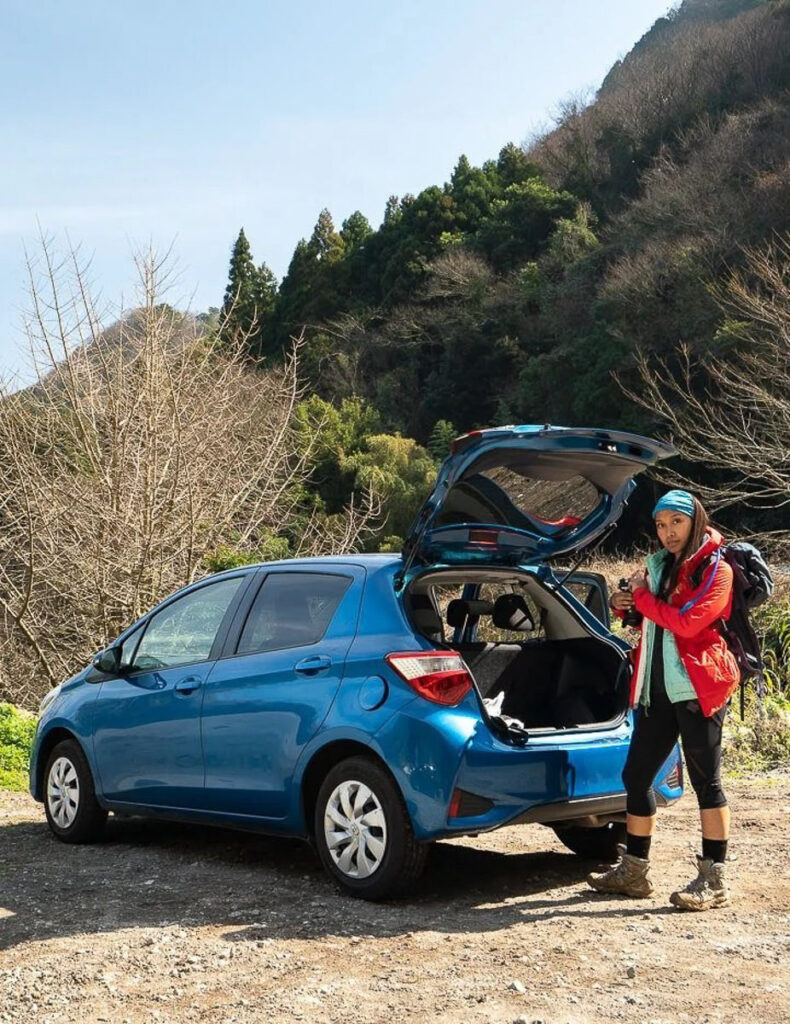
When you book your Rental Car online, I personally recommend and always use Klook for car rentals in Japan. They search for both local and international companies, so you get the best deal!
Table of Contents
30 AWESOME THINGS TO DO IN KYUSHU
I’ve written individual guides for many of the specific locations in this article, which means you can click on the link and view the detailed guide for each individual location, which includes how to get there, all the photos, and what to expect. At the bottom of this post, I will add a few sections of things you need to know before exploring Kyushu such as how to get around, where to stay, and other logistical and travel tips to help you out before your visit.
TOP 3 PLACES TO STAY IN KYUSHU
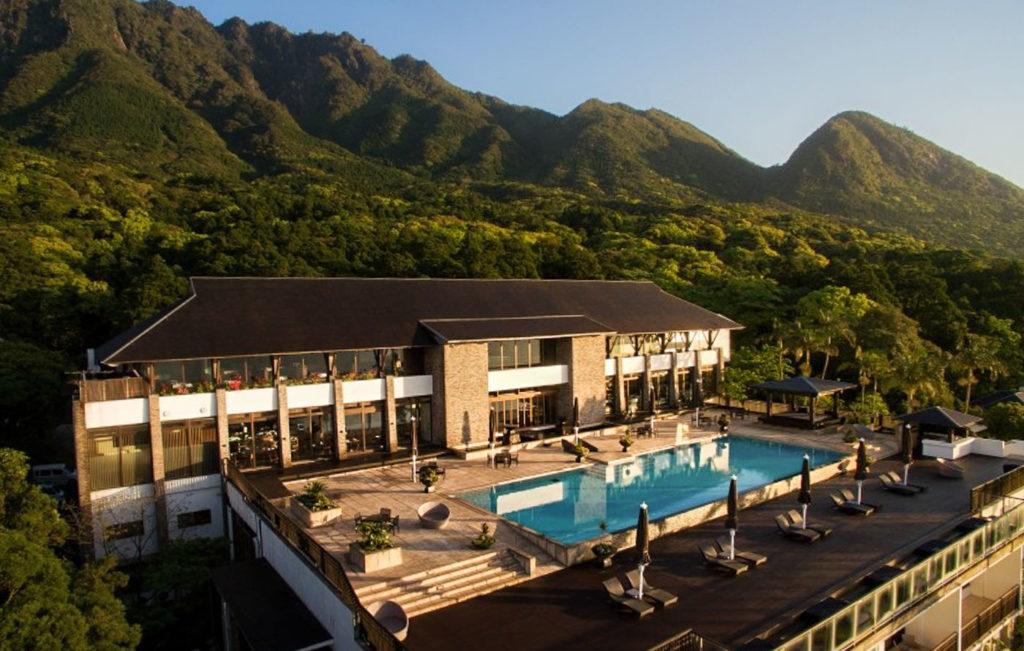
- Ultimate Luxury: Amane Resort Seikai best location and view
- My Favorite: Sankara Hotel & Spa – Natural Forest, Pool & Beautiful surroundings.
- Budget Hostel in Kyushu: WeBase Hakata Hostel is easily the top hostel in Kyushu
ONBARA FALLS
The journey to Onbara Falls is a very, very short trek but will remove you from the town of Beppu and immerse you in the jungle making you feel lost beneath the falls. Onbara Falls is a bit of a hidden gem just outside the town of Beppu in Oita Prefecture of Kyushu, Japan. Beppu is one of the most famous Onsen towns in Japan and even the world. However, amidst all of the hot springs and Onsens are some truly epic waterfalls and Onbara Falls is up there with the most beautiful and most accessible.
The trail is short and well-defined with a dirt/rock path leading you up to the falls. With the morning sun shining through it was actually a beautiful little walk, which is only about 2km return.
Read the full blog post for details: ONBARA FALLS IN KYUSHU, JAPAN
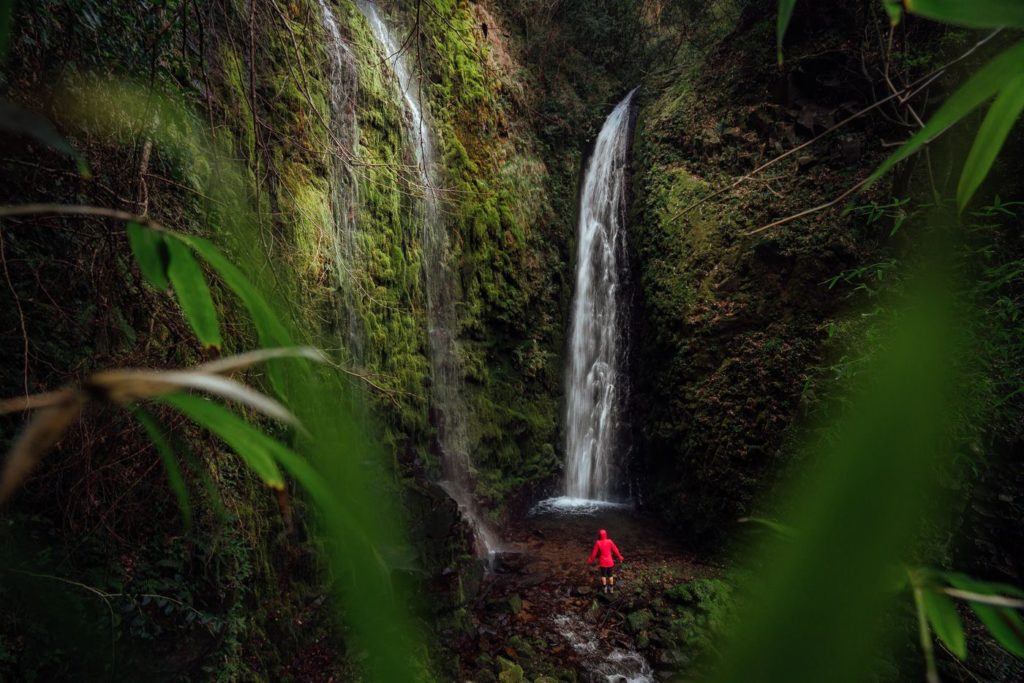
HIKING TO MOUNT KARAKUNI IN KIRISHIMA
Mount Karakuni is the highest peak in the Kirishima Mountain Range of Kyushu Island in Japan with a height of 1,700 meters. Mount Karakuni has a volcanic crater, which is 900 meters and 300 meters deep. The hike up from the visitor center is relatively short with just a few kilometers in distance but quite steep. From the summit, you can look over to the ‘Ring of Fire’, which is the off-limits
The total hike distance for me was 9.6km for my entire lap of the Kirishima area but there are many ways to make it shorter. If you just go up and down Mount Karakuni from the visitor center it will be about 5-6km in total. I added on the lap of Lake Rokkannonmiike and Lake Byakashiike.
Read the full blog post for details and all photos: MOUNT KARAKUNI HIKE (KARAKUNIDAKE) IN KIRISHIMA
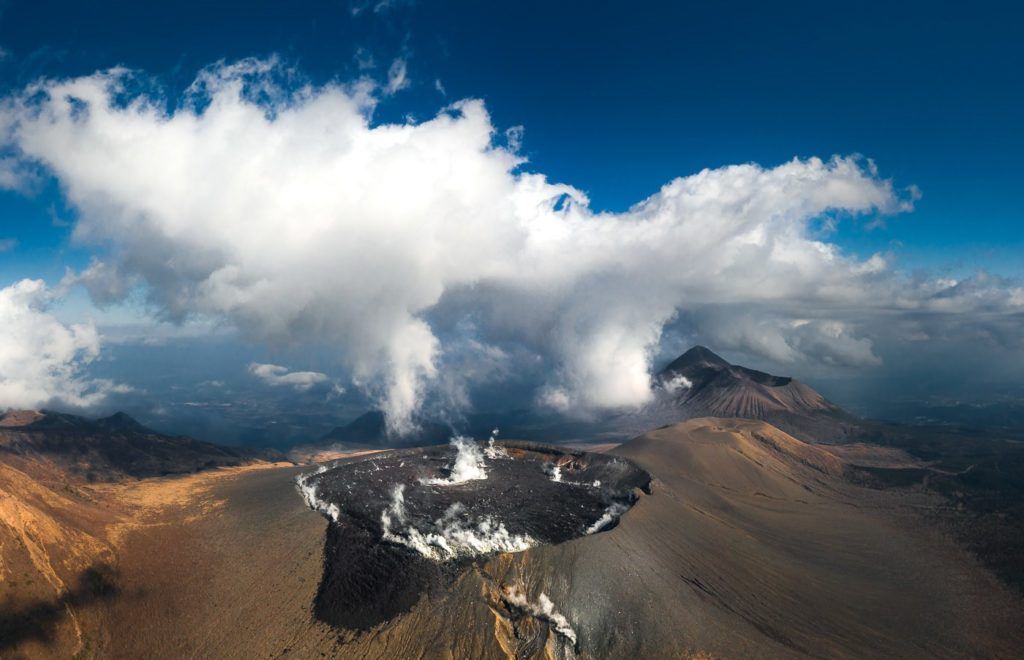
MOUNT TAHARAYAMA
The Mount Taharayama hike leads you on a steep ascent up to an epic, rocky ridgeline before you descend down into the forest to discover a 10th century stone buddha carving into the cliff wall. It’s an adventure with a tomb-raider vibe and is definitely sure to have you off-the-beaten-path and out there amongst the adventure in the Oita Prefecture of Kyushu Island, Japan.
Read the full blog post for details and all photos: MT. TAHARAYAMA HIKE TO KUMANO MAGAIBUTSU (BUDDHA STATUE)
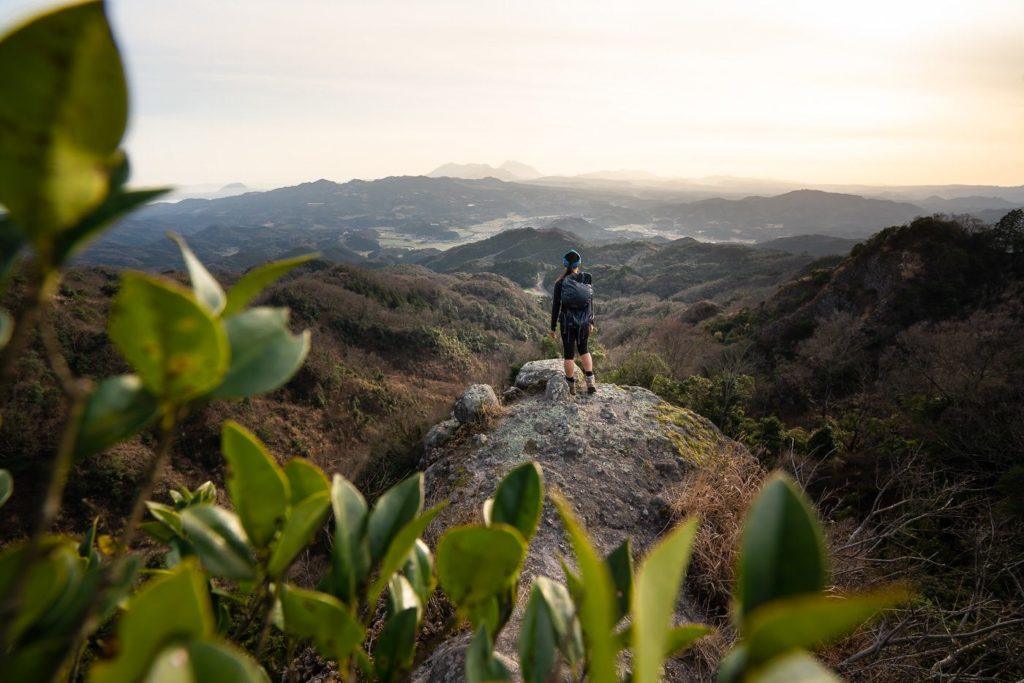
INUKAI FALLS
Inukai Falls was probably my favorite waterfall that I visited while based in Kirishima. It was a booming waterfall but I really loved the gorge that led up to the falls, which was lined by woodland and forest giving it a Pacific Northwest vibe. I actually had to wait a while here for the fog to clear enough to see the falls but when it cleared a little, I was able to record a little video on the drone to show you just how epic this gorge is.
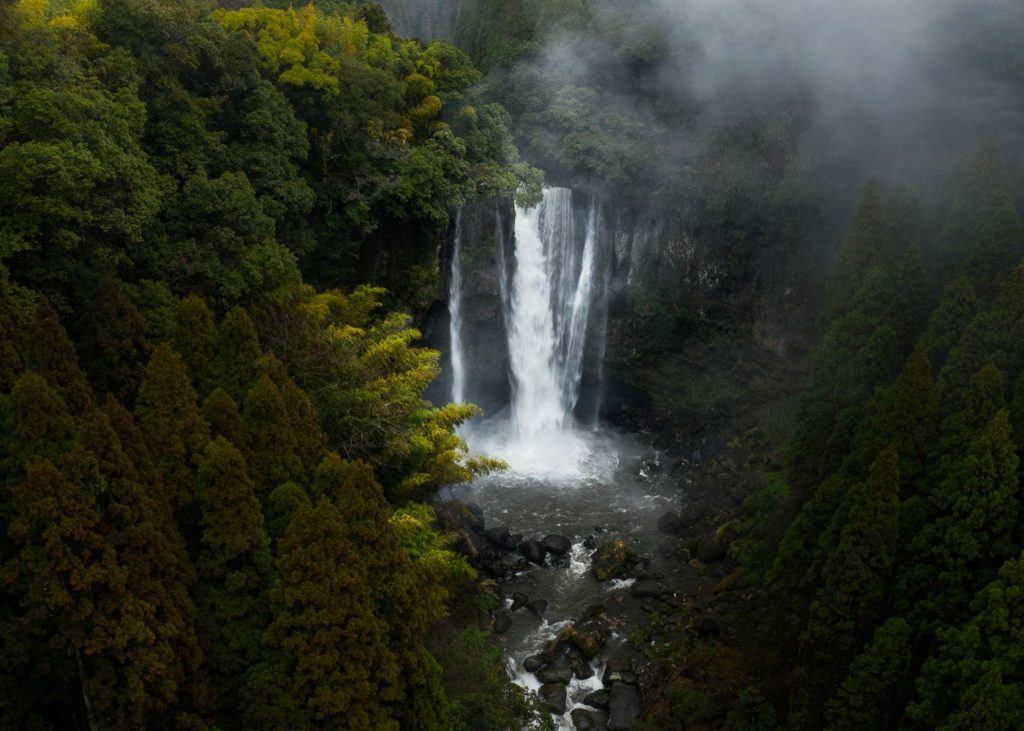
HIKE MOUNT ASO
In the Aso region of the Kumamoto Prefecture in the center of Kyushu Island is the Mount Aso region, which is one of the largest calderas in the entire world. Hiking in Mount Aso Region is one of the most incredible adventures you can have in Japan. Mount Aso is a volcanic depression, which is essentially a huge crater that has a number of peaks within this region that can be trekked. There are numerous craters within the crater such as the very active Nakadake Crater.
The Caldera spans 17 kilometers from east to west and 25 kilometers from south to north with a total area of 350 square kilometers. When we talk about this caldera it is a huge area but at the center of the caldera is where all of the action is when it comes to volcanic activity, hiking, the museums, and tourism. In the middle of the caldera is the central crater group which consists of the five Aso peaks which are Mt. Taka (Takadake), Mt. Naka (Nakadake), Mt. Eboshi (Eboshidake), Mt. Kijima (Kijimadake) and Mt. Neko (Nekodake).
I hiked all of the peaks except for Kijima. The Nakadake and Takadake loop (when open) is my favorite hike in Kyushu… by far. It looks down on the active volcano crater and makes you feel like you are in outer space or trekking through a post-apocalyptic world.
Read the full blog post for details and all photos: HIKING MOUNT ASO VOLCANO – A COMPLETE GUIDE
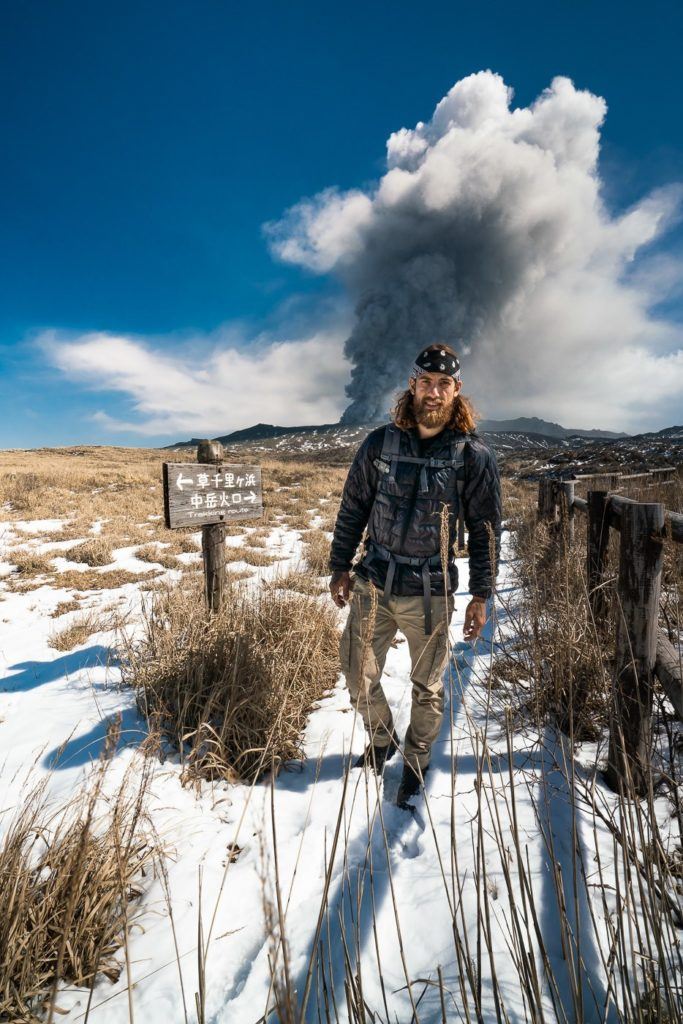
BEST INSURANCE FOR TRAVELERS

Don’t wait for an accident to happen… get insured! My travel insurance is HeyMondo which offers low-cost travel & medical insurance. That’s me on the left with three teeth knocked out after a motorbike crash in Bali!
You can click to read my Full Review of the Best Travel Insurance .
I’ve made several successful claims with HeyMondo and find their customer service very quick and helpful. Click the button below to get a 5% DISCOUNT
NABEGETAKI FALLS
Found on the border between Oita and Kumamoto, Nabegataki Falls is one of the most impressive waterfalls on the island of Kyushu in Japan. With hundreds of waterfalls on Kyushu, what makes this one so special? You can actually walk behind the wide cascade, underneath the rock face that the waterfalls pour down over. It’s a pretty magical spot.
I did my best to shoot the waterfall without any tourists but it is quite difficult as most people do a little lap underneath the waterfall viewing it from in front, each side and behind. It’s a bit of experience and going behind the waterfall was super cool. The waterfall itself is only 10m high but spans 20m across in width and pours down over the ledge, which is what makes it so unique.
Read the full blog post here: NABEGATAKI FALLS IN KYUSHU
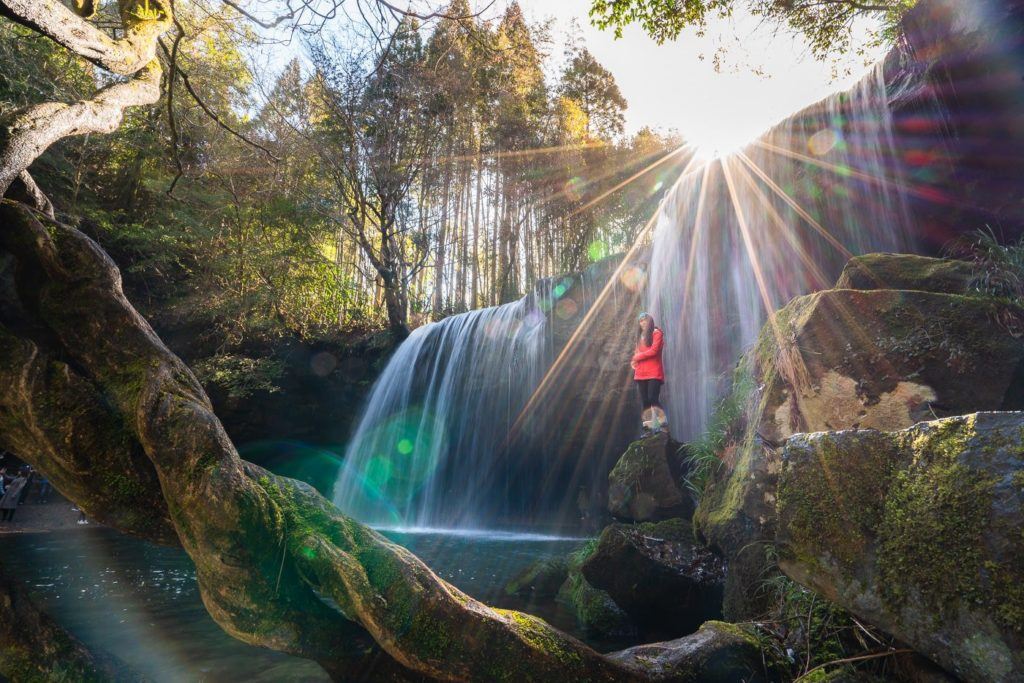
MOUNT EBOSHI HIKE
Mount Eboshi is one of the five peaks of the central cone group of the famous Mount Aso. It’s the easiest peak and probably the safest peak to climb taking just over an hour to get up and down from the summit. The view from the top is quite remarkable as it looks out over the Nakadake Crater, which is where the active volcano of Mount Aso is found.
The Mount Eboshi hike is a great little trail not because of the views or the adventure but because it is usually open! Because Nakadake Crater and the active volcano within it are often spewing ash high into the air, the surrounding trails are often closed. This leaves adventurous hikers feeling a bit stuck. Luckily Eboshi is a bit further away but you still have nice views of the erupting volcano.
At the summit, you have a view out to Nakadake Crater, which is where the eruptions, smoke, and all the action takes place. In the other directions, you can witness the entire caldera and the various rock formations and craters that are scattered throughout the region. I visited Mount Eboshi as part of the ‘ Around Aso Tour ‘, which was the perfect way to explore this region on a full-day trip from Fukuoka.
Read the full blog post for details and all photos: MOUNT EBOSHI HIKE (EBOSHIDAKE) IN MOUNT ASO
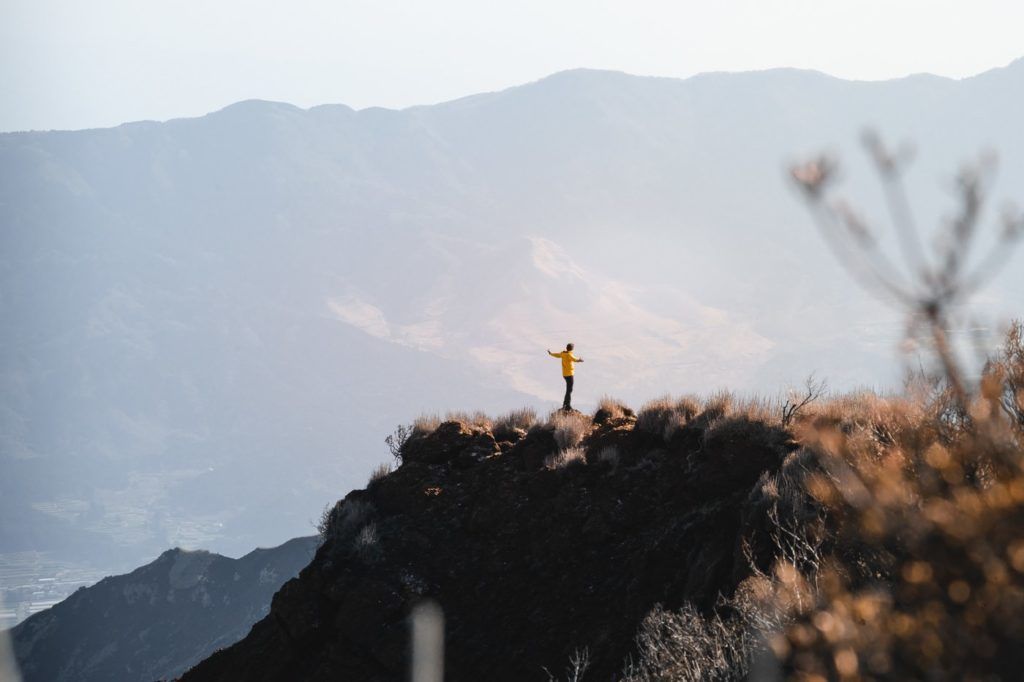
HIGASHI SHIIYA FALLS
Higashi Shiiya Falls is a pretty epic waterfall just out of Beppu Town. When you arrive you will park in the parking lot of the information center and pay your entrance/parking fee and then make the 800m along the river and through the gorge to reach the waterfall. It’s a really pretty walk and I can’t imagine how scenic it would be with the fall colors. At the end of the gorge is a massive waterfall flowing into a giant circular pool.
MOUNT NEKO (NEKODAKE) HIKE
Mount Neko is the second tallest peak in the Mount Aso region at 1,443m high for the Tengu Peak and the opposite Toho Peak is 1,408m high. It’s called Nekodake because from Aso it looks like two cat ears when you see both of the peaks. It was an awesome but steep hike and the jagged peaks were just incredible at the summit during sunset.
As well as the numerous ropes to help you up the summit of Nekodake, you will also encounter several ladders, helping you ascend through the forest. None of the ropes, ladders or bouldering is technical or very difficult but be prepared for a bit of action along the trail.
At the summit, you will look out across to the Tengu Peak, which is the most prominent peak and you really can’t miss it. In the late afternoon, the sun sets behind this peak so it’s a really magical spot to take in the whole ridge.
Read the full blog post for details and all photos: MOUNT NEKO HIKE (NEKODAKE) IN KYUSHU
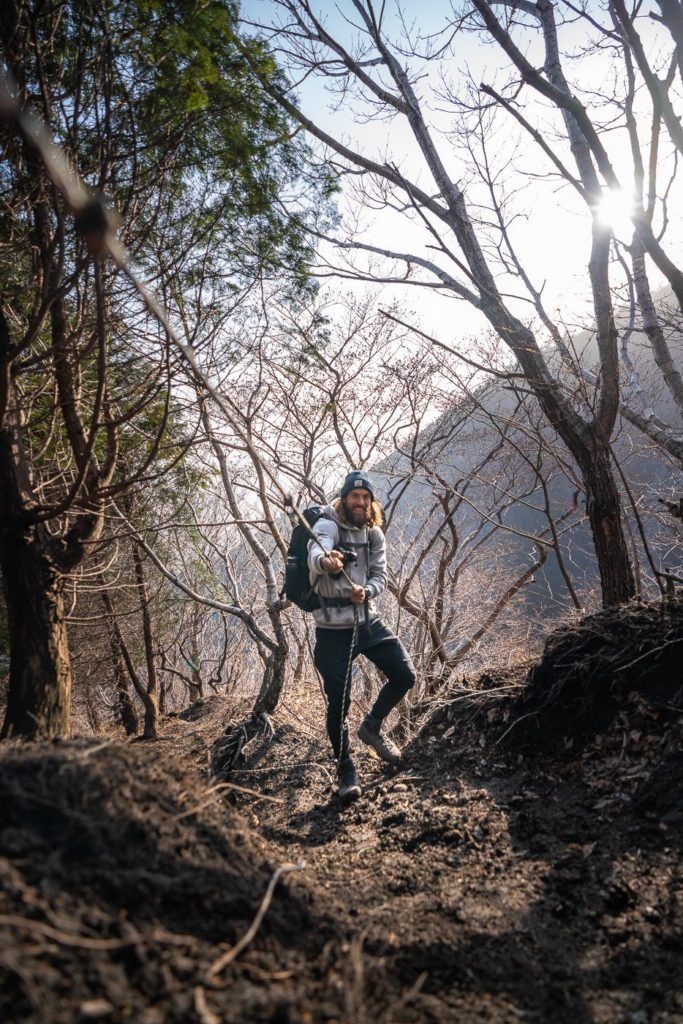
What are my favorite pieces of travel gear?
There are four pieces of gear that I simply never travel without. These are four items that I using right now and this list gets updated every year! Here are my travel essentials.
- Packing Cube Set : Once you cube you’ll never go back. Organize your clothes within your luggage with these smart mesh containers. It will revolutionize your packing.
- Quick-Dry Towel : A quick-dry towel is a must for travelers. It hardly takes up any room and dries in seconds.
- Travel Wallet : Keep your passport, wallet, and vaccine card safe as well as any forms and important documents you need to store.
- Grayl GeoPress Water Filter Bottle : I’ve used this for three years. It filters your water with one press and you can drink directly from it. Never buy a plastic water bottle again!
GOROGA TAKI FALLS
The Gorogotaki Waterfall is the largest falls in Yamato, Kumamoto with a 50m drop into the basin below. The beauty of this waterfall on Kyushu Island is that often it is crowned by a rainbow as the water crashed down onto the rocks, spraying up and catching the light perfectly in a stream of color. My favorite part about this waterfall is that you view it from the suspension bridge. There is also a really nice walk around the region through the rice fields and through the gorge to the base of the falls.
Read the full blog post here: GOROGOTAKI WATERFALL NEAR KUMAMOTO
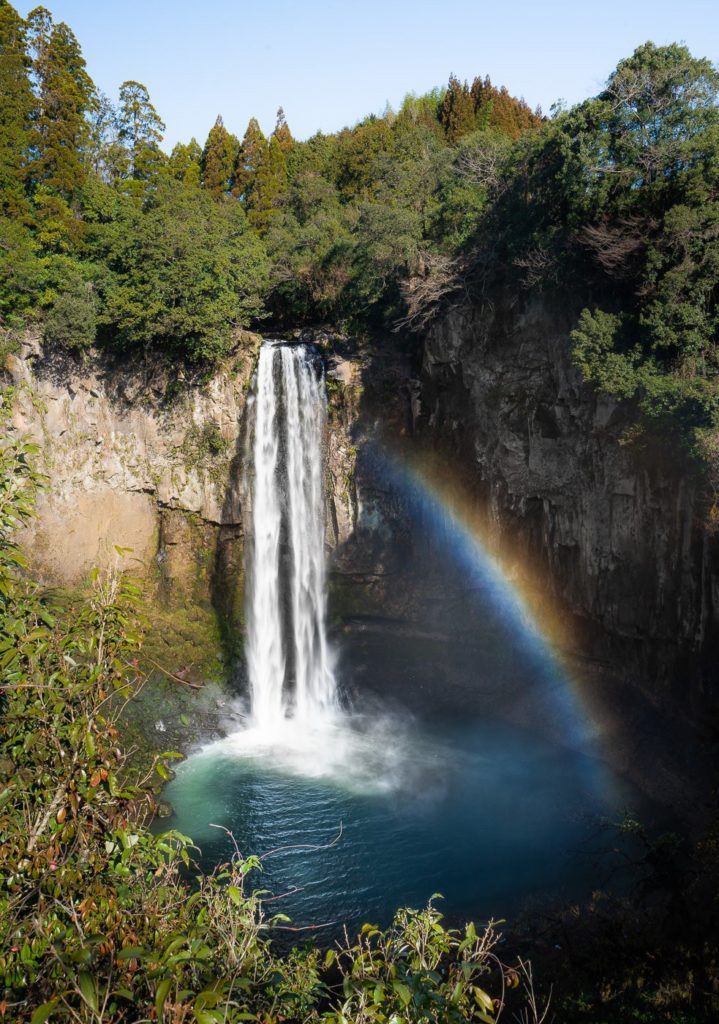
DAIKANBO VIEWPOINT
Daikanbo Viewpoint is probably the most impressive views in the Mount Aso Region with epic views across the valley within the caldera to the active volcano within Nakadake Crater. There are lots of little trails and a number of viewing platforms to explore at the viewpoint. It can be a great spot for sunrise on a day with low-lying fog so if you are good at weather predictions try and make that happen. I visited when the grass was dead in the winter but the colors change all throughout the year.
HIKING IN THE KUJU MOUNTAINS
The stunning Kuju Mount range is part of the Aso-Kuju National Park and while Mount Kuju might be the most famous it is actually the nearby Nakadake Peak that is the highest peak in the park, which makes it the highest point on Kyushu Island. These mountains are connected by a series of hiking trails so you can kind of make it up as you go, pushing on to ‘one more peak’ time and time again or follow a set route. I did a bit of both.
It’s straight up from the get-go so don’t put too many jackets on you will be working that incline straight away. Once you reach the ridge it’s time for the adventure to start. The trail turns into a rocky ridgeline with a number of ladders and some very low-key bouldering required.
The total day of climbing was 1,026m so it’s always an effort when you grab a vertical kilometer. The trail was rocky but quite well defined and we never had too many difficulties finding our way. At the top of Mount Kuju we could watch over the erupting Mount Aso in the distance and admire the valley below.
Read the full blog post for details and all photos: HIKING THE KUJU MOUNTAIN RANGE
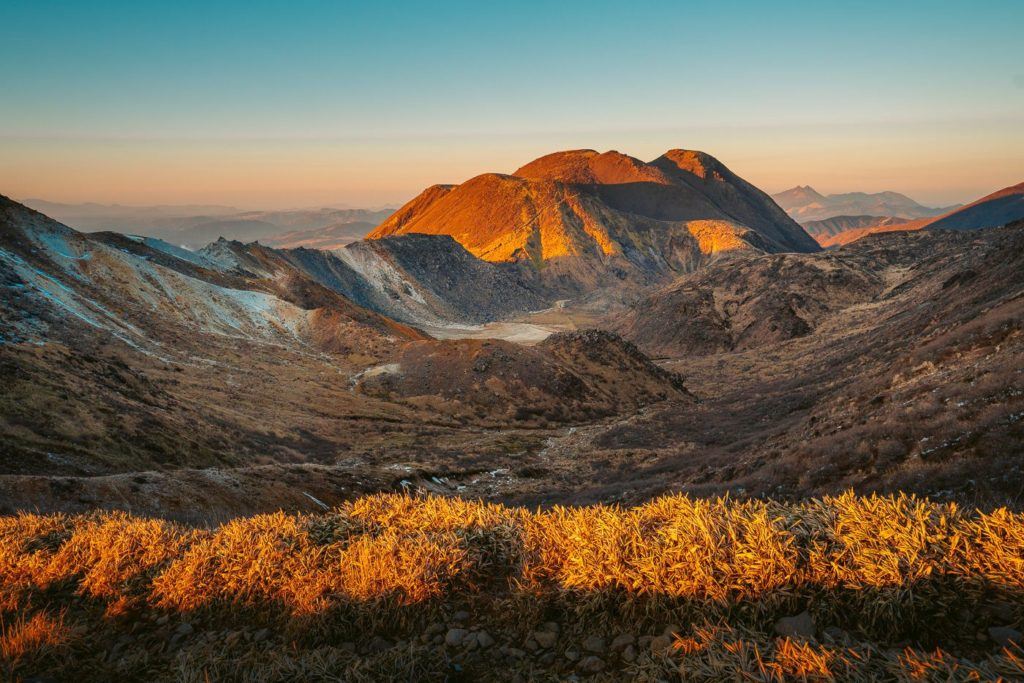
SHIRAITONO FALLS
Hidden in the foothills on the way to Mount Aso region on the way from Kumamoto is Shiraitono Falls. It isn’t a hike or a big adventure and you can actually just drive and park only fifty meters away from the waterfall. The golden light was hitting the waterfall in the late afternoon, which created an epic little scene where everything was in shade except for the golden stream of water flowing down.
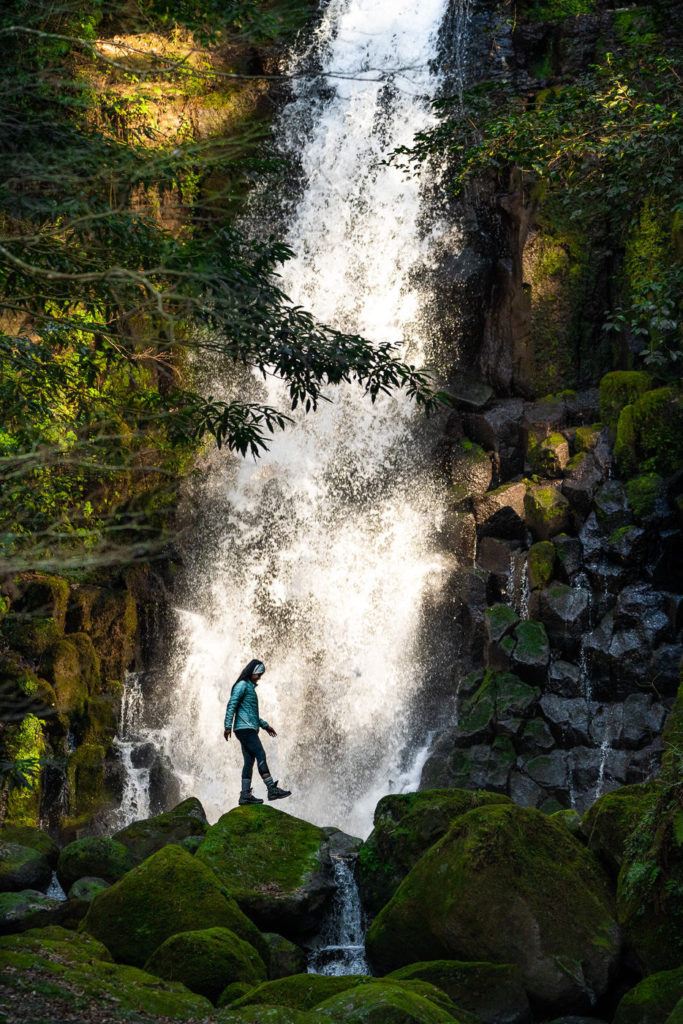
VISIT THE BEPPU HELLS
The ‘Hells’ of Beppu, as they are known, are seven incredible hot springs all in one area. Unlike many of the onsens or hot springs in the area, these specific hot springs are for viewing only as they are far too hot for bathing. They are quite a tourist attraction and it almost looks like zoo enclosures but instead of almost there is a bubbling, steaming pool of volcanically heated water. The reason these ‘Hells’ are so unique is that they each have a different feature such as the orange Hell or the deep blue Hell. I thought the experience of visiting the Hells of Beppu was quite cool but very touristy.
I visited the Beppu Hells as part of this full-day tour from Fukuoka including the Beppu Hells and Yufuin Spa Town.
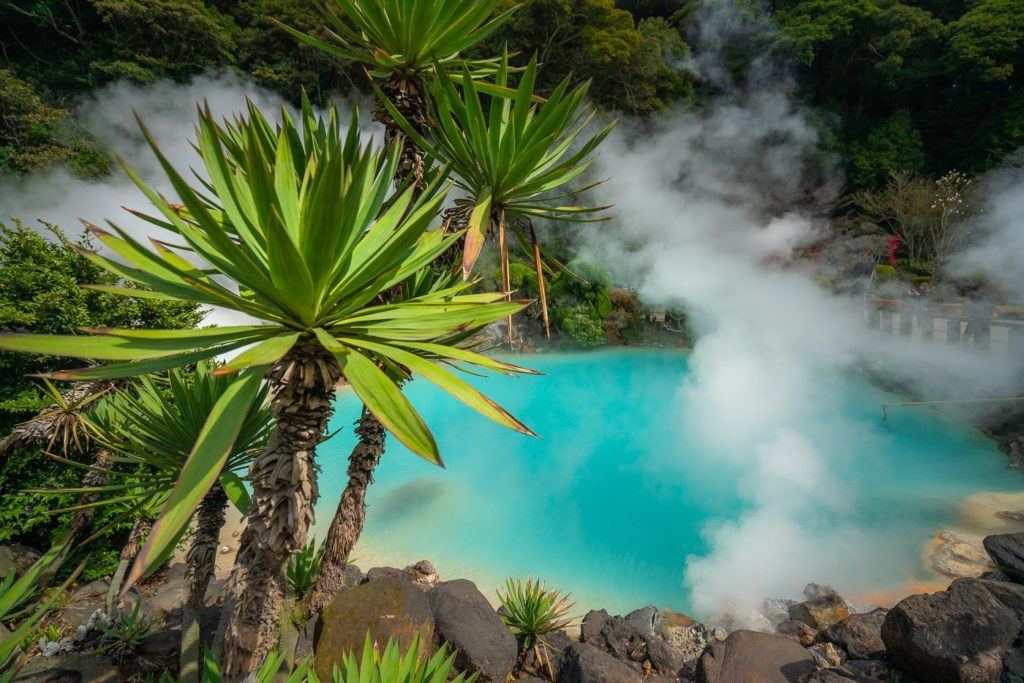
TAKACHIHO GORGE WATERFALL (Minainotaki Waterfall)
Takachiho Gorge is one of the most incredible natural attractions on Kyushu Island, Japan. In the forest of Miyazaki, the Gokase River runs through a gorge comprised of volcanic basalt columns where the 17-meter high Minainotaki Waterfall pours down on the awe-struck tourists below who are paddling the iconic rowboats through the narrow chasm.
Kyushu Island is beautiful in the summer and the fall, which are the most popular times for tourists. In the fall you get the beautiful tinged orange and different colors on the trees and in the summer you are blessed with the best weather. I visited in the winter, which was not the prettiest time as lots of the leaves were dead so there were plenty of sparse trees. However, Takachiho Gorge was at a lower elevation and in a spot that was still beautiful and green in the winter. The conclusion is pretty much that it is a year-round attraction, which will only differ slightly at various times throughout the year.
TAKACHIHO GORGE DAY TOUR
As I said above, Takachiho Gorge is a bit hard to get to with public transport so unless you have rented a car, the best way to get there is on the Takachiho Gorge Day Tour . The tour includes drop-off and pickup from your hotel, an English-speaking guide for while you are at the gorge. Helen the guide is an absolute legend and we loved this tour and this epic location.
CLICK HERE to check rates and availability for the Takachiho Gorge Day Tour
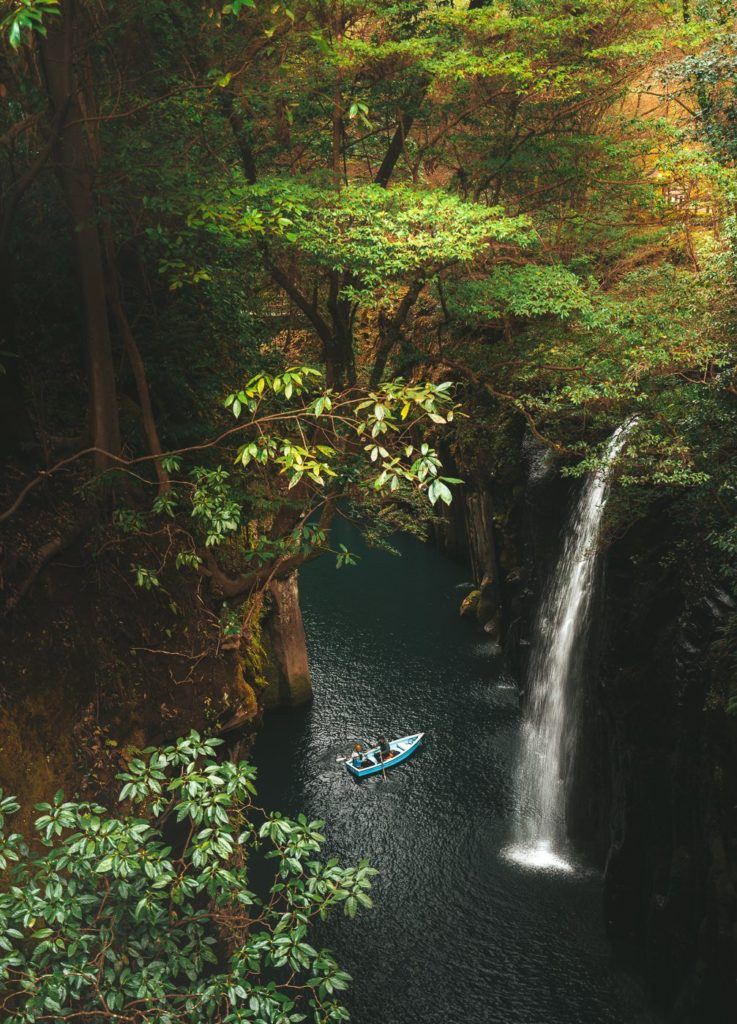
MOUNT KAIMON (KAIMONDAKE) HIKE
Mount Kaimon (Kaimondak) is an inactive volcano along the coast in the south of Kyushu known for its conical shape. The Mount Kaimon hike leads you through the forest on a steep, rocky trail up ladders and boulders to the summit where you are rewarded with coastal views from the top of the volcano.
The trail begins with an incline from the very first moment as you wind your way through the woodlands at the base of the volcano. It was a very beautiful part of the trail as the sunlight shone through the trees and into the mini canyons created by erosion on the path. At some points, the walls on either side of the trail were above head height, which added a unique atmosphere to the trail.
Read the full blog post for details and all photos: MOUNT KAIMON HIKE (KAIMONDAKE) IN KAGOSHIMA
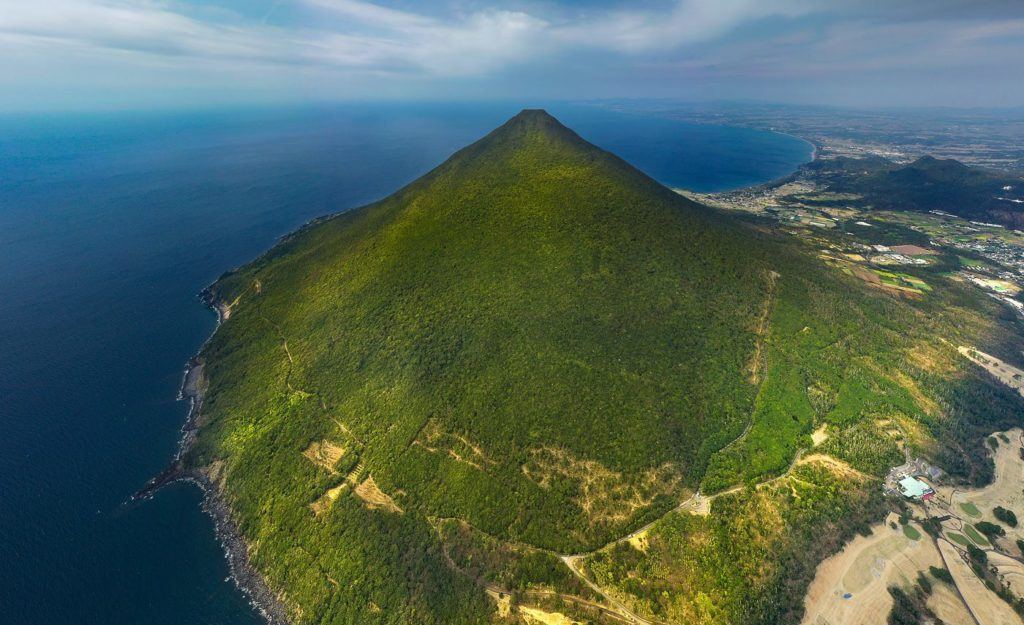
KAMISHIKIMI KUMANOIMASU SHRINE
The Kamoshikimi Kumanoimasu Shrine is hidden in the forests near Takamori, which is a little town in the Aso region of Kumamoto. It’s a very spiritual spot with lots of different spots to make prayers, receive good luck and perform a ritual. For example, you can touch the Hogeto Iwa Stone and you are said to be granted good luck, and the shrines sacred Nagi Tree is said to protect relationships. The Kamoshikimi Kumanoimasu Shrine is the inspiration of the manga ”Into the Forest of Fireflies’ Light” which was written by Yuki Midorikawa.
It’s an incredibly beautiful place with a forest stairway leading up to the shrine and then a huge underpass/cave where you can throw a coin onto the ledge for good luck.
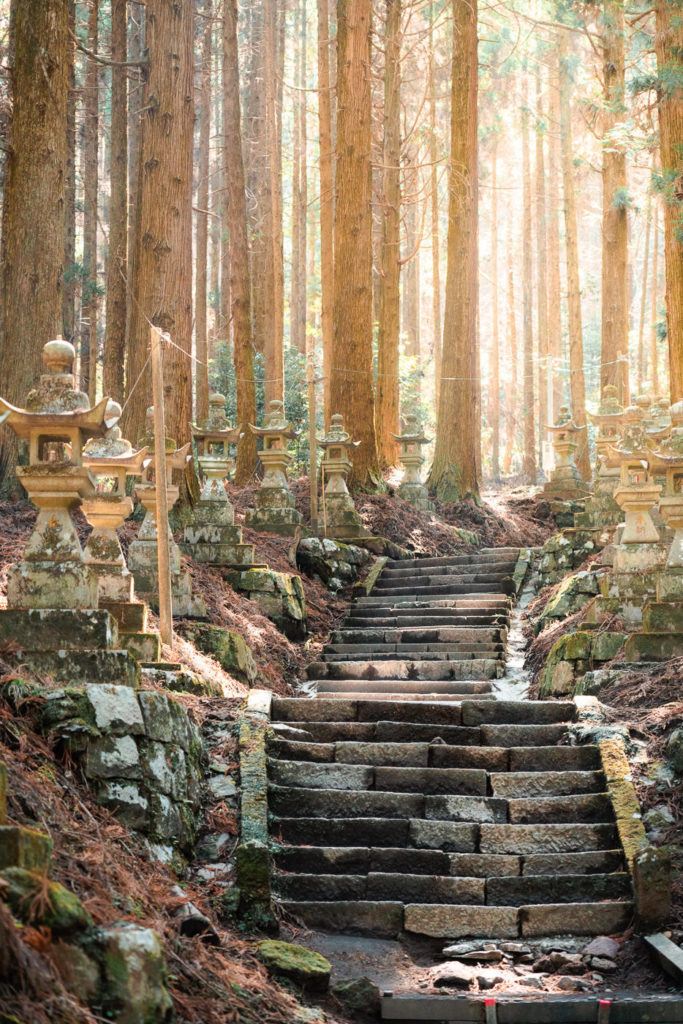
YAESONO FALLS
Yaesono Falls is a sweet little roadside waterfall, which you will find on the way to the Mount Karakuni hike in Kirishima. It’s probably not worth an adventure all on its own because you just park next to the road and check it out without needing to hike. However, if you are heading up to the Kirishima mountains for a hike it is only a small detour and is quite a nice waterfall surrounded by trees.
ENJOY AN ONSEN EXPERIENCE
Kyushu is famous for its hot springs and it is one of the most volcanic places in the world. It is Beppu that is at the center of this volcanic activity when it comes to onsens and hot springs with hundreds of different onsens, spa-resorts, and hot springs to test out. It’s definitely an experience you want to try at least once. The general premise of an onsen experience is that you will arrive fully clothed, strip down to naked, and then bathe in the hot spring water with the other locals and visitors. The minerals, temperature, and meditative experience are said to be very beneficial for your health.
I visited Hoyoland Onsen as they allowed people with tattoos to bathe whereas many do not due to traditional laws. There are lots of very scenic onsens to choose from but make sure you try it at least once as this is the most cultural experience you can have and one of the best things to do in Kyushu.
I didn’t take a photo at the onsen as it isn’t allowed and would be very weird as everyone is naked so I’ve added in a stock photo below to show you what it looks like.
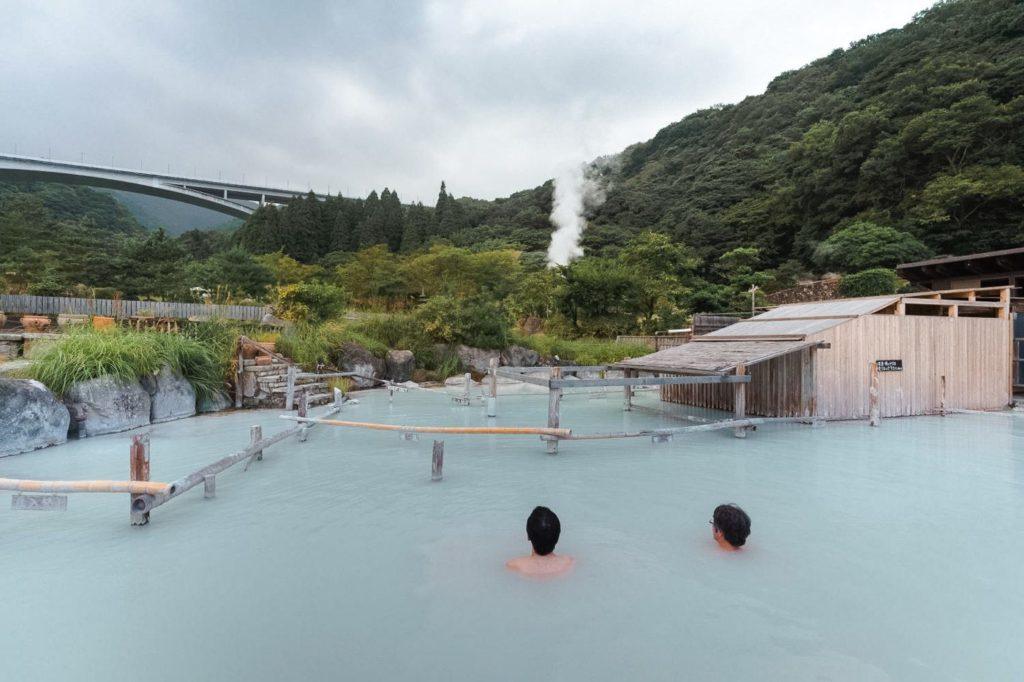
KEYA NO OTO HIKE IN ITOSHIMA
Keya no Oto is a beautiful coastal viewpoint of Itoshima, which has incredible views of the beach from the ominous ridgeline and a 64m cave below! You can hike all the way up onto the top of the ridge as there is a bit of a trail, which includes some basic bouldering/rock climbing. It isn’t a trail I would recommend unless you are athletic and adept at bouldering and climbing.
Atop the ridge, it was a very narrow path. A 50m+ drop on either side meant we had to focus on our steps until we reached a safer, wider spot on top of the ridge. We took a moment to relax up here, taking in the view of the beach and down to the volcanic cone at the other end of the coastline.
Read the full blog post for details and all photos: KEYA NO OTO HIKE IN ITOSHIMA
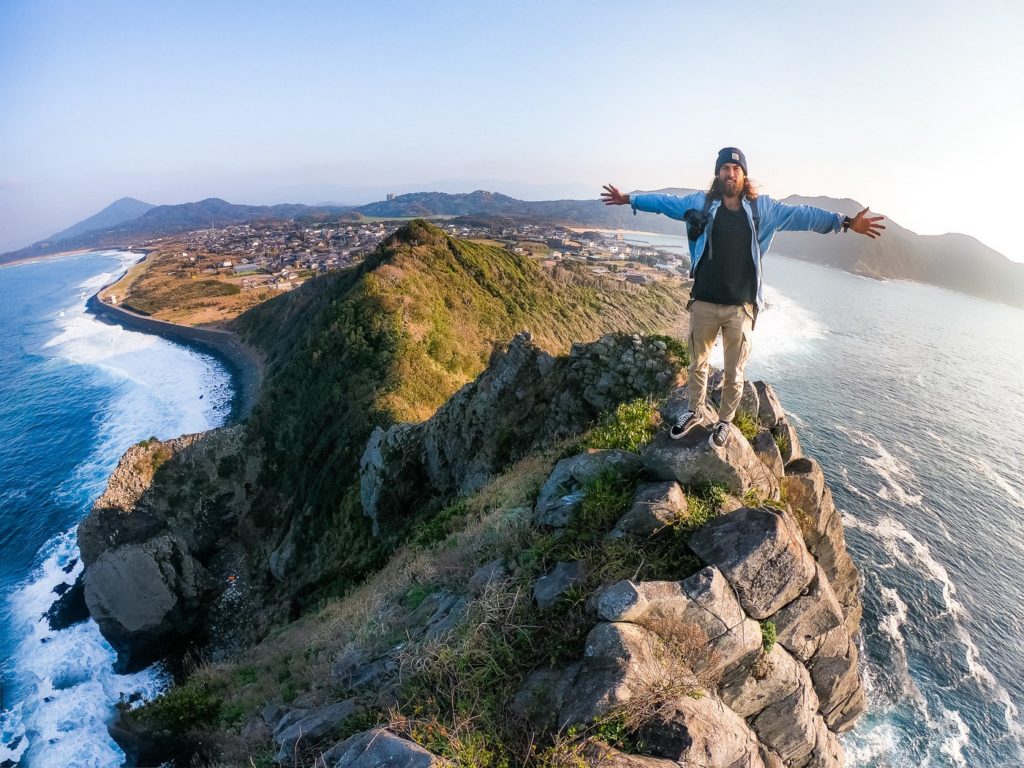
SUGARUGA FALLS
This is a bit of a strange one because the access was limited due to construction going on. There is usually a viewing point but I’m not sure if it will still be closed or not. We managed to fly the drone to still check out the waterfall but normally you can view it from the platform. Nevertheless, it was one of the most powerful waterfalls I came across on Kyushu Island.

MOUNT YUFU HIKE
While I was based in Beppu I headed up for sunrise one morning to hike Mount Yufu. It’s known as being quite a tough hike due to the consistent incline and relentless switchbacks that lead you up to the two peaks at the summit. However, on the day I visited, it was covered in the cloud at the top. We saw deer along the way and really enjoyed the hike. I know the view from the summit is pretty epic so I’ve added it onto this list with a photo from a day with better weather. It was a 7km round trip with more than 700m of an incline up the switchbacks. I’ve included a photo below of the view from the top and the view from below on a day in better conditions than when I hiked. Keep in mind, it is known for being a peak that is hard to catch on a clear day so do pick the best day of the week regarding weather.
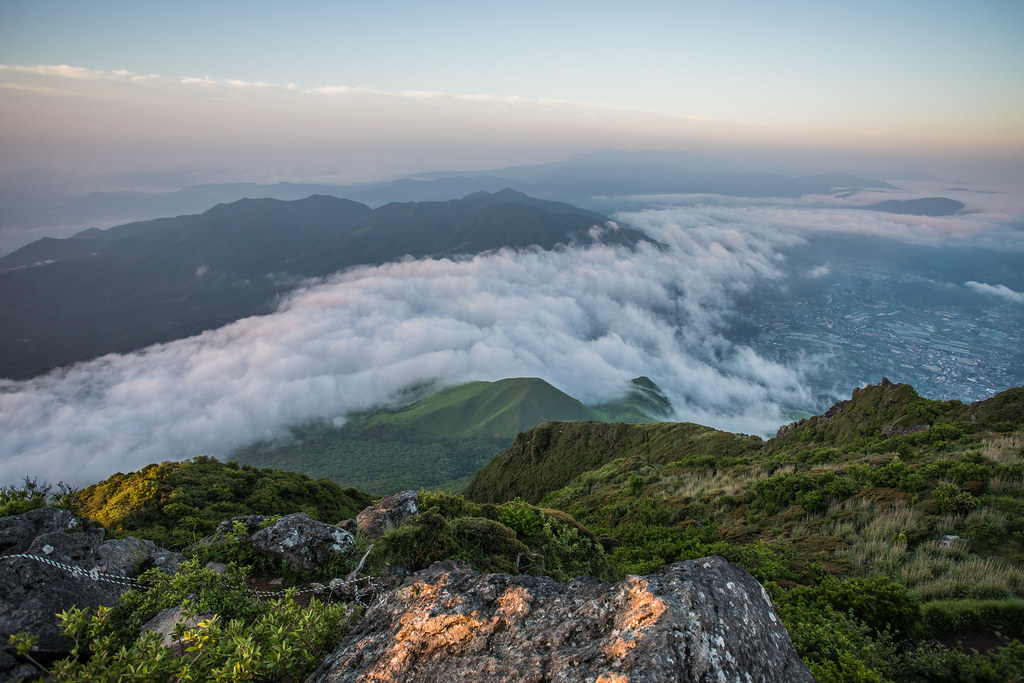
RYUMON FALLS
If you are staying near Kirishima then Ryumon Falls is definitely a spot I would recommend. It isn’t too far from Kirishima town and is a pretty epic waterfall. There is a small parking lot and then you walk about 500 meters to the viewing platform. You can go down closer to the base of the falls as well but it was a stormy, misty day when I visited and I was the only one there. I decided to just enjoy the view from the platform and snapped a photo from right there.
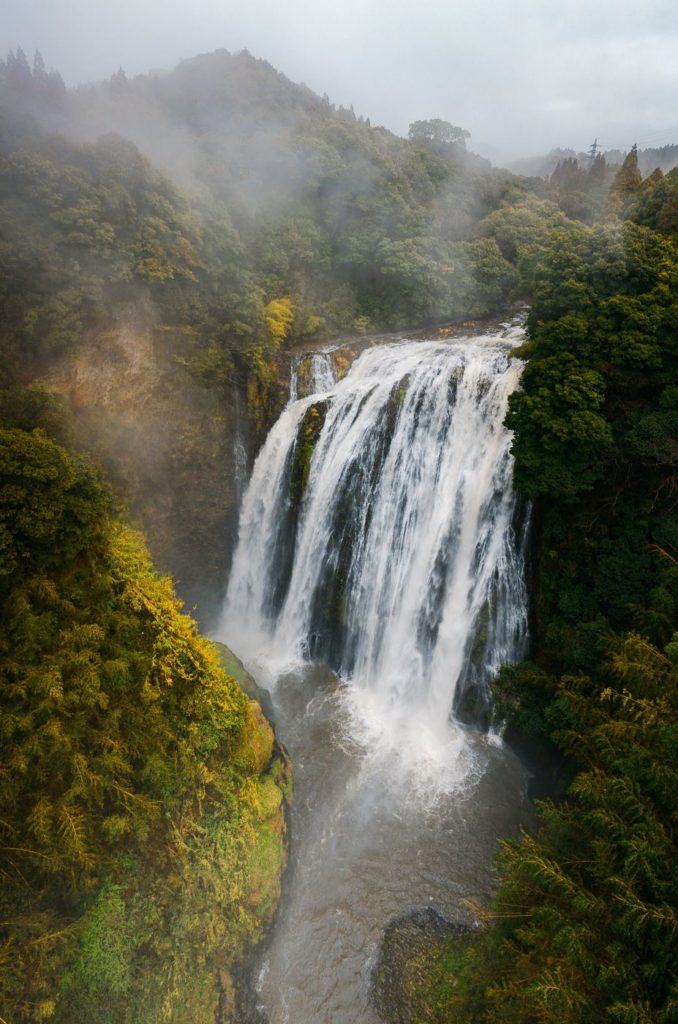
MOUNT TSURUMI HIKE
When you stay in the town of Beppu, you will always notice the mountains looming at the back of the valley. The highest point is called Mount Tsurumi and it’s actually possible to reach by cable car. However, there is a trail to the top if you are up for the very steep challenge. Of course, if you are just in it for the view, take the cable car but for those who love the adventure and want to spot some deer along the way the trail starts just around the backside of the cable car parking. Drive an extra half mile up the road past the cable car parking and you will find the trail entrance on the right side of the road. It’s on maps.me if you can’t find it.
At the summit, you have a beautiful view down over the town of Beppu and the entire beach. Just like Mount Yufu, on the day I visited, the weather was quite poor visibility with heavy fog so I have included a photo from a clearer day so you can decide if this is a hike you are keen to add to your Kyushu bucket list.
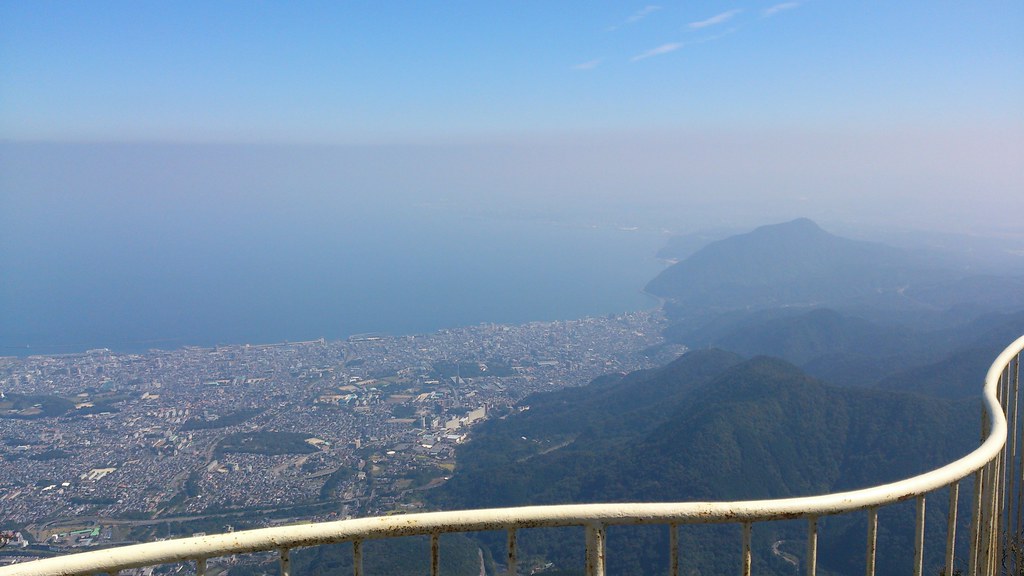
SEKINOO WATERFALL
Sekinoo is a pretty popular waterfall that has a suspension bridge viewing point. I visited it on the same day as Ryumon, Inukai, and the Kinzan Bridge so they are all within reaching distance of each other. This waterfall has a short walk down a forest path, which leads you to the suspension bridge where you can get up close enough to feel a bit of spray on a day with a heavy flow!

KINZAN BRIDGE WATERFALL
While the Kinzan Bridge waterfall is the biggest falls on Kyushu Island, it is a pretty unique little spot. The bridge is actually a serviceable road I used several times while exploring Kirishima and you can get down to river level for photos. I did take this shot from the drone as I floated it under the bridge while a meter or so above the water. There’s a small trail along the side of the river but parking is right next to the bridge so it is a good little pit stop but not the highlight of the day with Ryumon, Sekinoo and Inukai the bigger waterfalls in the area.
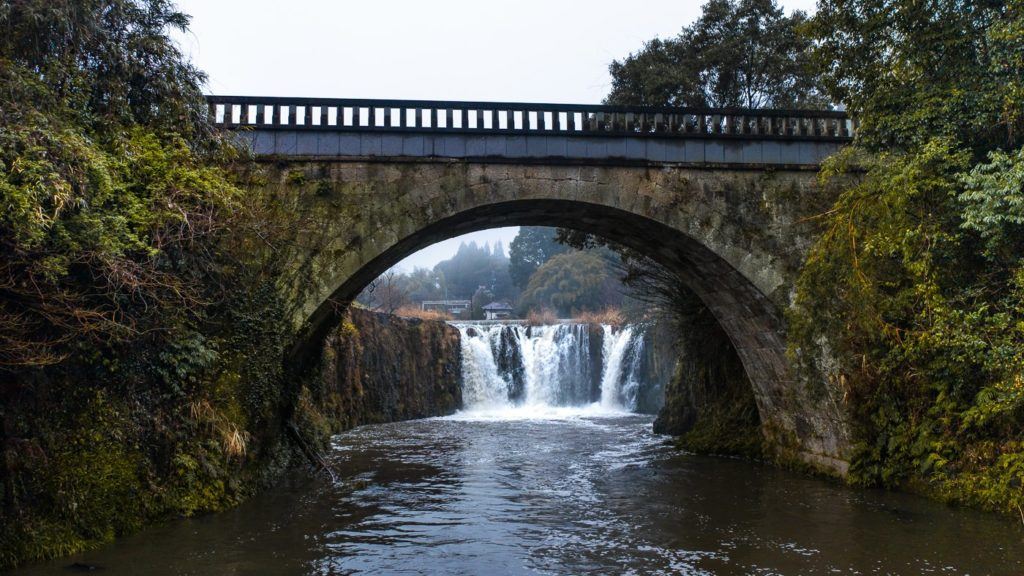
LA PUTA ROAD
La Puta Road was a bit of a local secret until a few years ago when the location gained some serious popularity. All around the edge of Mount Aso caldera are some epic viewpoints but the La Puta Road is really a sight to behold. There is a winding road that just needs to be seen to be believed as it snakes its way along the precarious cliff edge. It’s important to note that technically this site is now closed due to a landslide and it is simply not possible for cars to drive this route anymore. You can just walk up the hill for a bit of a look from a safe spot though although there were some temporary blockages to the walkway. Enter at your own risk on this one as it is technically closed although walking to the hill viewpoint is not of high danger compared to going down near the road where the landslides were. I’ve seen some epic, epic photos here when the grass is green and low-lying fog makes it look like the road is simply floating on clouds.
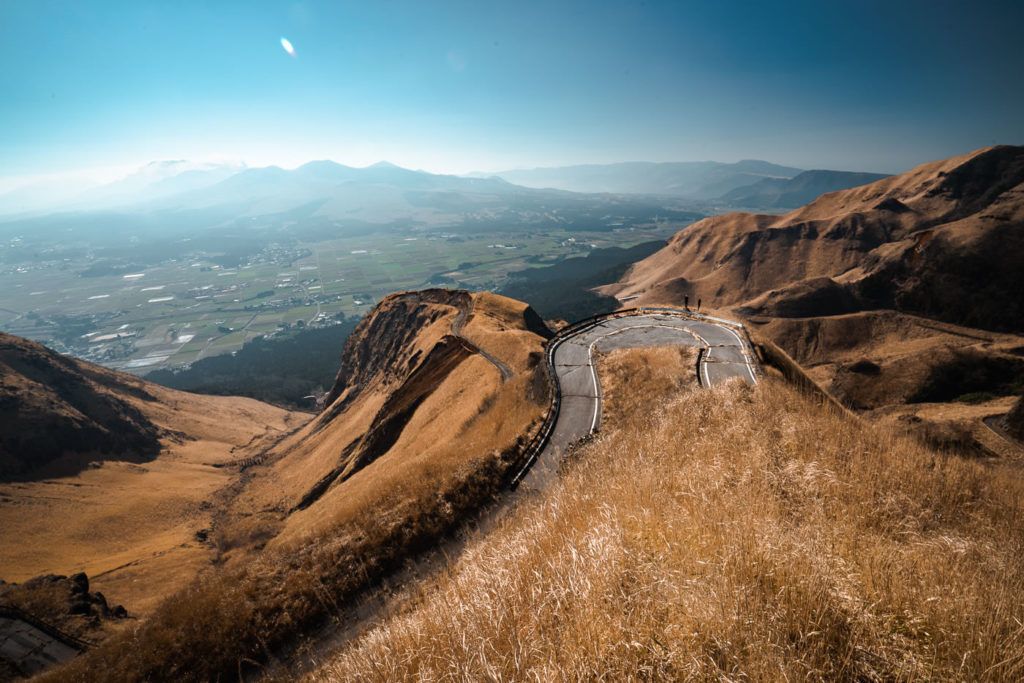
KUMAMOTO CASTLE
Kumamoto Castle is one of the most beautiful castles in all of Japan with it’s large, scenic grounds and a variety of buildings it offers visitors a complete castle experience. It is one of a few structures that have survived the centuries since it’s construction in 1607. There have been a number of maintenance and reconstructions but it is one of the most well-preserved castles in Japan. It’s best to visit the castle from March to April when the 800+ cherry blossoms are in full bloom making the entire area a fairytale location.
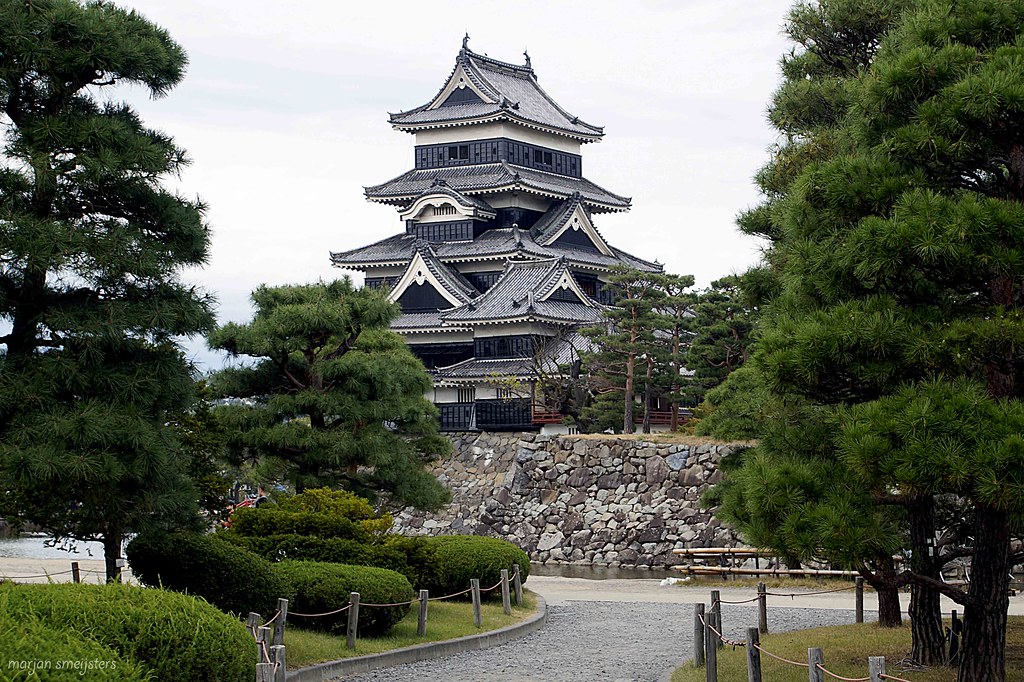
SUSUHARA VIEWPOINT
There are lots of great places to view Sakurajima Volcano but I really enjoyed the little Susuhara viewpoint all to myself as I watched the plumes come out of the very active volcano near Kagoshima. I actually stopped off here on the way to the Mount Kaimon hike but there were lots of different viewpoints with great views of Sakurajima Volcano so if not Susuhara, make sure you stop somewhere along the way to observe this epic volcano.
KOKONOE YUME OTSURIHASHI SUSPENSION BRIDGE
The Kokonoe Yume Otsurihashi Suspension Bridge is in the west of Oita and is the longest and highest pedestrian bridge in all of Japan! From the bridge, you look down 173-meters below to the Naruko River which sits in the steep gorge. From the bridge, you can see the Kuju Mountains and the Handa highlands as well as several waterfalls nearby.
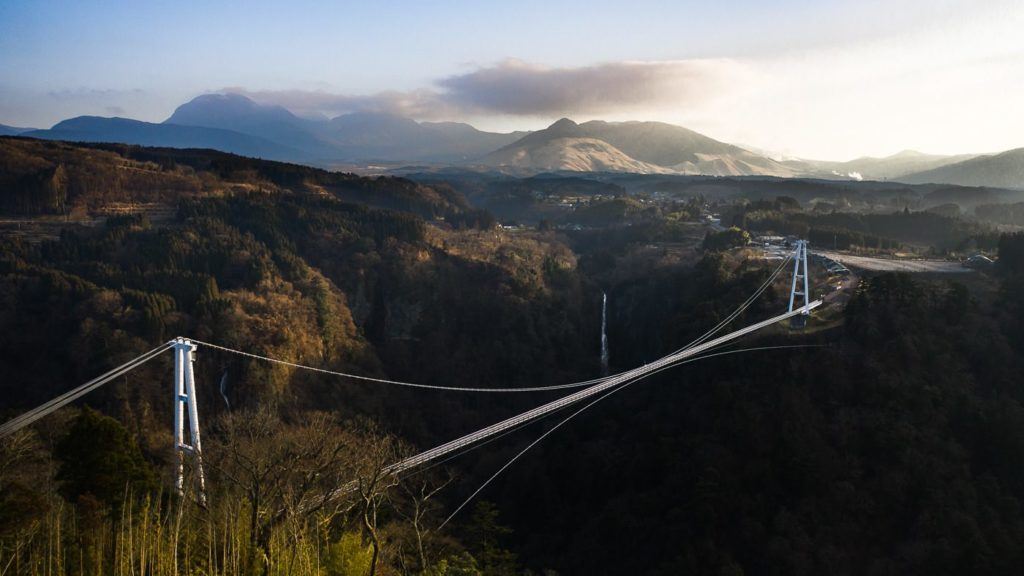
KUNIMIGAOKA VIEWPOINT OF BEPPU TOWN
Just before you get into Beppu make sure you stop at the Kunimigaoko Viewpoint where you will have the best views over this famous hot spring region. I was there in the middle of the day so the lighting was a bit tough but if you came up here for sunrise or sunset you would be in for an absolute treat as you will see the beautiful colors of the ocean as the light peaks over the mountains.

HOW TO GET AROUND KYUSHU FOR ADVENTURERS
While the train may suit those in Tokyo, Kyoto, Osaka, and even in Fukuoka, it won’t cut it out here on Kyushu. The trains will get you from major towns and even into some regional areas with bus connection but almost all of the adventure sports I visited had no bus connection. When I searched on Google Maps and clicked the public transport option it would just say ‘not available’. It was very clear, very quickly that Kyushu island is best to explore by car, especially if you are doing hikes and activities outside of the city (literally everything on this list).
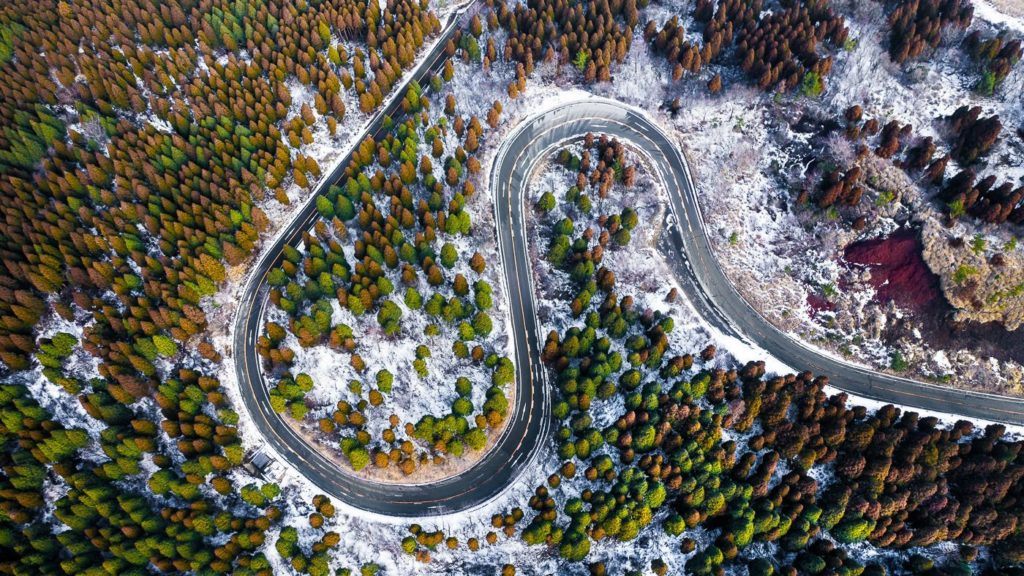
*** It is extremely important to know that you MUST HAVE an international driver’s license to rent a car in Japan. In fact, they won’t even look at your actual driver’s license and only want to see the international driver’s license. Take that seriously as they genuinely will not give you the car and likely no refund if you don’t have that. To get one you need to be in your country of residence and you can get one on the spot or order online and receive it in a week or so. Make sure you organize that in advance as I almost got caught out not knowing that.
BEST TIME TO VISIT KYUSHU
I visited in February, which was winter and freezing. I don’t advise it but it was still epic. The best time to visit Kyushu is most definitely not winter. It’s not really a ski destination so likely you will be freezing and all of the leaves will be dead so the landscapes will not be as beautiful as other times of the year. There are a few drawcards to each season so I will go through them below.
- Fall/Autumn: The temperature is mild and comfortable making it great for hikes and adventuring. If you time things right, you will get the beautiful fall colors out on the trails!
- Spring: This is definitely the most popular season to travel to Kyushu with sunny days and comfortable temperatures. It is very popular at this time due to the cherry blossoms and flowers that are in full swing at this time of year.
- Summer: While not known for its beaches, Kyushu does offer a number of great swimming spots and beaches to explore. For hiking, it may get a little hot but (up to 30 degrees celsius) never reaching temperatures that would limit your adventures.
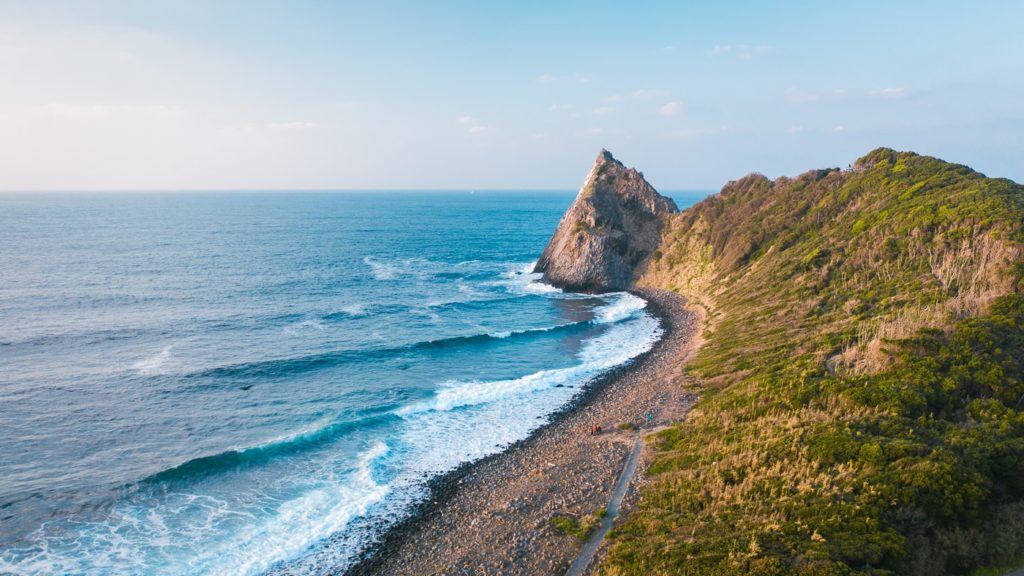
WHERE TO STAY IN KYUSHU
- Best Luxury Place to Stay in Fukuoka: Hotel WBF Grande Hakata (Value): This is by far the most popular hotel and one of the most luxurious in Fukuoka.
- Best Value Place to Stay in Kumamoto: Hotel The Gate Kumamoto (Value): Hotel The Gate is a well-situated accommodation in the heart of Kumamoto, just across the train station and within walking distance to shops and restaurants.
- Best Luxury Place to Stay in Kumamoto: Kumamoto Hotel Castle (Luxury): Set near the infamous Kumamoto Castle, this luxury hotel features a wide range of carpeted rooms from standard rooms to suites fitted with plush amenities.
For a full list of the top-rated places to stay in Kyushu, you can check out my comprehensive guide: WHERE TO STAY IN KYUSHU: BEST REGIONS & HOTELS

ARE YOU FOLLOWING MY KYUSHU BLOG SERIES?
I spent over three weeks exploring Kyushu and visited some incredible waterfalls, hiked some amazing trails, and visited a number of epic volcanoes. I created a number of guides to help travelers find the best spots in Kyushu. You can explore the articles by clicking on the links below.
- The Ultimate Kyushu Bucketlist: 30 AWESOME THINGS TO DO IN KYUSHU
- The best places to stay in Kyushu in each region: WHERE TO STAY IN KYUSHU: BEST REGIONS & HOTELS
- How to plan your Kyushu vacation: THE ULTIMATE KYUSHU ITINERARY: 5-DAY, 7-DAY & 10-DAY
- Interested in chasing waterfalls?: 12 AWESOME WATERFALLS IN KYUSHU
- Keen for some epic hiking?: 11 AWESOME HIKES IN KYUSHU
- Everything you need to know about Oita: 11 AWESOME THINGS TO DO IN OITA
- Your Ultimate Guide to Kumamoto: 13 AWESOME THINGS TO DO IN KUMAMOTO
- My favorite waterfall in Kyushu: TAKACHIHO GORGE – MOST BEAUTIFUL WATERFALL IN JAPAN
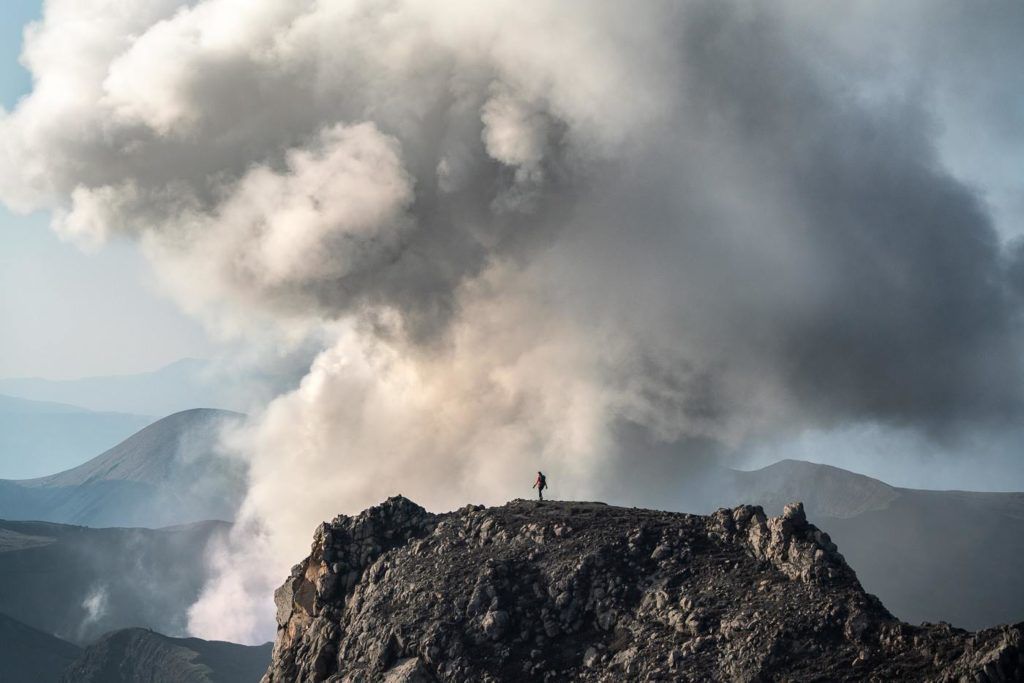
Monday 21st of March 2022
I've hiked, biked and road tripped around Aso several times but I still found several things here that I haven't seen yet and will have to check out this time! Thank you!!
Friday 16th of April 2021
I've been to Kyushu many times but there are still so many places to check out! Beautiful photos, and thanks for giving me a few more ideas. Counting down the seconds until I can get back there again.
Saturday 17th of April 2021
It's such an underrated hiking destination!
Perth Is Ok
Friday 12th of February 2021
kyushu one of the amazing place to visit in Japan. There are many famous places which attract the people around the world. You have mentioned best things to do in Kyushu. Thanks for this blog.
Wednesday 10th of February 2021
I am a photographer and love to explore world with my camera. In 2018 i was there for 15 days tour, and that was my best ever journey, lots of new foods, culture and temples i have seen there, even the language i tried to learn, but failed! Apart from all, i enjoyed a lot. Your article remind old days, Thanks for sharing wonderful post.
Stella Wilson
Wednesday 7th of October 2020
Hi Jackson, Wonderful blog. I really like the way you write. It is one of the best blogs I have read on Kyushu. Thanks for sharing these beautiful photographs. I am travelling to this amazing place in December. Looking forward to reading more of these articles.
Visit Kyushu The Official Kyushu Travel Guide
- Activities & Experiences
- Art & Culture
- Heritage & History
- Wellness & Relaxation
- Food & Drink
- Nature & Outdoors
- Art & Culture
- Heritage & History
- Nature & Outdoors
- Leisure & Entertainment
- About Kyushu
Adventure Travel
Book Kyushu Experiences
Getting to Kyushu
Getting around kyushu, good to know, staying in kyushu, downloadable pamphlets.

- Plan Your Trip
Essential Information for a Smooth Trip to Kyushu
Kitsuki Castle Town
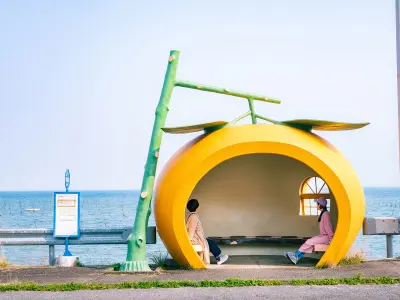
Kyushu is well-connected to the rest of Japan and the world, with international ports and airports and direct access to the island of Honshu by shinkansen and road. Whichever way you travel, you will find a warm welcome.

Kyushu has an extensive network of trains and buses within the major cities, and connecting each prefecture. Some of the more distant areas are easier to reach by car, or even ferry. You can also fly to many of Kyushu's beautiful islands, including Yakushima and Amami Oshima.
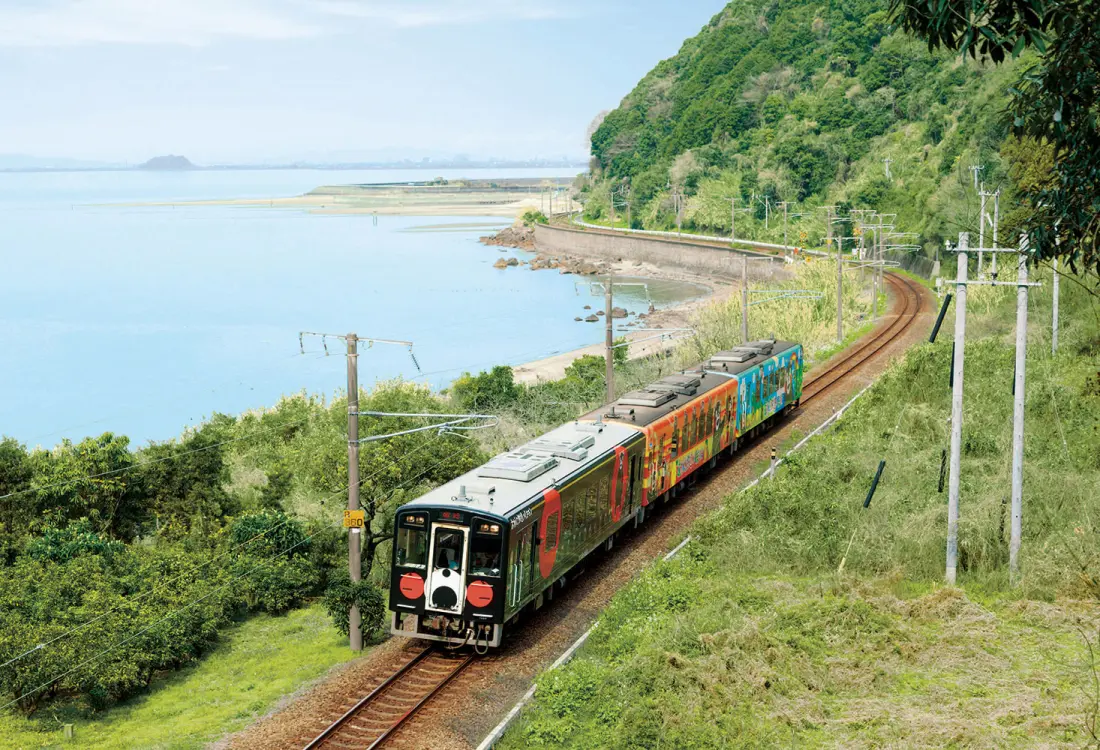
Kyushu is Japan's warm and friendly southern island, with verdant green hills, active volcanoes, abundant hot springs and delicious food. It's also well connected to the world, with many transport options, lively cities and free Wi-Fi in many areas. Here are some tips on when to go, where to stay and how to make the most of your trip.

- Tours & Experiences
- Tailor-made Trips
- Bahasa Indonesia
We are happy to see you again!
Continue with
Or use email.
No Account? Create one
Create account
Already have an account? Sign in
Quickly Sign up with
I agree to Japan Travel's Terms of Service and Privacy Policy . Terms of--> and acknowledge that Japan Travel's Privacy--> applies to me.-->
Email reset password link
Please check your inbox and click the link we will send to you.
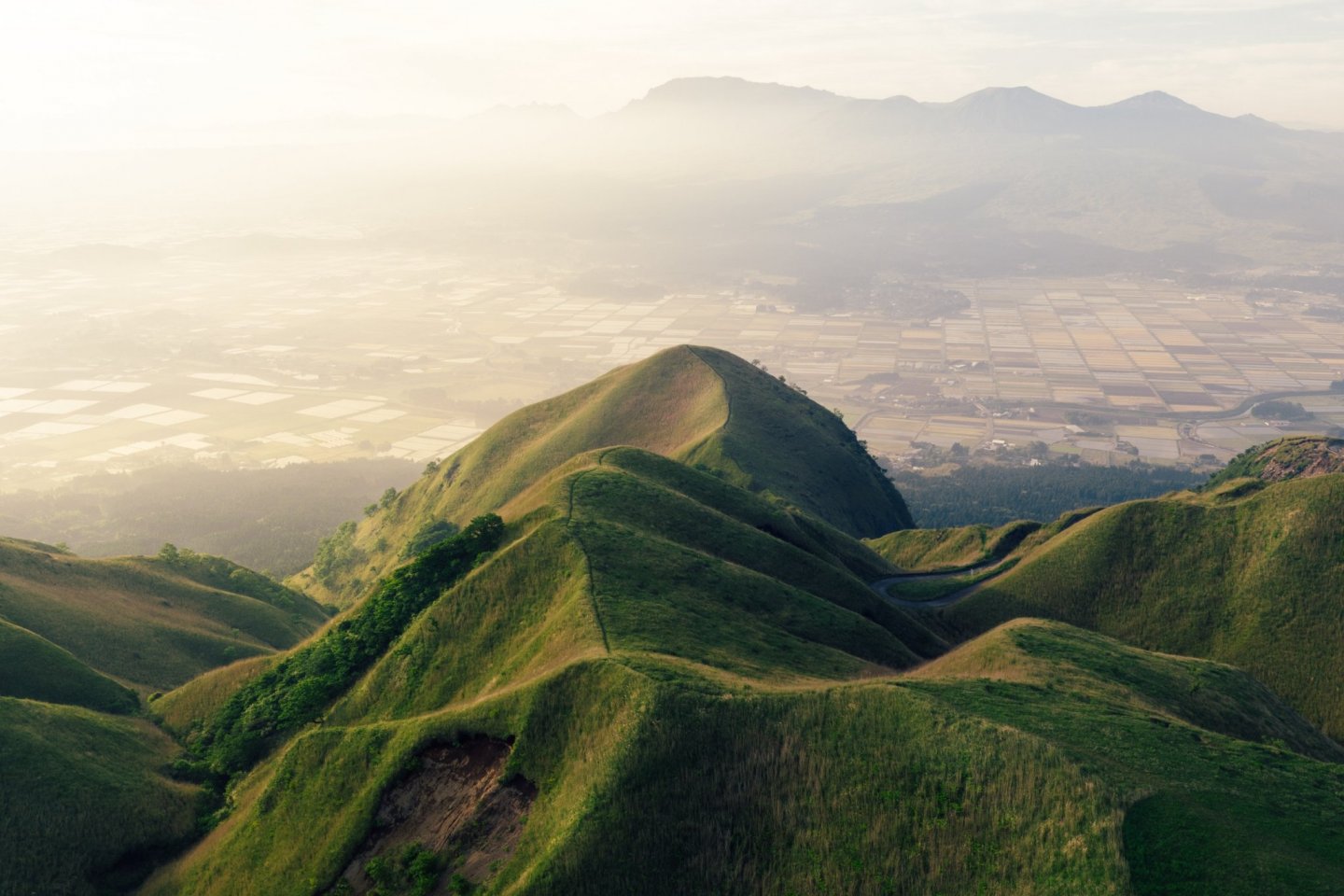
Kyushu Region
Say hello to fukuoka, nagasaki, oita, saga, kumamoto, miyazaki and kagoshima.
Kyushu, home to the most active volcanoes in Japan, and one of the earliest regions in Japan to receive foreigners, has a very interesting environment and history.
For the nature-inclined, visit the ethereal Yakushima Island with its ancient cedars and moss covered forests where Studio Ghibli’s Princess Mononoke took inspiration from, the Takachiho Gorge with black volcanic cliffs flanking the blue water and Mount Aso National Park where the scenic ropeway affords a view of the world’s largest caldera.
For the history fanatics, the Nagasaki monuments, museums and memorials as well as the abandoned Hashima Island aren’t to be missed. For the cultural aficionados, the magnificent Kumamoto Castle , Yutoku Inari Shrine with a passage of torii gates, Usa Jingu and Saga pottery would be great experiences.
For the whimsical, the picturesque hot spring Yufuin town , Dutch-themed Huis ten Bosch theme park, African Safari and Hells of Beppu are great choices. And to round off your visit, hit Fukuoka City for mega-mall City Canal Hakata .
Kyushu in Detail
Plan your trip.
- Cherry Blossom in Kyushu
Destinations in Kyushu

Nagasaki City

Kumamoto City

Miyazaki City

Kagoshima City

Let us know how we can help.

Girl Eat World
A girl's adventure in food and travel around the world, 7-day kyushu itinerary: where to go and what to see in kyushu.
The hardest yet most exciting part of traveling is often the planning stage and narrowing down where to go given the time you have. I visited the Kyushu region in Japan this past September. This is how I planned (and nearly failed to follow said ambitious plan) for the trip!
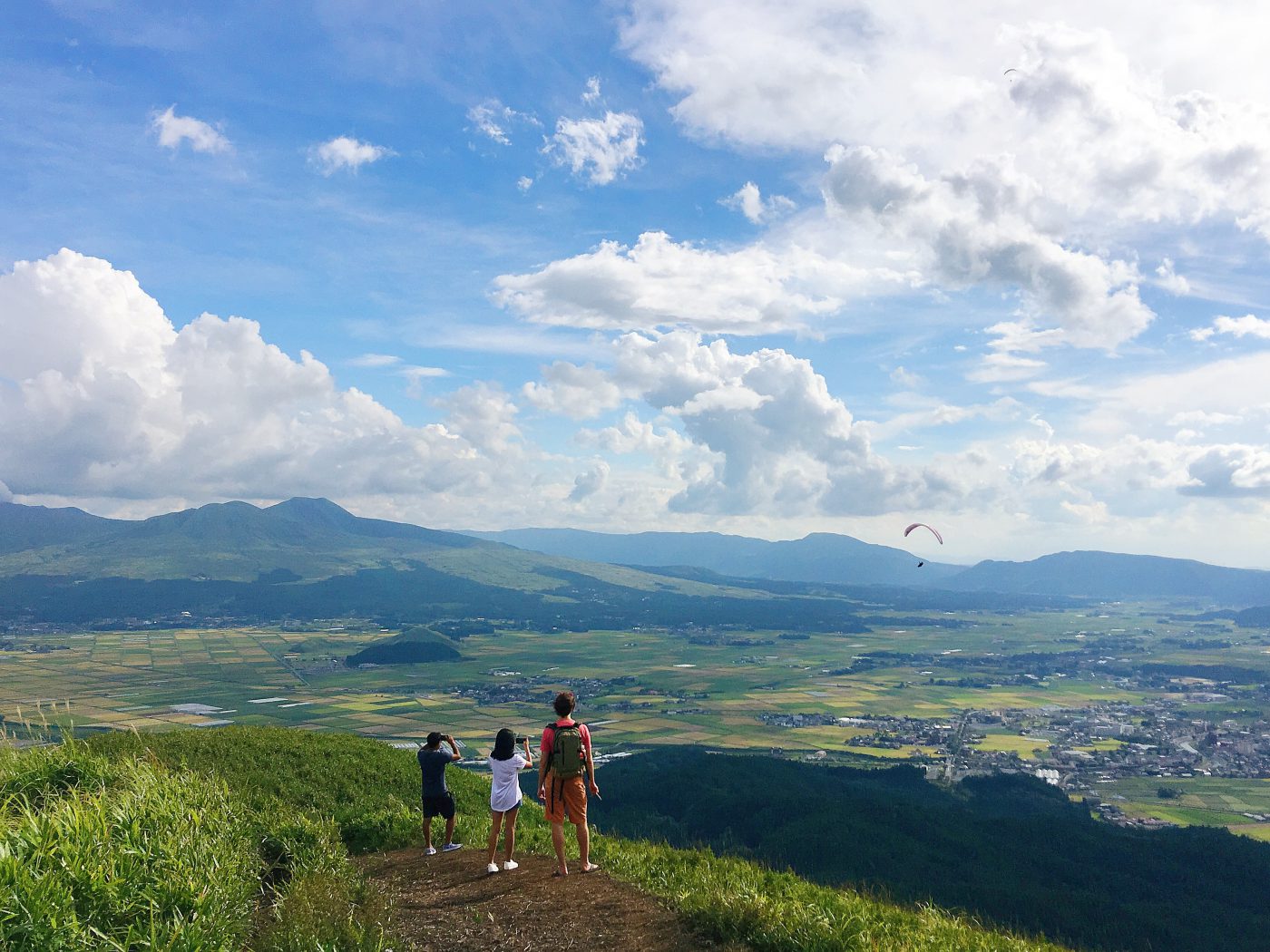
Tips for planning Kyushu Itinerary
Narrow down the city you want to visit – Kyushu is a huge region, and if you have limited time, you need to narrow down the experiences you want to see. No joke – whenever I am in a trip planning mode, I would open up google maps and see if there are any familiar names in the vicinity. I immediately zeroed in on the familiar cities: Hiroshima (not really in Kyushu but it’s very close), Fukuoka , Nagasaki, Kumamoto , and Kagoshima.
Plan out the order to visit the places you want to go to – Once again, I used google maps to see where each place are in relative to each other, then I checked the train routes to map out the best ways to travel between these cities and how long the journey would take. Once I’ve done this, it became clear that we needed to make Fukuoka our base since it’s the center point of the cities we’ve picked.
Yes, You WILL need a JR Pass! JR Pass is the train pass that allows you to take intercity trains in Japan for cheaper. The sights to see in Kyushu are spread apart in different cities, so unless you’re planning to only visit one city, you will definitely need the JR Pass as you’ll likely be using the train to move around. You can buy Unlimited JR Pass or JR Kyushu Pass . Scroll down to the end of this post for more information about the JR Pass and which one is more suitable for you.
You must buy the JR Pass from outside of Japan before your trip . The JR pass is solely for tourists and it used to not be available for purchase within Japan, though there are now limited quantities for sale in Japan for a higher price. You should still buy it ahead of time to make sure and have it sent to your home before your trip, so make sure you get it way ahead of time so that it arrives before your trip.
Check the first and last train out of the city – I also checked for the first and last shinkansen out between cities so that I know the earliest time I can get to a city and the latest time I can leave. This helps me narrow that what activities I can do in the city.
Account for travel fatigue – I have to admit I got over-excited when I planned for this trip. I was really intent on hitting up all 5 cities in 7 days. My biggest advice here and a lesson I had to learn is to account for travel fatigue. You can’t feasibly be moving every other day and not get tired by the end of it. All of the cities I mentioned above are great destinations that I don’t want to miss – but it is very ambitious to hit up all five in 7 days. I had to sacrifice visiting Kagoshima since it isn’t convenient to get to if I want to also include Nagasaki in the itinerary.
My 7-Day Kyushu Travel Itinerary
In the end, after all the research, this is the Kyushu itinerary I went with:
- Day 1: Hiroshima . Land in Osaka in the morning, go to Hiroshima immediately, and spend all day in Hiroshima.
- Day 2: Fukuoka . Travel to Fukuoka in the morning, then spend time in Fukuoka All-Day
- Day 3: Nagasaki . Travel to Nagasaki in the morning and spend the rest of the day in Nagasaki
- Day 4: Stay in Nagasaki All-day
- Day 5: Nagasaki & Fukuoka . Spend time in Nagasaki in the morning, then go to Fukuoka in the afternoon.
- Day 6: Kumamoto Day trip
- Day 7: Spend time in Fukuoka in the morning, Fly back to Singapore in the afternoon
What to do and where to go in Kyushu, Japan
Here are some places you can consider visiting in Kyushu:
1. Fukuoka (2 days)
Fukuoka is the biggest city in Kyushu. It’s a great starting point for Kyushu – lots of direct trains leaving Hakata station, the main station of Fukuoka. Aside from that, they are also known for food! Yep, the Hakata ramen is actually from Fukuoka! You can read about the food in Fukuoka and Yatai stalls here .
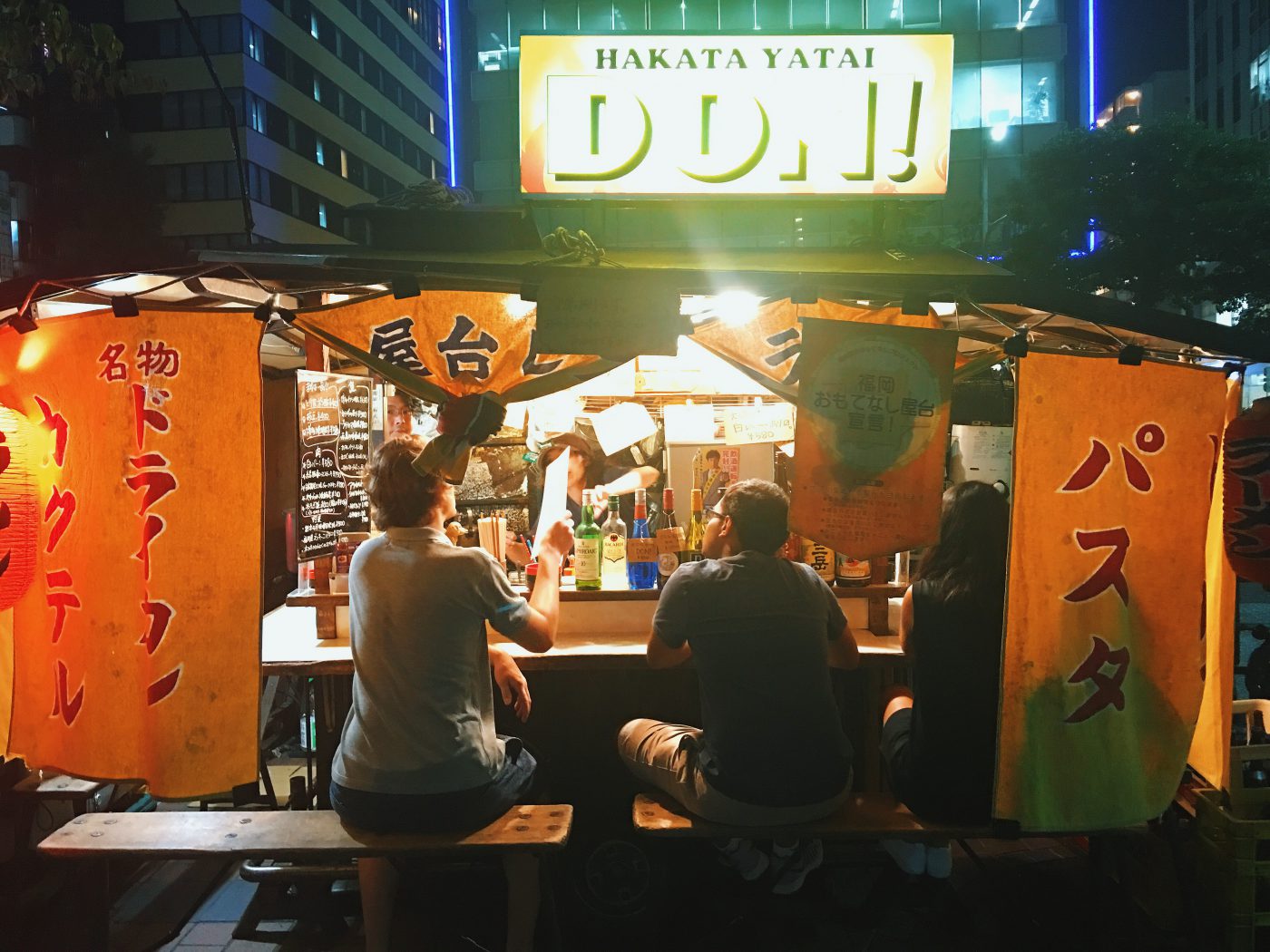
2. Nagasaki (2-3 days)
Nagasaki needs no introduction, the city offers an extensive insight into Japan during the World War II period. Although they are mostly known for its bleak fate as the site of the second atomic bombing, Nagasaki holds an important place in Japanese history. During the era of seclusion called Sakoku, the Japanese were forbidden to leave the country, and the only foreign trade allowed within Japan was done through a manmade island in Nagasaki, called Dejima. Nowadays you can see history from the seclusion period as well as the era that follows after – the Dutch, Portuguese and Chinese influences from the 16-19th century when Nagasaki becomes the only open port in Japan.

3. Kumamoto (Day trip from Fukuoka)
In 2016, Kumamoto was hit by a series of very strong earthquakes. However, it’s still interesting to see the city after the earthquake. The Kumamoto castle, for one, was able to sustain the strong 7.0 earthquake, just as its Japanese architects had intended when the castle was built four centuries ago.
You can also do a road trip or tour to Mount Aso , one of the most beautiful areas in Kyushu. Kumamoto is a very doable day trip from Fukuoka. Read about my day trip to Kumamoto from Fukuoka here .
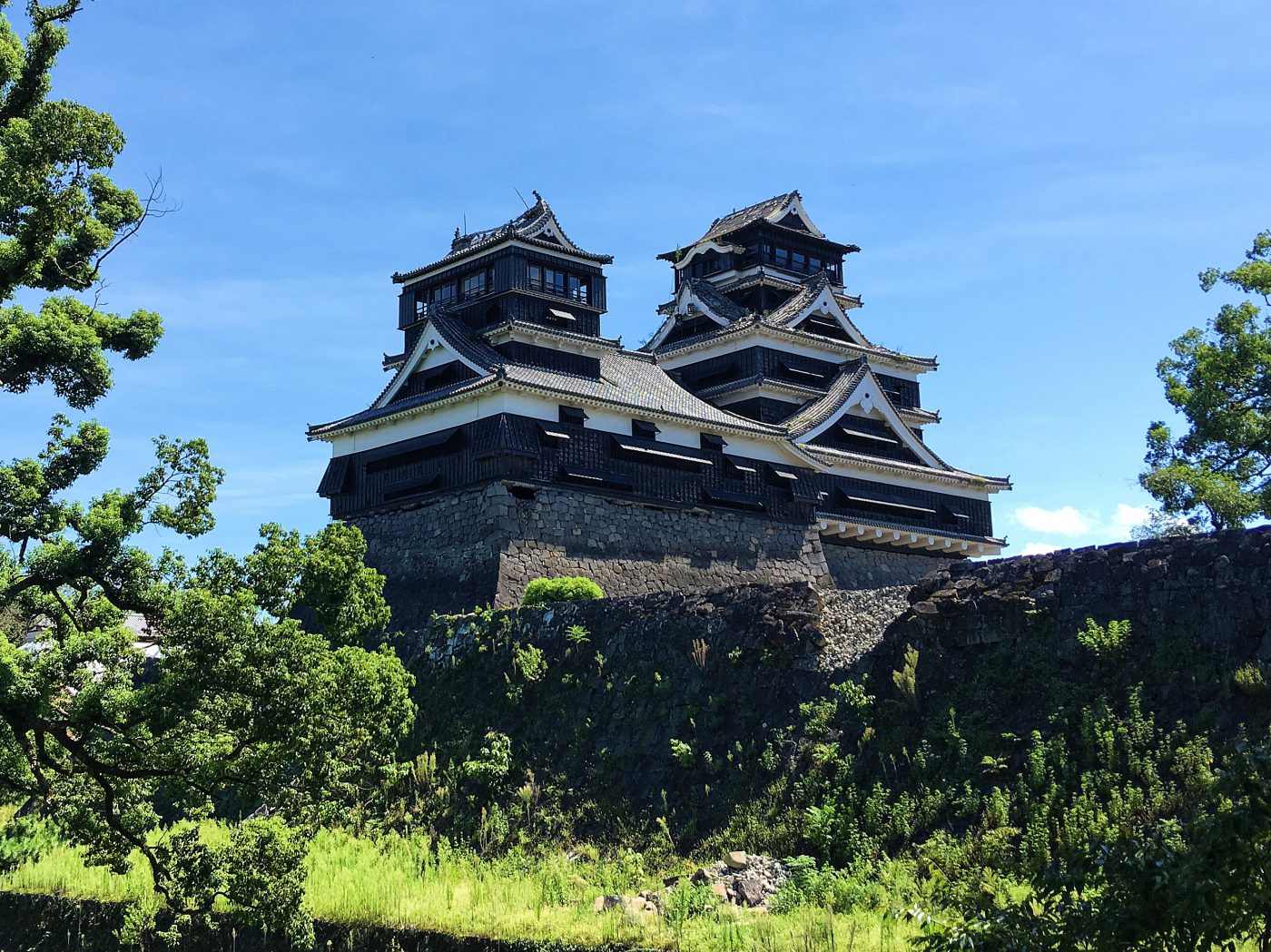
4. Kagoshima (1-2 days)
I did not make it to Kagoshima due to limited time in Kyushu, but I wish I had made it down here. Kagoshima is a seaside city in Kyushu and is best known for Sakurajima, a volcanic mountain often referred to as Japan’s Vesuvius. Aside from that, Kagoshima is also well known for its food and produce – most notably, the Kurobuta aka black pig, which is highly regarded in Japan for being high in protein and low in calories. Kurobuta is normally eaten in shabu-shabu style, aka Japanese hot pot.
If you have time and are interested in nature, you can also visit Yakushima, an island off the coast of Kagoshima. The island is covered in cedar forest that contains some of Japan’s oldest living trees – some as old as 7,000 years.
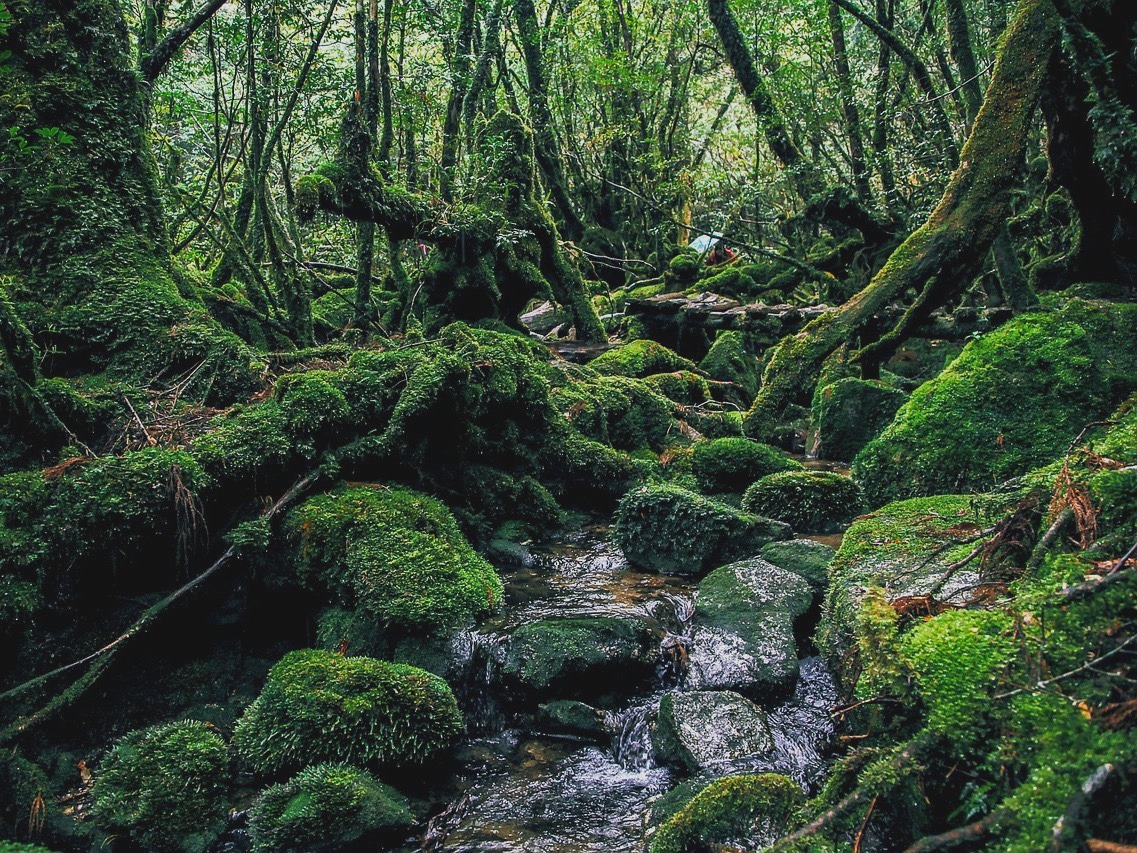
5. Beppu (1 day)
Beppu is a spa resort town, known for its range of onsens (Japanese hot springs) – they have over 2,000 onsens in Beppu! Aside from the usual hot springs, they also have sand baths, mud baths, and steam baths. You can relax in one of the Japanese’s favorite past times – a bath in the hot spring and eating Onsen food after. You can reach Beppu by train from Fukuoka, but if you’re a true Onsen enthusiast, you might want to check out this Beppu and Yufuin Onsen spa tour , which includes hotel pick-up and drop-off!
Booking Accommodations in Kyushu
Tips for booking hotels.
- Book ahead of time – Sometimes I like to “wing it” and book accommodations last minute in the spirit of being spontaneous. I quickly learned this isn’t a very smart move when it comes to visiting Japan, as the good hotels get booked up really fast.
- If you are a non-smoker, pay attention while booking and make sure you tick a non-smoking room in the room type section. Smoking indoors is not illegal in Japan, so some hotels would segregate smoking and non-smoking rooms by floor. I had to stay in a smoking room in Nagasaki because I booked a smoking room by mistake and they had no more non-smoking rooms 🙁
- As we are traveling heavily by train, I find that staying at hotels that are on the main station itself (the station where the shinkansen line stops) really helped us during traveling days since we don’t need to worry about the logistics of getting to the train station. As a bonus point, these areas also tend to be very convenient since in Japan the main station would also come attached with all the amenities like convenience stores, major stores for shopping, and restaurants.
Kyushu Hotel Recommendations
Here are the hotels we stayed in each city. Each of these is very close or attached to the main station of the city, so they are located in a really good location.
- Hotel Granvia Hiroshima is literally on top of the Hiroshima station. Despite this, it was not noisy since the hotel rooms are located high up and they are good with noise insulation.
- JR Kyushu Hotel Nagasaki – yes, JR as in Japan Rail. Nagasaki station is quite small and the lobby of this hotel is right outside the exit of the station!
- Nishitetsu Hotel Croom Hakata , next to the Hakata Central station in Fukuoka – about 5 minutes walk. I ended up staying here because my first choice was booked up.
- JR Kyushu Hotel Blossom Hakata Central – This was my first choice for Fukuoka, but it was booked up during my visit! It would have been really convenient because Hakata is a major station with all the convenience stores, shopping, and restaurants.
Using JR Pass in Kyushu: The FAQs
I have been to Japan many times before, but I’ve never used the JR pass. Getting a JR Pass only makes sense if you are moving around from city to city, it didn’t make economic sense to get the pass. But when visiting Kyushu, there is a big chance you actually need the JR Pass since the attractions in the Kyushu region span many cities.
What is JR Pass exactly?
JR pass is a form of rail pass that gives you unlimited access to all JR trains in Japan for 7, 14, or 21 days. I bolded the JR train part for emphasis since this gets confusing for some people – in Japan, there are many train companies and Japan Rail (JR) is one of them, and this pass is only valid for JR trains!
If you are coming to Japan, you HAVE to have already bought the JR Pass before your trip, from outside of Japan. The pass CAN NOT be bought from inside of Japan.
Which JR Pass do I need?
If you are planning to go all over Japan, you might want to get an unlimited pass. You can buy the unlimited JR pass here, which can be valid for 7, 14, or 21 days depending on the length of your trip.
However, if you are just going to places in the Kyushu area and your travel schedule fits within 3-5 days, then you can take a look into the JR Kyushu Pass since it’s much cheaper than the unlimited JR Pass.
I found this page to be very useful in terms of pass validity information. Since I was in Kyushu for 7 days and will be moving around a lot, it made sense for me to get the 7-day ticket for 29,110 yen (US$260), even though it was more expensive.
How do I find out the train schedules?
Surprisingly, the most user-friendly way is through Google Maps ! Use the public transport filter (The icon that looks like a train) and play with the “Depart at” filter to see the next train available from point A to B. I find their schedule to be quite accurate. Other than that, you can go to the station and look at the schedule there or use local websites like HyperDia .
Which Shinkansen train can I use with JR Pass?
Shinkansen is the famous Japanese bullet train. It is a much, much faster way to travel than taking a regular train and thus it became the preferred mode of transport for tourists and locals alike.
There are different types of Shinkansen trains running on the same route. Most of the time you don’t have to worry about it since they are all the same, and will get you from point A to B. However, in Kyushu, if you want to use your JR Pass you cannot take Mizuho or Nozomi trains . During my trip, I took mostly Sakura and Haruka trains.
How do you know which train is what type? You can tell the type of trains by looking at the schedule at the train station itself. If you are looking at Google Maps, it is the colored label next to the JR Logo. For example:

The screenshot above is a sample route from KIX to Osaka. In this case, this Shinkansen type is the blue ribbon with the JR logo next to it, which is Haruka . Since it is not Mizuho or Nozomi, you can take this train on JR Pass.
Cool, so how do you use the JR Pass?
First, a voucher for a JR pass must be purchased from outside of Japan , so you have to sort this out before you go on your trip. Once you have arrived in Japan, and on the day when you want the pass to be activated, you trade in the voucher at any major JR station for the actual pass.
The pass looks like this:

Once you have received the pass, you have to keep it with you for the duration of your travel and must always bring it with you when you do a train journey. Don’t lose your pass! It’s like your passport to take the train in Japan.
Also, whenever you want to use the JR pass, you don’t go through the automated gate like everyone else. Instead, you walk up to any JR station gate and show your pass to the ticket officer, usually to the left or right of the automated ticket gates.
Tips on how to travel on unreserved seats on Japanese Trains
JR Pass allows you to reserve seats for free, but in case you ever need to take unreserved seats (which is cheaper when you aren’t on JR Pass), such as if you are traveling with a friend who does not have JR Pass, here’s what I have learned from my experience:
1. Make sure you know ahead of time which cars are designated for unreserved seating
The digital signboard at any major Shinkansen station tells you all the information you need. It flips between Japanese and English, so don’t worry if you can’t read Japanese! Just wait a few seconds until it flips to English.

Things to note here are the Non-Reserved car indicator on the far right. In the picture above, it’s Cars 1-3. Also note the train type to the left of it, usually 8 or 16 cars. In the picture above it is 8 cars. I’ll explain why later.
2. Plan to line up 15-20 minutes before the schedule
During peak travel time it is entirely possible you might not get to sit next to your travel buddies when the train is full. Or worse, you may not get a seat at all! I have seen people standing up in the space between train cars. So to avoid this, allocate some time for lining up ahead of the scheduled train arrival time.
How do you line up properly in Japan? Easy! Get to your train platform and look down on the floor to find out where you are supposed to line up – usually, there would be a mark that looks like this:
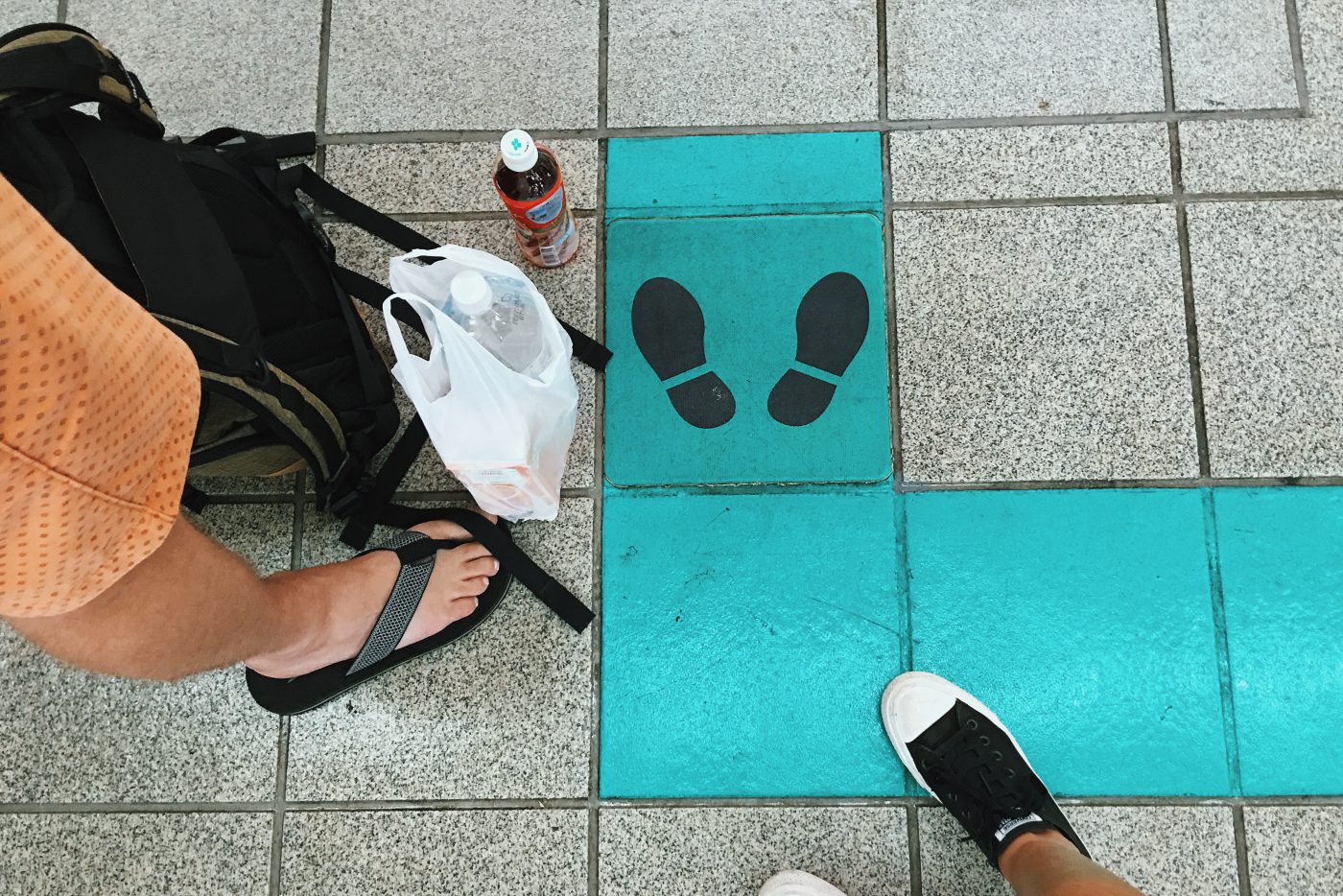
3. Find out where exactly you are supposed to line up
Remember when I said to note the Non-Reserved car numbers and train type ? This comes in handy when you need to find out where the train will stop, so you know where exactly to line up. On the floor, they would normally have something a sign that looks like this:
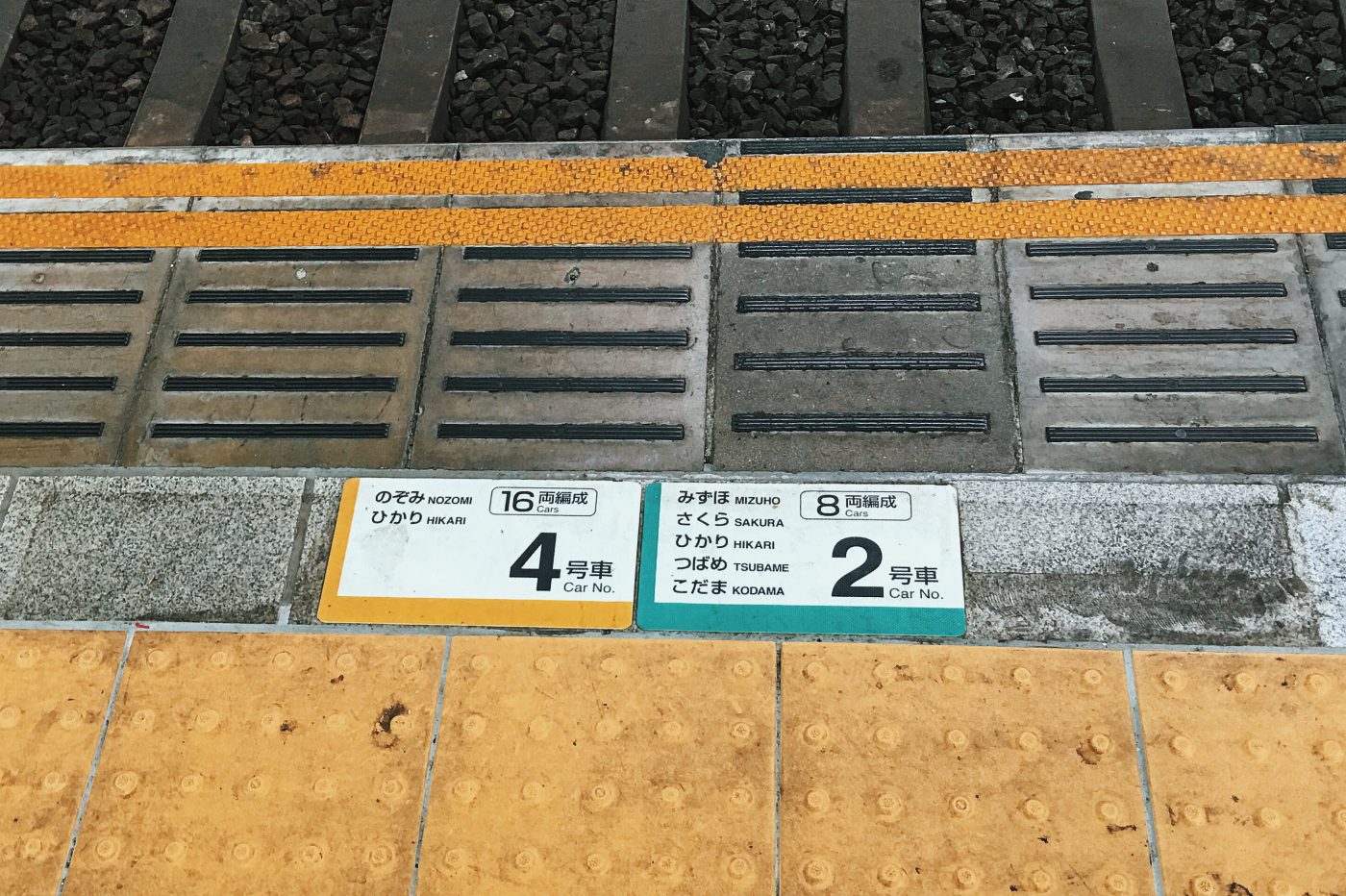
This is when the train type matters – whether it’s 8 or 16 cars or whatever number. In the picture above, if your train is an 8-car train then you look at the green box. But if your train is a 16-car train then you look at the yellow box. So just match up the car numbers to the Non-reserved cars from the signboard to make sure you are lining up at the correct spot designated for unreserved seats. When the train comes, the door will open up exactly at this spot!
That’s all! It might seem complicated, but after doing this a few times it’s pretty easy 🙂
Are you planning a trip to Japan? I’ve written loads about the beautiful country. Check out the ‘Japan’ category of this blog for some travel inspiration.
25 Comments
- May 17, 2024
Hi Melissa Thank you for sharing your detailed Kyushu itineraryI I will be going to Kyushu this year in early Nov .for a 9 -days trip , the places I hope to visit are Hiroshima, Nagasaki , Beppu , Kumamoto , Kagoshima . Will 9 days be too much to pack in ? I notice you landed in Osaka and head out to Hiroshima on the same day . . I am intend to skip Osaka and fly into Fukouka . Can I go to Hiroshima to Fukuoka by Shinkansen . . Do I need the JR unlimited pass or the Kyushu 7 days JR Pass is sufficient .
Hey Theresa, definitely the Kyushu pass should be sufficient for you as you’re only staying mostly in Kyushu. It is possible to go to Hiroshima from Hakata station via shinkansen, but this would not be covered by the Kyushu JR since Hiroshima is not part of Kyushu. So if you intend to visit Hiroshima, I recommend activating the JR Pass after you’ve done so.
- September 14, 2023
Hi and thanks for this article, it’s very informative. Just wondering, if you follow your day 1 arrival in Osaka then back to Singapore on day 7 from Fukuoka? Then what rail pass you need to use from Osaka-Hiroshima and Hiroshima-Fukuoka? Thanks again
- March 15, 2023
THANK YOU!! I am SO glad I read this, especially about the shinkansen, how to work out the unreserved cars and also where to line up. There is just so much to know, I’d be lost if I hadn’t read it. Plan to go in May with my son. I can speak Japanese but am still overwhelmed by all this. Hope I get it right!!
I’m glad it helped you, Helen! Just note that if you travel with JR Pass you can reserve seats at the train station, so you won’t need to go on the unreserved car.
- April 26, 2020
Hello! This is actually quite informative. I’ve been to Fukuoka too, but I think I’ve missed out a lot of places once I’ve read your blog. Haha!
- January 7, 2020
Hello Melissa, what a wonderful blog!! I really like the way you present Japan in such a natural way. If you ever come back to Kyushu, let me show you around my hometown, Kobayashi. Kobayashi is in Miyazaki, so most travellers with limited time don’t put it on their list. But it is more than worth a visit! The Kirishima mountains are great for hiking and the lack of tourists makes for a very authentic Japanese experience. I’d be happy to help you with planning your trip or take you to the mountains or the other fabulous sights in the area.
- December 9, 2019
Hi Melissa, Did you buy subway pass for travel in Fukuoka? Was it useful or convenient to visit tourist sites around Fukuoka? Please advise.
Hey Soo, I didn’t buy travel pass in Fukuoka since we were mostly using it as a base for nearby attractions.
- October 4, 2019
Hi, good article but I do believe if you’re from Osaka and only going up (down to) Kumamoto in 7 days, you should consider the Sanyo san’n pass instead. 7 Day JR Sanyo-San’in-Northern Kyushu Area Pass Obtain your Exchange Order in prior by delivery / pick up, activate your 7 consecutive days rail pass that covers unlimited rides from Osaka/Kyoto to Northern Kyushu at a great price https://www.klook.com/activity/5769 It is not only save you a bit of money but also allows you to take faster Sanyo shinkansen which is not allowed only using ordinary JR Pass.
- September 14, 2019
Hi Melissa,
Have you been to Oita and Yufuin before? are both of these places near to beppu?
- September 15, 2019
Hey Ellisha, I haven’t been to those places unfortunately, but they are very close to Beppu.
- July 1, 2019
can i just buy the train tickets without having a JR pass? do they sell it over the counter?
- July 2, 2019
yes they sell tickets over the counter at the station at regular price
- May 15, 2019
Hi, if I am scheduling to hang around in Fukuoka area for 5 days only. Which pass are you recommending to me? JR Kyushu Pass or JR Pass? Tq
- May 16, 2019
depends on your travel plan, but if you are only going to be in Kyushu then JR Kyushu will be sufficient.
- May 13, 2019
Hi! How much did you spend for the entire tour?
Can i rearrange the line up? Example will start in Kagoshima on Day 1 and so on?
- May 14, 2019
Hey Kaye, This was so long ago that I unfortunately don’t remember the budget. I think we spent less than $1500 per person though including flight from Singapore which was about $700. You can definitely rearrange the line up, as long as you are ok for long travel on Day 1. Kagoshima is located the furthest down from Fukuoka.
- January 30, 2019
hi thanks 4 sharing. hope you’ll explain more abt fukuoka n nagasaki soon becoz i’ll be there on april. and i need extra info for my iti. tq
- July 2, 2018
Thank you for the article. Very clearly written
- March 13, 2017
Just wondering why you didn’t get the JR Kyushu pass instead?
i think its because i needed it to be valid for 7 days
- November 21, 2016
Nice article! Wish to have JR pass experience. Thank you Melissa.
- November 14, 2016
Yes! They are very exact and punctual too!
last photo its so curious and funny. Train really stop in the place??
Leave a Reply Cancel reply
Your email address will not be published. Required fields are marked *
Save my name, email, and website in this browser for the next time I comment.
Kyūshū Travel Guide
Book your individual trip , stress-free with local travel experts
Select Month
- roughguides.com
- Travel guide
- Itineraries
- Local Experts
- Travel Advice
- Accommodation
Plan your tailor-made trip with a local expert
Book securely with money-back guarantee
Travel stress-free with local assistance and 24/7 support
Alfredo Bartholomaus
My wife and I had a wonderful time in Japan, we love the people and the places we visit, but all of this would not have been possible without the great job...
The spectacular array of natural attractions on Kyūshū makes this, Japan’s third-largest island, a feasible holiday destination on its own, providing a thrilling alternative to the regular Kanto and Kansai circuits. Here visitors can find themselves hiking the rim of the world’s largest caldera, taking a lonesome onsen dip in the forest, surfing Japan’s gnarliest waves, tracking down moss-coated cedar trees that predate Christianity or being showered with ash from a live volcano. It’s perfectly possible to just scoot round the main cities in a week, but you’ll need more like two to do the region justice, allowing time for the splendid mountainous interior and a few of the more far-flung islands.
Brief history
Aso and the central highlands, the shimabara rebellion, surfin’ miyazaki.
Closer to Korea than Tokyo, Kyūshū has long had close links with the Asian mainland, and its chief city, Fukuoka, is an important regional hub. An energetic city on the island’s heavily developed north coast, Fukuoka is worth a stop for its museums, modern architecture and vibrant nightlife. If you’ve only got a couple of days on Kyūshū, however, Nagasaki represents the best all-round destination. Though its prime draw is the A-Bomb museum and related sights, the city also has a picturesque harbour setting, a laidback, cosmopolitan air and a spattering of temples and historical museums. From here it’s a short hop east to Kumamoto, famous for its castle and landscaped garden, and the spluttering, smouldering cone of Aso-san. This is great hiking country, while hot-spring enthusiasts will also be in their element – from Kurokawa Onsen’s delightful rotemburo to the bawdy pleasures of Beppu on the east coast. The mountain village of Takachiho requires a fair detour, but it’s worth it to see traditional dance performances depicting the antics of Japan’s ancient gods. The island’s southern districts contain more on the same theme – volcanoes, onsen and magnificent scenery. Highlights include Sakurajima, one of the world’s most active volcanoes, which looms over the city of Kagoshima, while the lush island of Yakushima, roughly 100km south of Kyūshū, sports towering, thousand-year-old cedar trees.
Travel ideas for Japan, created by local experts

13 days / from 3535 USD
Small Group Tour: Splendours of Japan
Discover the allure of Japan on our small group tour (max 16 guests). Unveil Tokyo, Kanazawa, Kyoto, Osaka, and Okayama through guided explorations. Immerse in tea ceremonies and relish in the captivating beauty of these iconic destinations. Regular departures ensure an unforgettable journey.

14 days / from 4070 USD
Small Group Tour: Secrets of Japan
Embark on an exceptional small-group tour, available monthly, unveiling Tokyo, Hakone, Hiroshima, Osaka, Kyoto, and beyond. Uncover Japan's hidden gems, from serene shrines to bustling cities, and immerse in enchanting forests.

10 days / from 2795 USD
Small Group Tour: Highlights of Japan
Exciting small-group tour with monthly departures. Immerse in Japanese culture, challenge a pro in a sumo suit, wander Arashiyama's bamboo groves in Kyoto, and relish a kaiseki feast with Maiko entertainment - all included in this fascinating small group tour.

7 days / from 4000 USD
Japan highlights: Tokyo to Osaka
From Tokyo to Osaka, this Japan trip features fantastic experiences. View a sumo session, visit ancient temples, and climb the Tokyo Skytree tower. Explore the resort town of Hakone in Mt Fuji’s shadow, savor a tea ceremony in Kyoto, and see cherry blossoms, in season, to complete a wonderful trip.

10 days / from 3000 USD
Self-Guided Adventure Tour in Japan
Immerse yourself in the breathtaking natural beauty, history, enchanting culture and warmhearted people of Japan, with our self-guided tour of Japan. Walk-through a bamboo forest, see how sake is made, join Samurai lesson, go bar-hopping in Tokyo and Osaka and extend your journey to Hiroshima

10 days / from 6000 USD
Culinary tour across Japan
This trip takes you from Tokyo to Kyoto, where you will experience authentic Japanese foods, visit morning markets in the local cities, learn how to make Japanese food and enjoy a unique stay at a monastery. A once in a lifetime experience.
The ancient chronicles state that Emperor Jimmu, Japan’s legendary first emperor, set out from southern Kyūshū to found the Japanese nation in 660 BC. Though the records are open to dispute, there’s evidence of human habitation on Kyūshū from before the tenth century BC, and by the beginning of the Yayoi period (300 BC–300 AD) the small kingdom of Na (as it was then known) was trading with China and Korea. Local merchants brought rice-farming and bronze-making techniques back to Japan, while in the twelfth century monks introduced Zen Buddhism to northern Kyūshū. Less welcome visitors arrived in 1274 and 1281 during the Mongol invasions under Kublai Khan. The first ended in a narrow escape when the Mongols withdrew, and the shogun ordered a protective wall to be built around Hakata Bay. By 1281 the Japanese were far better prepared, but their real saviour was a typhoon, subsequently dubbed kami kaze, or “wind of the gods”, which whipped up out of nowhere and scattered the Mongol fleet on the eve of their massed assault.
Three hundred years later, in 1543, the first Europeans to reach Japan pitched up on the island of Tanegashima, off southern Kyūshū. Finding an eager market for their guns among the local daimyō, the Portuguese sailors returned a few years later, bringing with them missionaries, among them the Jesuit priest Francis Xavier. Within fifty years the Catholic Church, now also represented by Spanish Franciscans and Dominicans, was claiming some 600,000 Christian converts. The centre of activity was Nagasaki, where Chinese, Dutch and British merchants swelled the throng. In the early 1600s, however, the government grew increasingly wary of the Europeans in general and Christians in particular. By fits and starts successive shoguns stamped down on the religion and restricted the movement of all foreigners, until eventually only two small communities of Dutch and Chinese merchants were left in Nagasaki.
This period of isolation lasted until the mid-1850s, when Nagasaki and Kagoshima in particular found themselves at the forefront of the modernizing revolution that swept Japan after the Meiji Restoration. Indeed, it was the armies of the Satsuma and Chōshū clans, both from Kyūshū, which helped restore the emperor to the throne, and many members of the new government hailed from the island. In 1877, however, Kagoshima’s Saigō Takamori led a revolt against the Meiji government in what became known as the Satsuma Rebellion. Saigō’s army was routed, but he’s still something of a local hero in Kyūshū.
Central Kyūshū is dominated by sparsely populated, grassy highlands, in places rising to substantial peaks, which offer some of the island’s most magnificent scenery and best walking country. These mountains are relics of ancient volcanic upheavals and explosions of such incredible force that they collapsed one gigantic volcano to create the Aso caldera, the world’s largest crater. Today the floor of the caldera is a patchwork of fields like many tatami mats, and the surrounding uplands form a popular summer playground, but the peaks of Aso-san at its centre provide a potent reminder that the volcano is still very much alive. Most people come here to peer inside its steaming crater, eruptions permitting, and then scale some of the neighbouring peaks or walk over the lush green meadows at its base.
All this subterranean activity naturally means a wealth of hot springs to wallow in, mostly within the caldera itself, although there are a few gems hidden deep in the highlands. One is the picturesque village of Kurokawa Onsen, squeezed in a narrow gorge on the Senomoto plateau, which makes a great overnight stop on the road to Beppu. The village lies a few kilometres off the Yamanami Highway, the main route between Aso and Beppu, providing a spectacular mountain ride through the Aso-Kujū National Park. Heading in the opposite direction, another dramatic road climbs over the crater wall and heads southeast to Takachiho. Perched above an attractive gorge of angular basalt columns, this is where the mythical Sun Goddess Amaterasu hid, according to legends about the birth of the Japanese nation. A riverside cave and its neighbouring shrine make an easy excursion, but a more compelling reason to stop here is to catch a night-time performance of the story told through traditional folk dances.
The train from Kumamoto changes direction twice as it zigzags up the formidable wall of the Aso Caldera. This ancient crater, measuring 18km from east to west, 24km north to south and over 120km in circumference, was formed about 100,000 years ago when a vast volcano collapsed. As the rock cooled, a lake formed, but the eruptions continued, pushing up five smaller cones, today known collectively as Aso-san (阿蘇山). At the eastern end of the chain lies the distinctively craggy Neko-dake (1433m), while the next peak west is Taka-dake (1592m), the highest of the five summits, and its volcanic offshoot Naka-dake (1506m). West of here lie Eboshi-dake (1337m) and Kijima-dake (1321m). Of the five, only Naka-dake is still active; it’s really just a gash on the side of Taka-dake, formed by a volcanic explosion which created a secondary peak. Naka-dake’s most recent eruptions occurred in the early 1990s, since when it has calmed down considerably, but it’s wise to treat the mountain with respect. Notices are posted in the train and bus stations when Naka-dake is closed, but if you plan to do any long-distance walks around the crater it’s wise to check at the information office. Anyone suffering from asthma or other respiratory problems is advised not to approach the crater rim because of strong sulphur emissions.
Seven daily buses shuttle visitors from the terminal outside Aso Station on a dramatic forty-minute journey up towards the peaks of Aso-san. As the road climbs up to the pass between Kijima-dake and Eboshi-dake, you look down on the perfect cone of Komezuka, the “hill of rice” – its dimpled top is said to have been created when Takeiwatatsu-no-mikoto scooped up a handful of rice to feed his starving people. Turning the other way, you get your first glimpse of Naka-dake’s gaping mouth across the grassy bowl of Kusasenri plateau, speckled with shallow crater lakes.
On the plateau, the bus stops outside the missable Aso Volcano Museum (阿蘇火山博物館), though you might want to get off here to climb Kijima-dake (杵島岳; 1321m), which rises behind the museum. The paved path from the far northeast corner of the car park takes you on an easy thirty-minute climb, rewarded with more views over the caldera, and then down into Kijima-dake’s extinct crater. From here, you can descend via a ski slope to join a path alongside the road to Naka-dake; the whole walk should take under ninety minutes.
Rather than backtracking, you could take a great hiking trail round the crater’s southern rim to the summit of Naka-dake, followed by a possible side trip to Taka-dake (高岳) and then down to the northeastern Sansuikyō Ropeway. It’s not too difficult as long as you’ve got good boots, plenty of water and you keep well away from the edge. To pick up the path, follow the boardwalks heading south round the crater across the Sunasenri plateau.
Kurokawa Onsen
One of the most popular hot-spring resorts in Japan, KUROKAWA ONSEN (黒川温泉) is made up of twenty-odd ryokan, which lie higgledy-piggledy at the bottom of a steep-sided, tree-filled valley scoured into the Senomoto Kōgen plateau (瀬の本高原), some 6km west of the Yamanami Highway. The village is completely devoted to hot-spring bathing and most of its buildings are at least traditional in design, if not genuinely old, while yukata-clad figures wandering the lanes add to its slightly quaint atmosphere. The village is particularly famous for its rotemburo: there are 24 different locations in total, offering rocky pools of all shapes and sizes. Out of the main tourist season, when the crowds have gone, it’s well worth making the effort to get here, and Kurokawa makes an excellent overnight stop, if you don’t mind paying a little extra for accommodation.
The small town of TAKACHIHO (高千穂) lies on the border between Kumamoto and Miyazaki prefectures, where the Gokase-gawa has sliced a narrow channel through layers of ancient lava. In winter, when night temperatures fall below freezing, local villagers perform time-honoured Yokagura dances in the old farmhouses, bringing back to life the gods and goddesses who once inhabited these mountains (see p.692). The main reason for visiting Takachiho is to see a few excerpts from this dance-cycle, but combine that with Takachiho gorge, a pretty spot whose strange rock formations are woven into local myths, plus a dramatic journey from whichever direction you arrive, and Takachiho becomes somewhere to include on any Kyūshū tour.
Myths and dance in Takachiho
Takachiho’s famous traditional dances have their roots in local legend. The story goes that the Storm God, Susano-ō, once destroyed the rice fields of his sister, the Sun Goddess Amaterasu, and desecrated her sacred palace. Understandably offended by these actions, Amaterasu hid in a cave and plunged the world into darkness. The other gods tried to entice her out with prayers and chants, but nothing worked until, finally, a goddess named Ama-no-uzume broke into a provocative dance. The general merriment was too much for Amaterasu, who peeped out to see the fun, at which point the crowd grabbed her and hauled her back into the world. Takachiho locals also claim that nearby mountain Takachiho-no-mine – not the mountain of Ebino Kōgen – is where Amaterasu’s grandson, Ninigi-no-mikoto, descended to earth with his mirror, sword and jewel to become Japan’s first emperor.
A visit to Takachiho is not complete without viewing a sample of this dance at the Kagura-den. In one hour you see three or four extracts from the full cycle, typically including the story of Amaterasu and her cave, and ending with an explicit rendition of the birth of the Japanese nation in which the two “gods” leave the stage to cavort with members of the audience – to the great delight of all concerned. The performers are drawn from a pool of around 550 local residents, aged from 5 to 80 years, who also dance in the annual Yokagura festival (mid-Nov to mid-Feb). In a combination of harvest thanksgiving and spring festival, 24 troupes perform all 33 dances in sequence in private homes and village halls, lasting through the night and into the next day.
A fair proportion of travellers to Kyūshū find themselves in KUMAMOTO (熊本) at some point. Not only is the city handily located between Fukuoka in the north and Kagoshima down south, but it also lies within striking distance of Aso to the east and Unzen to the west. As well as making a good base or stopover, the city itself is reasonably attractive and boasts a couple of worthwhile sights. Chief among these is the fearsome, fairy-tale castle dominating the town centre, and Suizenji-jojuen, one of Japan’s most highly rated gardens, in the western suburbs. Wars and development have meant that little else of particular note survives, though you’ve got to admire a city which invented the endearingly offbeat “Kobori-style” swimming which “involves the art of swimming in a standing posture attired in armour and helmet”.
Some history
Kumamoto owes its existence to the Katō clan, who were given the fiefdom in the late sixteenth century in return for supporting Tokugawa Ieyasu during his rise to power. Katō Kiyomasa, first of the feudal lords, not only built a magnificent fortress but is also remembered for his public works, such as flood control and land reclamation. However, political intrigue resulted in the Katō being ousted in 1632 in favour of the Hosokawa clan, who had previously held Kokura. Thirteen generations of Hosokawa lords ruled Kumamoto for more than two centuries, during which time the city thrived as Kyūshū’s major government stronghold, until feudal holdings were abolished in 1871. Six years later, the final drama of the Meiji Restoration was played out here when Saigō Takamori’s rebel army was defeated by government troops, but not before destroying much of Kumamoto’s previously impregnable castle.
In 1637, exorbitant taxes and the oppressive cruelty of two local daimyō sparked off a large-scale peasant revolt in the Shimabara area, though the underlying motive was anger at the Christian persecutions taking place at the time. Many of the rebels were Christian, including their leader, a 16-year-old boy known as Amakusa Shirō, who was supposedly able to perform miracles. His motley army of 37,000, which included women and children, eventually sought refuge in abandoned Hara castle, roughly 30km south of Shimabara town. For three months they held off far-superior government forces, but even Shirō couldn’t save them when Hara was stormed in April 1638 and, so it’s said, all 37,000 were massacred. Rightly or wrongly, Portuguese missionaries were implicated in the rebellion and soon after all foreigners were banished from Japan as the country closed its doors.
To scores of adventurous young Japanese, Miyazaki prefecture is inextricably linked to surfing. These are Japan’s best and warmest waters, and though few foreigners get in on the action, this makes a trip here all the more appealing. The peak season runs from August to October, when most weekends will have a surfing event of some description.
There’s decent surfing in the waters immediately west of Aoshima – protected by the island, these smaller swells are perfect for beginners. Nagisa Store, between Kodomonokuni Station and Grand Hotel Qingdao, rents boards (¥3000) and wetsuits (¥2000), while a few minutes’ walk north of the same station similar prices are on offer at Wellybird. A little further towards Miyazaki is Kisaki-hama (木崎浜), a decent beach popular with surfers, and a ten-minute walk from Undōkōen Station. Equipment here can be rented at Blast Surf World, frustratingly located behind the Mos Burger just about visible from the station exit.
Experienced surfers with their own equipment should head instead to the reefs and reef breaks south of Aoshima, though these can be hard to get to without a local friend. Far to the north of Miyazaki, there are similarly ferocious waters surrounding Hyūga (日向), just south of Nobeoka.
Craggy mountain peaks; wave after wave of dripping, subtropcial rainforest; towering cedar trees which predate the Roman Empire; the all-pervasive scent of moss and flowers. If this sounds a little like the setting for an anime, rather than real-life Japan, you’d be half-right – Miyazaki Hayao was said to have taken his inspiration from Yakushima’s lush forests when creating Princess Mononoke. Mystical deer are sadly off the agenda (though there’s no harm in looking), but the aforementioned natural charms of Yakushima (屋久島) are usually enough to knock the socks off the few foreign travellers who make it to this island, which climbs steeply from the sea some 60km off Kyūshū.
Pray, however, that the weather cooperates – locals joke that it rains “35 days a month”. Yakushima greedily gobbles up almost every passing cloud, resulting in an average annual rainfall of at least 4m on the coast and a staggering 8–10m in its mountainous interior. This feeds tumbling streams and a lush, primeval forest famous for its magnificent Yaku-sugi cedar trees, the oldest of which are well over 2000 years and honoured with individual names (trees under 1000 years are known as ko-sugi, or “small cedars”). Jōmon-sugi is known to be at least 2300 years old and thought to be the oldest; it grows high in the mountains. Logging companies worked Yakushima’s forests until the early 1970s, but much of the island is now protected within the Kirishima-Yaku National Park, now a UNESCO World Heritage Site.
Yakushima’s population of around 13,600 is concentrated in the two main towns of Miyanoura and Anbō or scattered in small settlements around the coast. An increasingly popular tourist destination, Yakushima now boasts a number of swish resort hotels in addition to simpler accommodation. Most people, however, come to hike and camp among the peaks, where the older cedars are found. For the less adventurous, Yaku-sugi Land contains a few more accessible trees and can be reached by public bus. Otherwise, there are a couple of good local museums, a seaside onsen and several beaches, two of which – Isso and Nakama – offer decent snorkelling. There are no dry months here, but the best time to visit is May or during the autumn months of October and November. June sees by far the highest rainfall, though this is when the rhododendrons are at their best, followed by a steamy July and August. Winter brings snow to the peaks, although sea-level temperatures hover around 15°C.
Discover more places in Japan
- Beppu and around
- Kagoshima and around
The Rough Guides to Japan and related travel guides
In-depth, easy-to-use travel guides filled with expert advice.

Find even more inspiration here

Planning your own trip? Prepare for your trip
Use Rough Guides' trusted partners for great rates
written by Rough Guides Editors
updated 26.04.2021
Ready to travel and discover Japan?
Get support from our local experts for stress-free planning & worry-free travels.
- Where to stay
- Travel advice
- Czech Republic
- Budapest, Hungary
- Amsterdam, Netherlands
- Switzerland
- Complete Japan Travel Guide
- Kanto Region (Tokyo, Hakone)
- Kansai Region (Osaka, Kyoto)
- Kansai Wide (Wakayama)
- Chugoku Region (Hiroshima)
- Chubu Japan
- Hokkaido Japan
- Kyushu Japan
- Jeju Island, South Korea
- KLOOK Promo Code & Voucher (2024 June)
- Agoda Promo Code
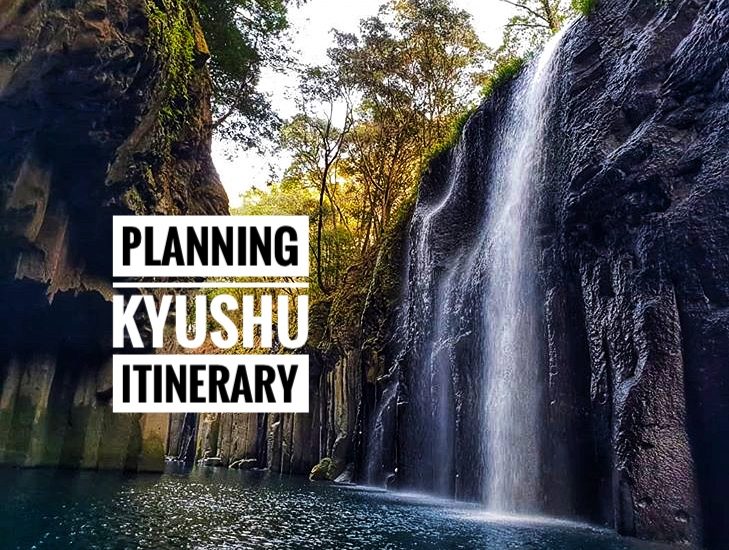
10 Days Kyushu Itinerary: A Complete Travel Guide Blog
Last updated on June 12th, 2024
If you are planning the Kyushu itinerary, this ultimate Kyushu travel guide blog has all the essential information including things to do, where to stay, and money-saving tips for your Kyushu trip.
Kyushu (九州) is Japan’s third-largest island and is located southwest of the main island Honshu. Literally, as nine provinces, Kyushu encompasses seven prefectures: Fukuoka, Kumamoto, Nagasaki, Oita, Saga in Northern Kyushu, and Miyazaki, Kagoshima in Southern Kyushu.
An early center of Japanese civilization, Kyushu offers many historic treasures, modern cities, and natural beauty. Undoubtedly, there are numerous things to do and delicious local dishes to eat in Kyushu. From stunning coastlines at Miyazaki, active volcano Mount Aso, mysterious Takachiho gorge, and hot spring paradise in Beppu, Kurokawa Onsen, and Yufuin. Additionally, Kyushu is the birthplace of many mouthwatering Japanese cuisines. The world-famous Ichiran tonkatsu ramen also origin from Kyushu.
However, take note that the Kyushu region is huge. It can be very headache when planning on the Kyushu itinerary. Additionally, most of the top attractions are scattered around in different places. It also takes time and effort for traveling around. So it is important to have a rough idea of Kyushu’s attractions before starting planning for your Kyushu itinerary.
In this Kyushu travel guide blog , we will share things to do and how to arrange transport to get there. Most importantly, some of the useful guides and money-saving tips when planning your Kyushu trip itinerary. This ultimate travel guide blog has all the essential information including things to do, where to stay, and money-saving tips for your Kyushu trip.
Table of Contents
Pre-Trip Essential
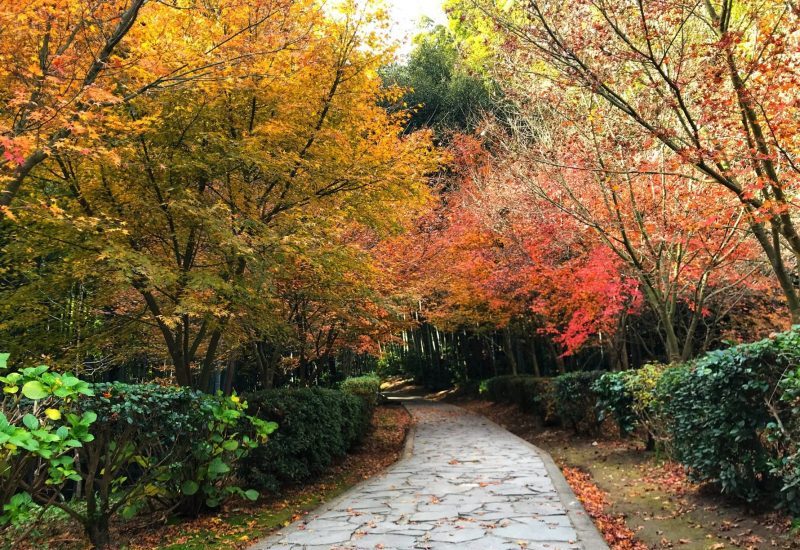
How Many Days Do You Need in Kyushu? It takes at least 14 days to visit all the top sights in Kyushu, not counting those Kyushu’s hidden gems. Bear in mind, that Kyushu is a huge region and there are so many things to do and see in Kyushu. Moreover, most of the top attractions are scattered around in different places and prefectures.
However, if you only have limited time, it is recommended to narrow down the places and focus on either Northern or Southern Kyushu for 5 days or even 7 days Kyushu itinerary. So, you won’t waste too much time on transport arrangements.
Best Time To Visit Kyushu You can visit Kyushu Japan at any time of the year as it is a great place to visit all year round. Kyushu has its charm and is rich with historical, cultural, and natural scenery and is beautiful in every season, whether spring, summer, autumn, or winter. Most importantly, Kyushu is less crowded compared to Tokyo, Kyoto, or Osaka. Additionally, for budget travelers, Kyushu is the perfect destination to visit as travel expenses is much cheaper compared with those busy city. But take note that most of the cities in Japan may be impacted by typhoons from mid-August to September. So try to avoid those two months.
How is the Kyushu weather? Due to its geographic location, the weather climate in Kyushu isn’t as freezing as the one in Hokkaido. However, you can still expect chilly weather. It can be very cold if you are getting to the mountainous area of Kyushu such as Takachiho Gorge and Mount Aso.
Here are some places and top attractions that you can consider on your Kyushu itinerary.
Places to visit in the Northern region in Kyushu Itinerary:
- Fukuoka Prefecture : Fukuoka, Dazaifu, Mojito Retro, Kokura (2 to 3 Days)
- Saga Prefecture : Takeo Onsen (1 Day)
- Oita Prefecture : Oita, Yufuin (2 to 3 Days)
- Nagasaki Prefecture : Nagasaki, Sasebo (Kujukushima Island), Huis Ten Bosch (2 to 3 Days)
- Kumamoto Prefecture : Kumamoto city, Mount Aso, Kurokawa Onsen (3 Days)
Places to visit in the Southern region in Kyushu Itinerary:
- Miyazaki Prefecture : Miyazaki, Takachiho Gorge (2 Days)
- Kagoshima Prefecture : Kagoshima, Sakurajima, Kirishima, Ibusuki (2 to 3 Days)
Among all the top attractions in Kyushu, Takachiho Gorge (Miyazaki), Kurokawa onsen (Kumamoto), and Yufuin (Oita) are the top priority and must-visit in my Kyushu itinerary. While Fukuoka is always my first approach and last city before getting to/from Kyushu. It is also a great base if you are planning to travel to nearby attractions such as Kitakyushu, Mojiko, and Kokura.
Where To Stay
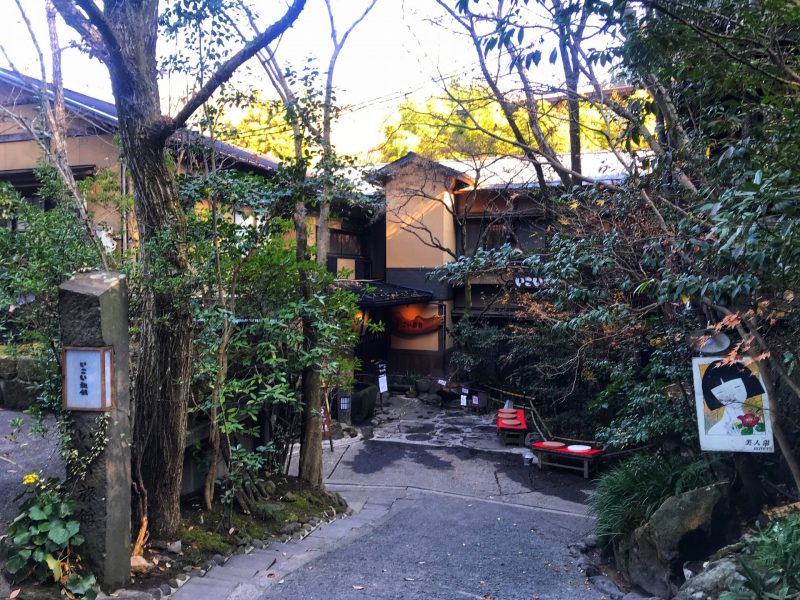
Kyushu has a wide range of accommodation options ranging from hotels, to guesthouses, and cozy hostels to choose from. To find your lodging options, it’s important to first plan your Kyushu itinerary and transport mode. Bear in mind that Kyushu is huge and each prefecture has its attractions.
For the Kyushu itinerary by using public transport, we advise staying nearby the station. It provides access to most of the attractions and easy getting around. One of the great examples is Fukuoka. It is my great base before ending our Kyushu trip.
We booked and stayed in Montan Hakata Hostel . This designed concept hostel provides a private room with an en-suite bathroom for two, three, or four-person beds, and also a dormitory with a bunk bed for solo travelers. Simple breakfast for free! It was located about a 10-minute walk to Hakata Station and a 5-minute walk to Higashi-Hie subway station. So we were given the option to choose either station.
For the traveler’s plan for a self-driving Kyushu itinerary, the accommodation options are much more varied. You can choose from Japan guest houses, homestays, or even traditional ryokan stay.
Here is the accommodation guide on popular places if you are looking for where to stay in Kyushu:
- Where To Stay in Fukuoka: Hakata or Tenjin
- Kumamoto Accommodation Guide: Best hotel and areas
- Where To Stay in Kurokawa Onsen
Planning on Kyushu Itinerary
There are many top attractions and a must-see in Kyushu and some of those very great destinations that I don’t want to miss. So we were so dilemma to plan the most perfect Kyushu itinerary and keep on adjusting on schedule. But don’t forget that Kyushu is a huge island. So it is best to plan out what is your interest and want to visit. From that, planned out the order you want to go then mapped out the best way to travel between the cities. Bear in mind that, transportation is also a headache and you need to understand the best way to travel.
The Ultimate 10 Days Kyushu itinerary:
- Day 1: Arrived in Kyushu and headed to Kumamoto from Fukuoka.
- Day 2: Day trip to Takachiho Gorge
- Day 3: Mount Aso – Kurokawa Onsen. Stay at Kurokawa Onsen.
- Day 4: Kurokawa Onsen – Beppu.
- Day 5: Beppu (Jigoku Meguri Tour).
- Day 6: Yufuin – Kokonoe.
- Day 7: Nagasaki or Huis Ten Bosch.
- Day 8: Sasebo (Kujukushima Island)
- Day 9: Kitakyushu (Shimonoseki, Mojiko , Kokura)
- Day 10: Fukuoka – Yanagawa- Dazaifu. Goodbye Kyushu.
The above recommendations are just my personal experience and focus on Northern Kyushu. In fact, we make another visit to Kyushu, focusing on Southern Kyushu to Kagoshima and Kirishima. Still, there is still many more hidden gem awaiting you to explore.
The above itinerary just showcases that Kyushu has so much to offer and we are impossible to cover all the things to do in Kyushu within 10 days of the Kyushu itinerary. This is the ideal Kyushu itinerary for your reference. Added, there are also lots of seasonal things to do and see in spring, summer, fall, and winter. You are free to adjust based on your interest, travel date, transport, and budget.
So, let’s start to explore and tour in more detail the Kyushu itinerary.
Day 1: Kumamoto
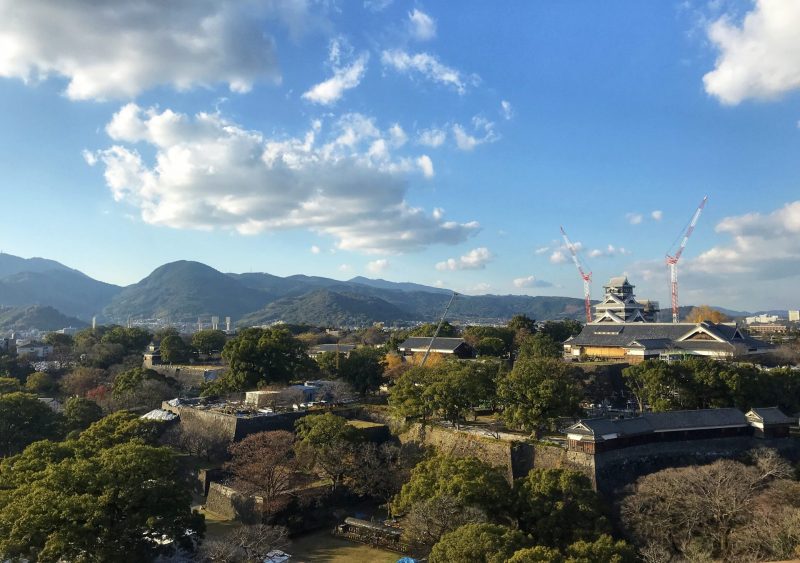
Start your Kyushu itinerary by visiting Kumamoto prefecture. Sadly to say that Kumamoto had the biggest hit during the 2016 earthquake. The Top three Premier Castle in Japan, Kumamoto Castle is badly destroyed by this natural disaster. The reconstruction and repairing work needs to take a least 20 years. Now, part of the Kumamoto Castle group is open to the public for free visits without a ticket. But you still can spend some time visiting the historical castle, meet the cuties Kumamon, and enjoy the best food in Kumamoto.
Related Article : Things To Do in Kumamoto: 1-Day Itinerary
Getting there : Highway bus from Fukuoka International Airport, or Hakata and Tenjin Station. Alternatively, 50 minutes Shinkansen ride will get you from Hakata Station (Fukuoka) to Kumamoto.
Pro Tips : Using SunQ Pass for the bus route or Kyushu JR Pass for train ride. Plan your itinerary to save on transportation fee.
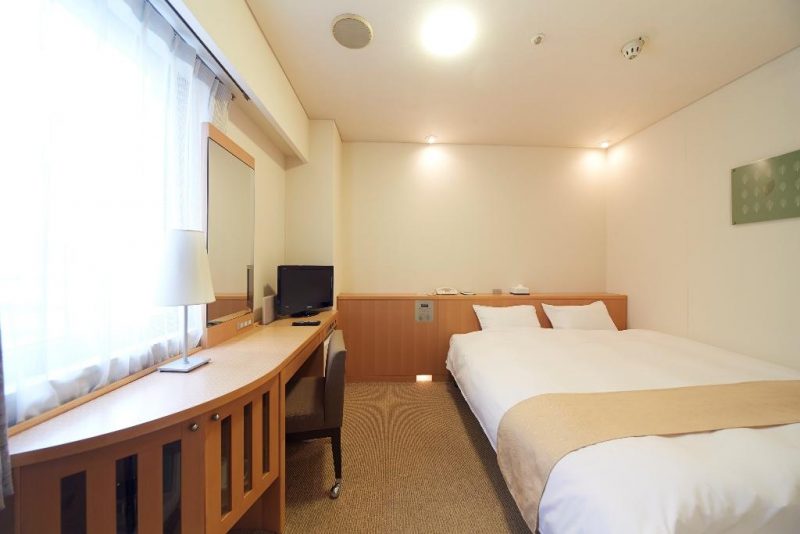
Where To Stay : We recommended staying somewhere near Sakuramachi Bus Stop (the central bus station downtown). Nest Hotel Kumamoto is a three-star business hotel strategically situated approximately 2-mins walk from the bus station. I would recommend it as it is convenient and at a reasonable price.
Alternatively, Dormy Inn Kumamoto Natural Hot Spring is strategically located with the bus terminal is directly opposite the hotel. It will greatly help to save time and energy if you are planning to travel for a day trip to Takachiho Gorge the next day.
More accommodation options from Where to Stay in Kumamoto: Best hotel and areas .
Day 2: Takachiho Gorge
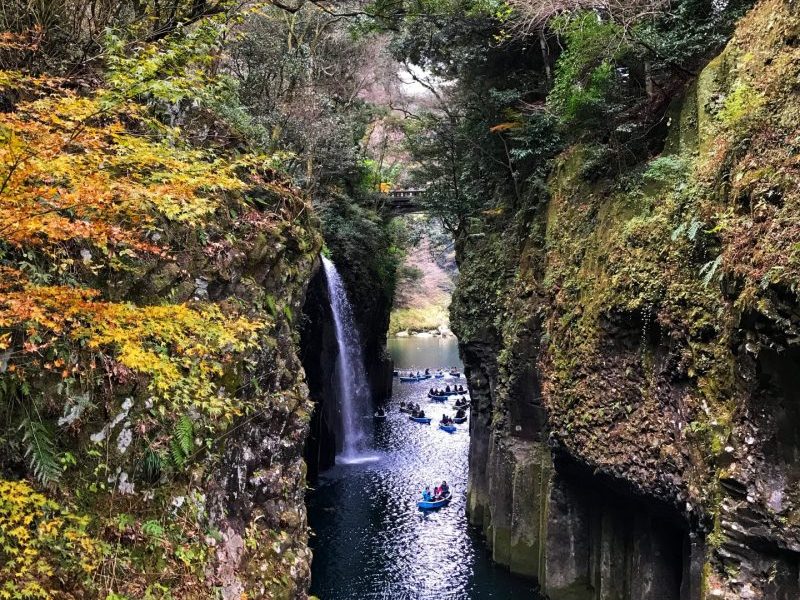
In my Kyushu itinerary, Takachiho Gorge is a must-visit attraction on my bucket list. The mysterious V-shaped gorge has to be one of Miyazaki prefecture’s most famous sights. It was formed from the volcanic lava from Mount Aso, flowing through the Gokase River which resulted in the 100-meter-high cliffs of volcanic basalt columns. Rowing the boat in Takachiho Gorge and mesmerizing the Manai fall from below. The breathtaking look is even more spectacular with yellow leaves during Autumn.
Related Article : Takachiho Gorge Travel Guide: 1-Day Itinerary Blog
Getting there : Bus from Kumamoto to Takachiho Bus Station, and then get to Takachiho Gorge.
Where To Stay : Day trip to Takachiho Gorge is doable. If you planning for an overnight stay, Solest Takachiho Hotel is a good option. This gorgeously designed hotel is featuring Japanese and Western-style accommodations. The location is excellent and easy access to major attractions within walking distance.
Day 3, 4: Mt Aso – Kurokawa Onsen
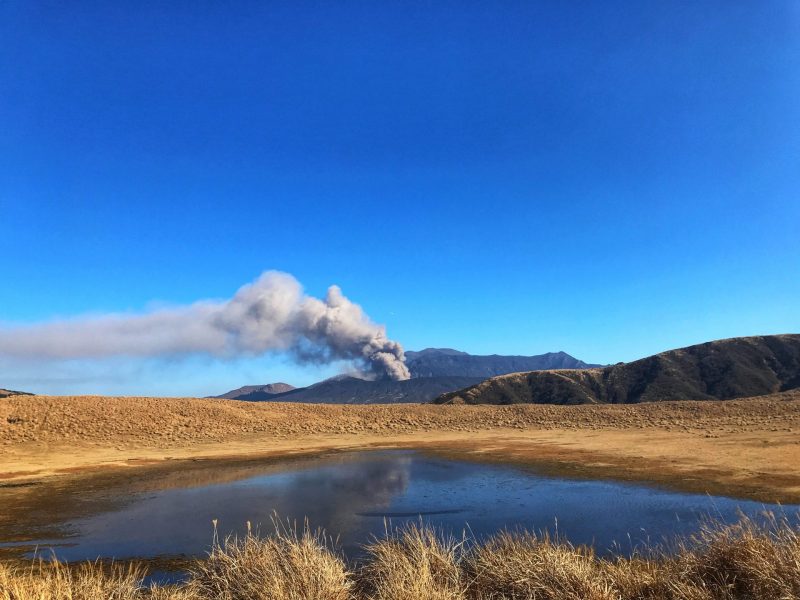
Next, let’s head to Asosan, the largest active volcano mountain in Japan . It has one of the largest calderas in the world, allowing viewing of real volcanic eruptions with a closer view. However, take note that Mount Aso will close for a visit if the volcano activities are too frequent. So make sure to check on it before your visit. If this is the case, you can spend your time wandering in Kusasenri, an amazing vast grassland with Asosan as a backdrop.
- Things To Do in Aso For 1-Day Aso Itinerary
Getting there : Take the Kyushu Odan Bus from Kumamoto to Aso Station and then transfer to the local Sanko bus.
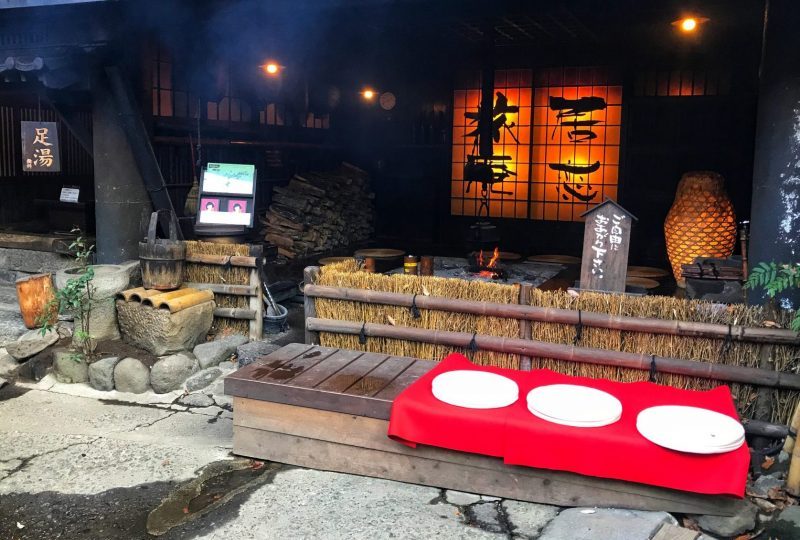
A visit to Kyushu is incomplete without soaking in a natural hot spring bath. You probably won’t miss your visit to Kurokawa Onsen which is located about 2 hour’s driving journey from Kumamoto city. It is one of the most magnificent traditional hot spring towns in Japan and boasted of various unique onsen baths. Visitors can get the Onsen Hopping Pass and enjoy three different hot springs from the ryokan list. But, it is worth spending one night and relaxing in the laid-back quaint hot spring town.
- Kurokawa Onsen: A Guide To Natural Hot Spring Town
Getting there : Take the Kyushu Odan Bus from Kumamoto/Mt Aso to Kurokawa Onsen.
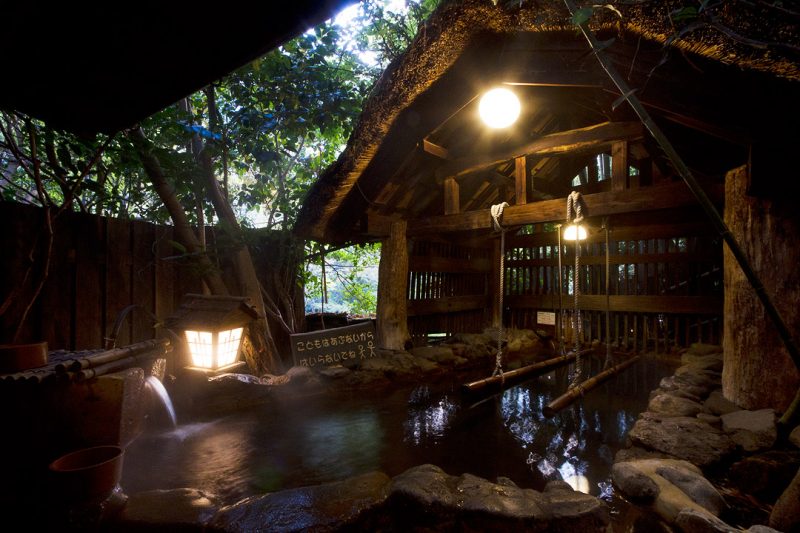
Where To Stay : We recommended spending one night in Kurokawa onsen. Ryokan Ikoi is one of the great options for those who prefer to experience the rustic traditional ryokan stay. After the tiring traveling days, allow yourself to get out of the hustle and bustle and soak into the onsen bath. One of the best experiences in the Kyushu itinerary.
Alternatively, take a look at our best ryokan pick in Kurokawa Onsen . There are many more recommendations that suit your budget and travel style.
Day 5: Beppu
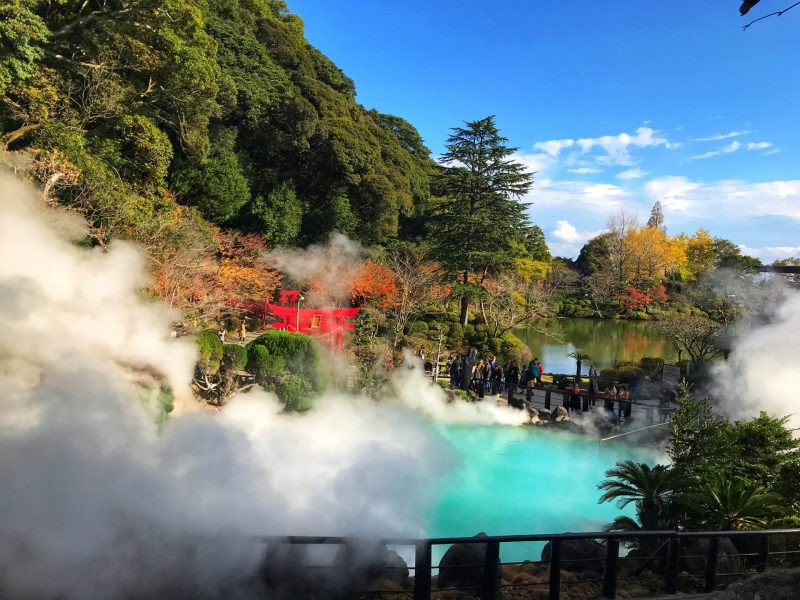
Beppu is one of the popular hot spring towns in Oita prefecture. Beppu city has more than two thousand hot spring spots and is blessed with a variety of hot spring resources. Local make use of onsen for various interesting activities.
During your Kyushu itinerary in Beppu, you can view on colorful hot spring attraction at Jigoku Meguri, consisting of 8 unique hot spring spots . Taste the hot spring steamed dishes at Jigoku Mushi Kobo and also Jigoku pudding dessert. Lastly, enjoy a unique sand bath heated by hot spring water.
- Beppu Itinerary: Ultimate Travel Guide Blog
Getting there : Highway bus running between Beppu and major cities in Kyushu. Added, frequent JR train connects between Hakata Station and Beppu.
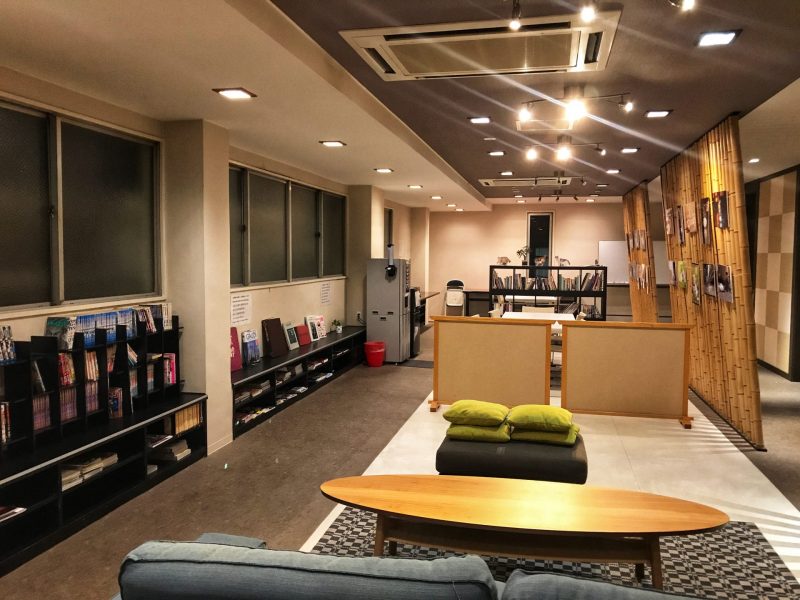
Where to Stay : We choose to stay in Nogami Honkan , a traditional ryokan with modern facilities in Beppu. It is located at an easily walkable distance from the train and bus stations. You can choose even the nearest at Beppu Kamenoi Hotel , a three-star hotel located nearby Beppu station within a 5-minutes walk.
Read More : Where to Stay in Beppu [Best Hotels and Ryokans]
Day 6: Yufuin
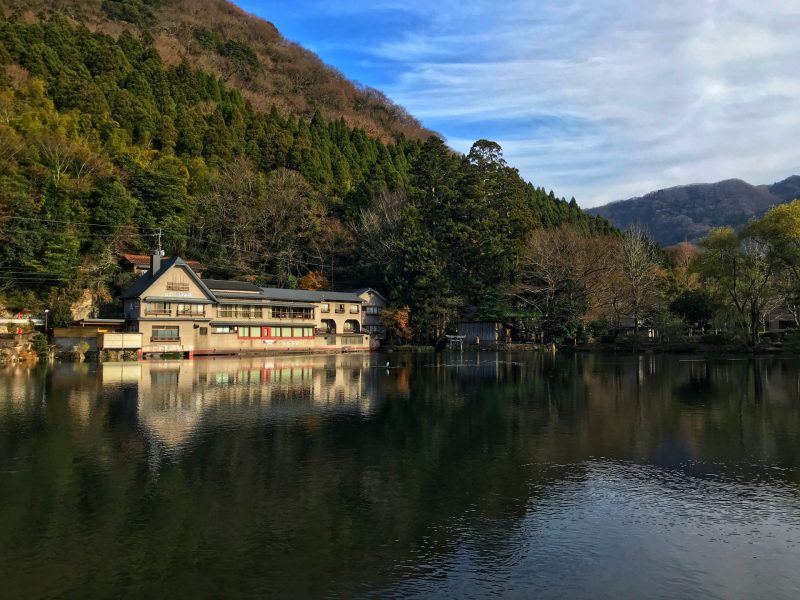
Yufuin (由布院/湯布院) is the most popular sightseeing spot in Oita prefecture. This onsen town is boasted unique cafes, restaurants, and shops selling high-quality locally-made handicrafts, boutiques, and art galleries. Enjoy a scenic stroll along the Yunotsubo Kaido, sample various Japanese snack food, and enjoy the atmosphere. End your walk at the beautiful Kinrin lake (金鱗湖, Kirinko) that is fed by onsen waters.
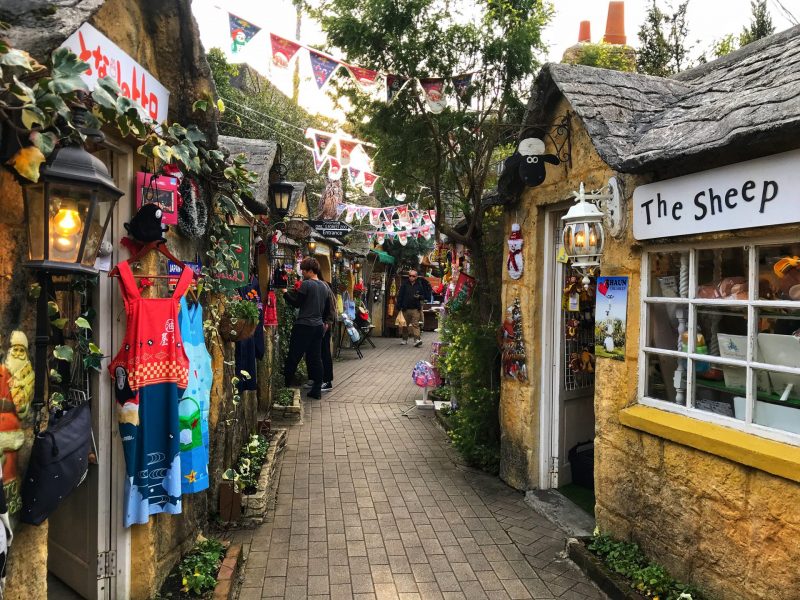
Stopped by Yufuin Floral Village for its colorful and vibrant Europe settling town. The narrow street was lined with yellow-painted souvenirs and toys shops and decorated with colorful flowers, vintage lamps, and decorations. Added, you can find the owl museum, a cat cafe, and even an animal encounter zone. Plenty of photo opportunities at every corner.
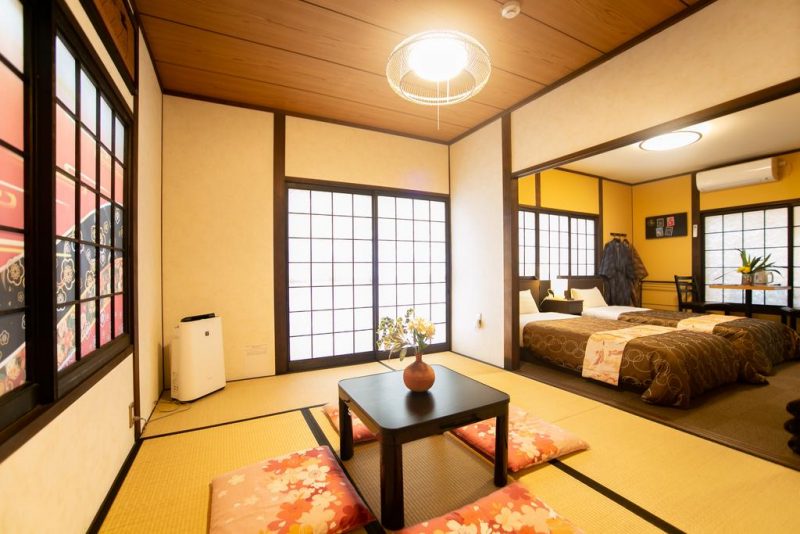
As an onsen enthusiastic, we spend another night in Yufuin. There are many charming ryokan inns featured with an onsen hot spring bath in Yufuin. Our recommendation is the Yufuin Lamp no Yado . It s a more than traditional onsen ryokan with a renovated 175 years building structure in Yufuin. Staying one night in Yufuin with kaiseki dinner is very wonderful.
Here is the best ryokan list on where to stay in Yufuin . Take a look if you are interested.
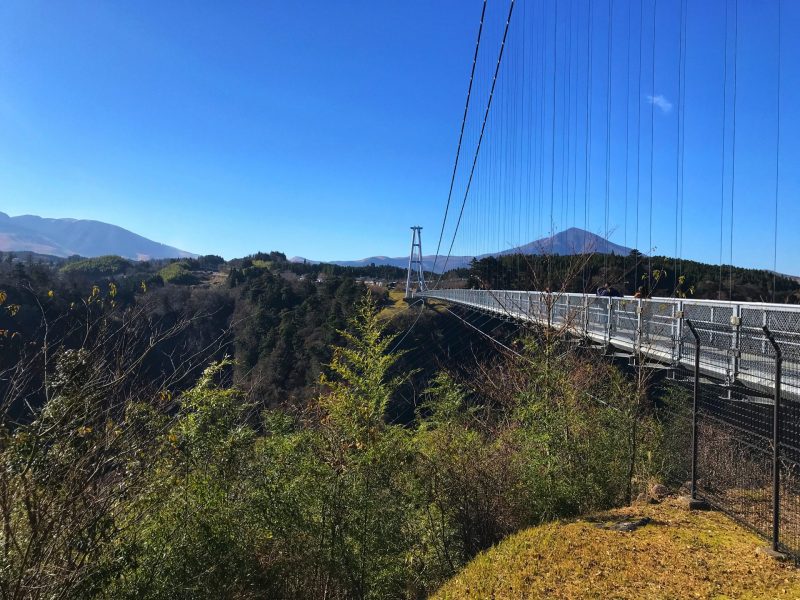
If you have more time, consider to had a half-day trip to Kokonoe Yume Otsurihasi (九重”夢”大吊橋) , Japan’s Highest Pedestrian Suspension Bridge. The construction of this grand suspension bridge purely comes from the public without any subsidy from the government. And that’s is the name “The Dream of Kokonoe” comes from. This is also the best place to view fall foliage during Autumn.
Walking through the suspension bridge, mesmerized by the beautiful view surrounding me and grab the Kokonoe burger for a snack. Worth a half-day visit to this natural scene. However, please take note of time allocation due to infrequent and not well-connected transport arrangements.
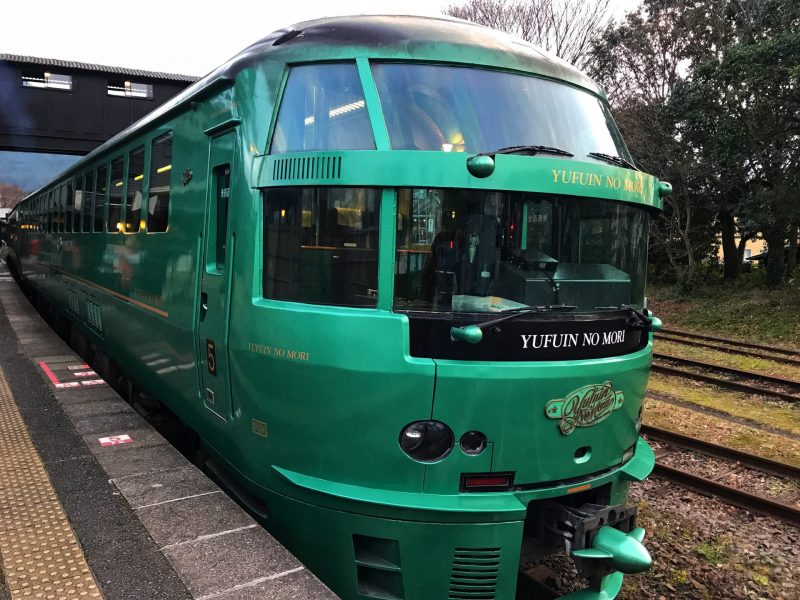
One popular transport to note is Yufuin no mori (ゆふいんの森) which runs between Hakata and Yufuin. It is a popular sightseeing train and reservation is a must. The train is beautifully decorated with a forest theme and offers a great view along the train ride.
More information and itinerary travel guide in Yufuin and Kokonoe:
- Yufuin Travel Guide: Must Eat Food And Things To Do
- Where To Stay in Yufuin: Best Ryokan in Yufuin
- Kokonoe Yume Otsurihasi: A Walk To Japan Highest Suspension Bridge

Day 7, 8: Nagasaki – Huis Ten Bosch – Sasebo
Plan your Kyushu itinerary to Nagasaki Prefecture for 2 or 3 days of visit. You can pick from Nagasaki city (1 or 2 days), Huis Ten Bosch (1 day), or Sasebo (1 day) depending on your interest.
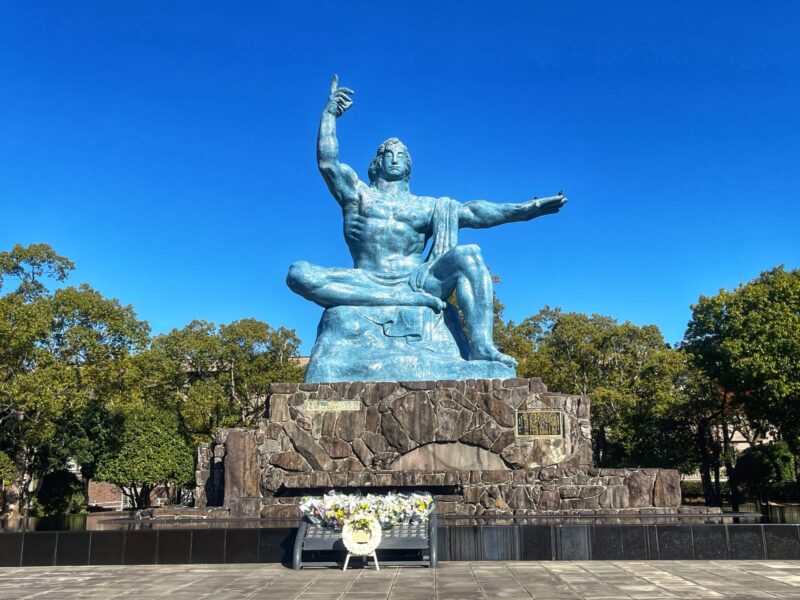
Nagasaki city is worth the recommendation. It has extensive insights into World World II with Nagasaki Atomic Bomb Museum, Nagasaki Peace Park, and historical memorial.
Moreover, being one of the port cities open to foreigners during Japan’s isolation period, Nagasaki is a charming city that perfectly combined Japanese and Western cultures. The Dutch, Portuguese, and Chinese influences from the 16th century until nowadays. The Nagasaki Chinatown, also known as Shinchi Chinatown, is Japan’s oldest Chinatown. It is best known for famous local noodle dishes, Champion and Sara udon.
Further Read on : Nagasaki Itinerary: A Travel Guide Blog
Plan your visit to Huis Ten Bosch , the largest amuse theme park in Kyushu with the ambiance of a 17th-century Dutch town. It is also particularly beautiful with Dutch windmills and European architectural buildings, especially during the tulips festival. Lots of fun and shows such as water magic, fire performance, lighting & music canal parade, concert, and more.
Kyushu Travel Tips : Get Discounted Huis Ten Bosch Ticket
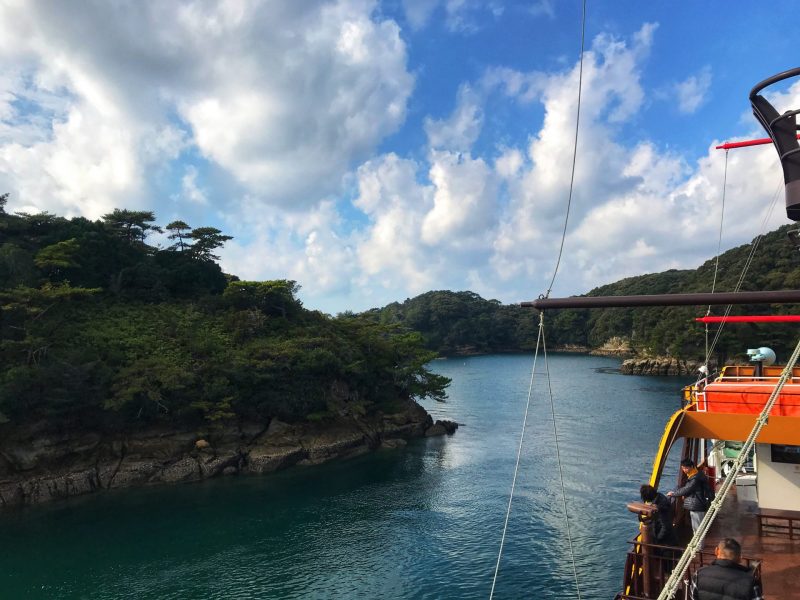
Not to forget the Kyushu hidden gem, Kujukushima (99 Island) in Sasebo , Nagasaki prefecture. It is one of the top attraction spots that we highly recommended for your Kyushu itinerary. Although the name is called ninety-nine islands, there are a total of 208 uninhabited islands at the coast bay. Enjoy the sightseeing cruise to mesmerize the beautiful coastal view.
Ticket Information: The Kujukushima Sightseeing Cruise: ¥1,500 for an adult and ¥750 for kids (4-15). Get Ticket from Klook .
Getting there : From Hakata Station (Fukuoka), take the highway bus or JR train to Sasebo/Nagasaki/Huis Ten Bosch. Approximate 2 hours journey.
Further Read on : Sasebo Itinerary: Kujukushima Sightseeing Cruise
Day 9: Kitakyushu (Shimonoseki, Mojiko, Kokura)
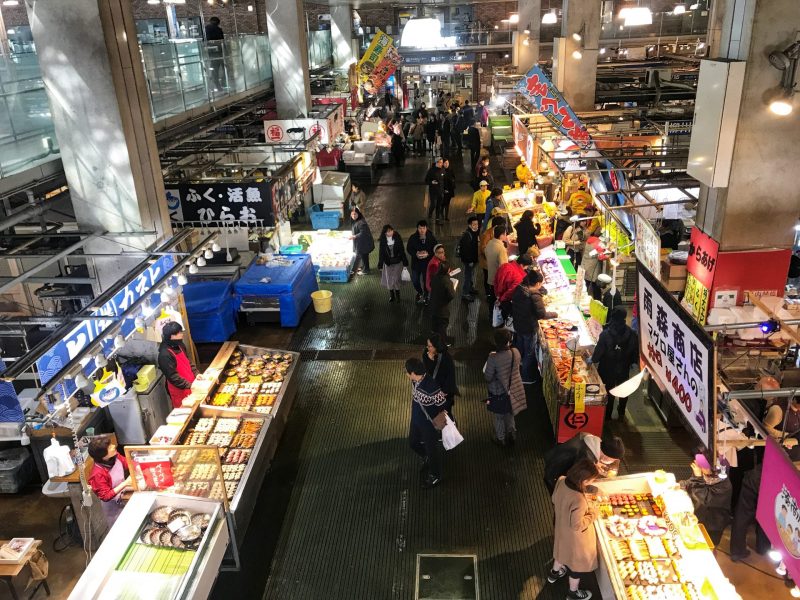
Kitakyushu is the northernmost city in Kyushu between the Honshu in Japan. From Fukuoka, you can visit both of Japan’s islands in one day. You can even cross these two islands through the underground water tunnel which is connected between Mojiko and Shimonoseki.
Take a 5 minutes ferry from Mojiko to the Karato market in Shimonoseki . Started your day with marvelous sushi, sashimi, and seafood dishes in Karato Market. The fresh market will host the sushi event on Friday, Saturday, and Sunday. It served freshly caught seafood and was popular for fugu (pufferfish) at a cheap price. The Karato market is located only 5 minutes ferry from Mojiko.
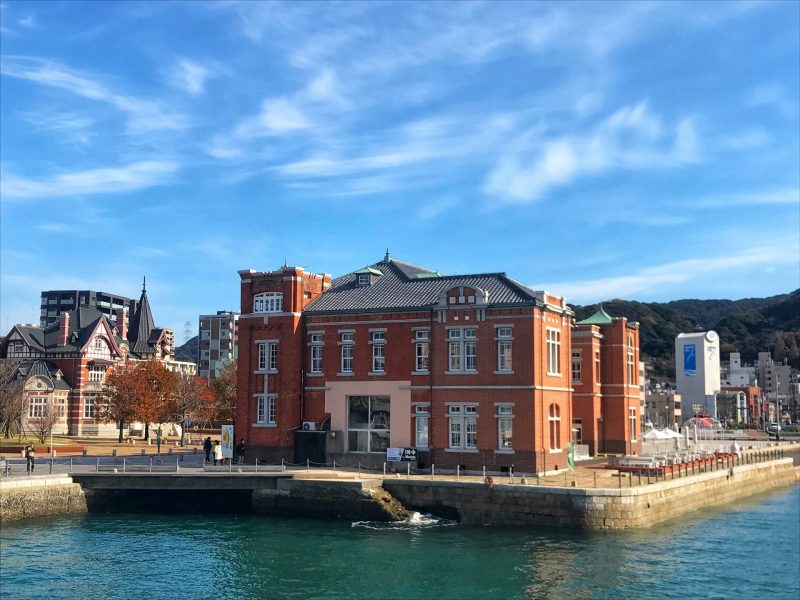
Then strolling in Mojiko retro area to enjoy Neo-Renaissance style architecture with the breezing wind. If you still have more room, you must also try the yaki curry here. The baked curry with cheese is Mojito’s specialty.
You can even plan a short visit to Kokura Castle and go to the Tanga Market for another food hunt. The entire Kitakyushu area has a sense of tranquility and is a great place for a relaxing stroll.
Free feel to continue to read below:
- [Kitakyushu] 1-Day Kitakyushu Itinerary To Shimonoseki, Mojiko, Kokura
- [Kitakyushu] Karato Market: Sushi Battle Event in Shimonoseki
Where we stayed : Montan Hakata Hostel is a designed concept hostel located about a 5-10 minutes walk to the nearby subway station.
Day 10: Fukuoka – Yanagawa- Dazaifu
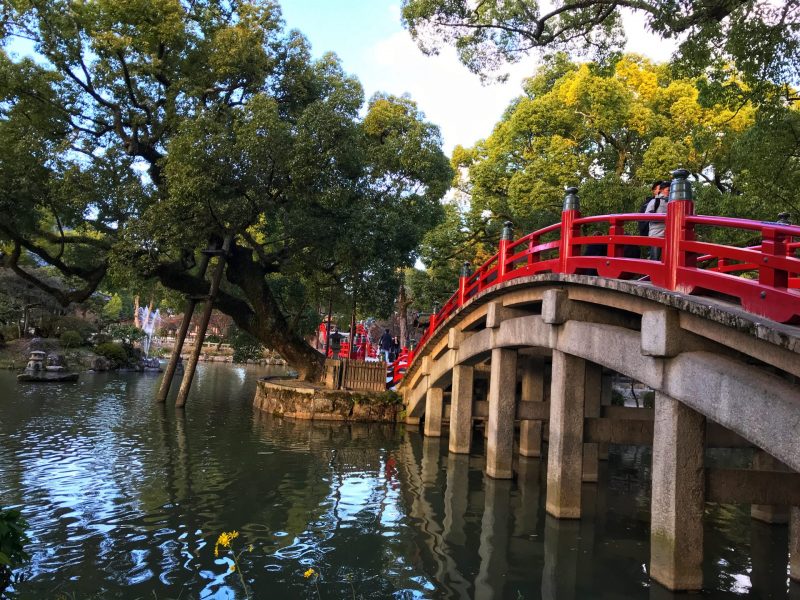
Fukuoka is the biggest and busiest city in Kyushu. It is also the main transportation hub for visitors when visiting Kyushu. Frequent shinkansen, JR train, and international and domestic flights welcome thousand of travelers per day. It’s a great starting off and ending point for your Kyushu itinerary. Additionally, you can also make use of the JR train and visit the nearby attraction.
Similar to most of the bustling cities in Japan, Fukuoka has a lot of shopping mall stores such as Hakata Canal City, and Tenjin shopping group to fulfill your shopping needs. Aside from that, Fukuoka is also well-known for its food and birthplace of many local cuisines. The Hakata ramen, mizutaki, motsunabe are must eat food in Fukuoka. Yatai food stalls are also one of the unique food cultures that you can widely find in the city.
Plan your visit to Yanagawa, the Japan version of Venice with a traditional boat ride through the picturesque canal build around the castle town. Don’t forget to taste the Unagi rice for lunch in Yanagawa. Next visit the Dazaifu Temangu, one of the most important Temangu shrines in Japan.
Read more : Things to do on Your Fukuoka Itinerary
Where we stayed : Another one-night stay in Montan Hakata Hostel .
Kyushu Transport Guide
Getting to kyushu.
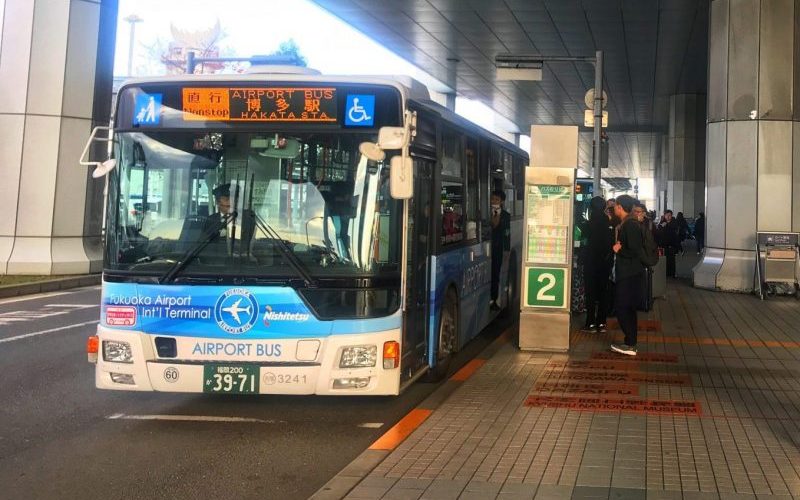
By Shinkansen : Tokyo and Fukuoka (Hakata Station) are connected with Tokaido/Sanyo Shinkansen. One way journey takes about 5 hours and costs about ¥23,000. Foreigner travelers can get the Japan Rail Pass to save on this bullet train ride. However, take note that JR Rail Pass is not valid for Nozomi trains, and have to ride the Hikari train instead.
By Air : The biggest airport in Kyushu is located in Fukuoka. It is the main transportation hub for domestic and international travelers. Frequent domestic flights per day from Tokyo to Fukuoka and other cities in Japan. It also welcomes international travelers from Hong Kong, China, Taiwan, South Korea, the Philippines, Malaysia, and more.
One of the best things about flying to Fukuoka is the city is located extremely near to the airport. It is only about 2 stops of a subway ride with about 10 minutes at ¥260. Take note that the subway station is situated at the domestic terminal building. But glad that a free shuttle bus service is connecting the international domestic building in Fukuoka Airport.
Further Read : From Fukuoka Airport To City By Bus, Subway, and Taxi
Friendly Reminder: Nowadays, mobile data is invaluable and extremely useful when traveling in Kyushu. Being able to research a place to visit and having real-time navigation was invaluable and we highly recommend purchasing to get your mobile once you arrive in Japan. It is advisable to reserve early as it was cheaper than purchasing on arrival.
Click here to pre-book unlimited 4G Sim Card and Wifi router .
Getting Around in Kyushu
There are only two ways for getting around in Kyushu, either by self-driving or public transport. My advice is to plan out what you want to see and then look for transport to travel between the cities and attractions.
Although the southern region such as Kumamoto, Kagoshima, and Miyazaki is accessible by shinkansen or local train. But most of the attractions are only can be accessed by self-driving or buses. While the northern region such as Fukuoka, Nagasaki has better railway service with a train and metro system in town.
Self Driving in Kyushu
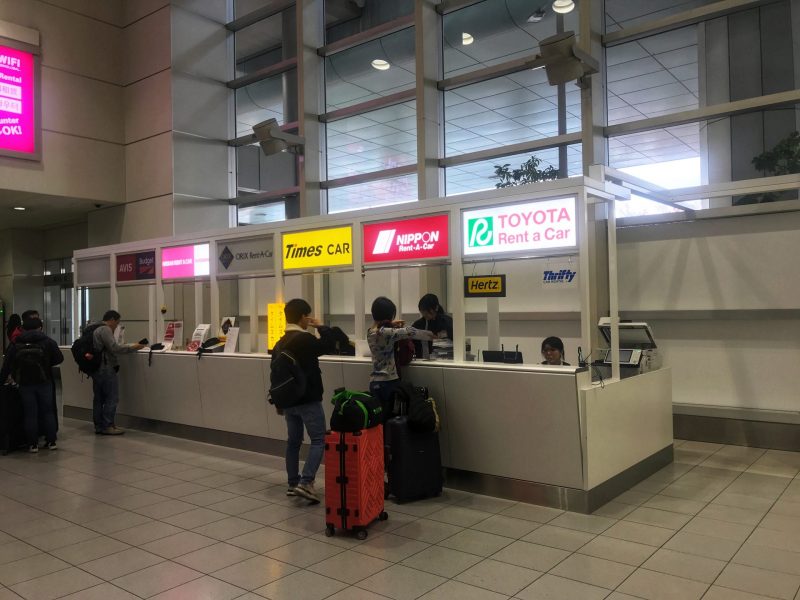
Kyushu is very ideal to plan for Kyushu self-driving itinerary especially when you are traveling with the elderly and kids. Self-driving in Kyushu allows you slowly travel around at a slow pace. You can book your rental car and pick up your car at the airport. It is also much cheaper when traveling in a group and flexible. For hassle-free, consider getting the Kyushu Expressway Pass to save on the toll fee.
Click here to check for your best price for the wheel from RentalCars.com .
If you’re wondering how should approach renting a car in Kyushu, check out this article for some useful tips on How to Rent A Car For Self Driving in Japan .
By Using Public Transport
Transportation is not cheap when getting around in Kyushu. Luckily, Japan offers various transport passes that allow you to take unlimited trains and buses at a cheaper price. This is a great deal for foreign visitors as we need to travel around to many cities. You need to pick one of two transport pass to save some money.
Below is the popular and top pick for Kyushu Transport Pass that you need.
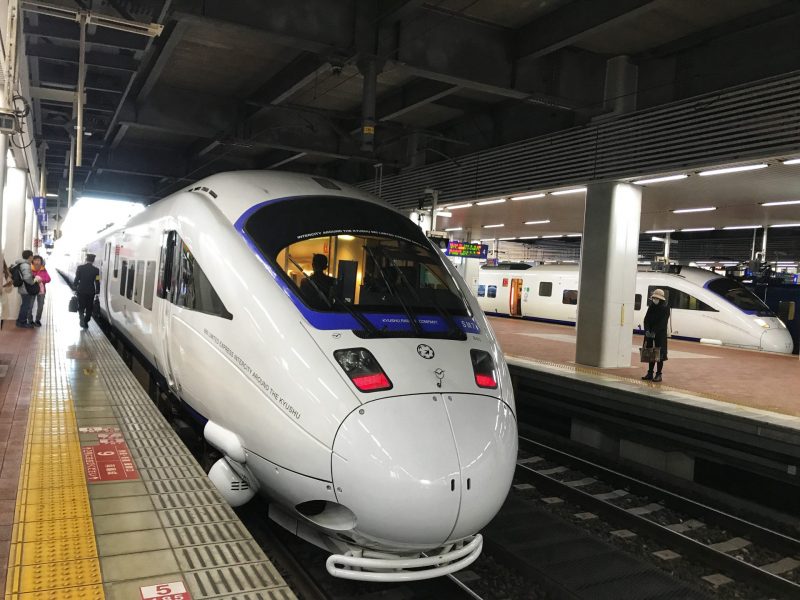
If you plan on visiting multiple destinations on Kyushu Island by train, worth to consider to get a JR Kyushu Rail Pass . There are 3 types available: the Southern Kyushu Pass, the Northern Kyushu Pass, and the ALL Kyushu Rail Pass.
Kyushu JR Pass (More info about the validity, price, and coverage)
- All Kyushu Area : 3-Days at ¥20,000, 5-Days Pass at ¥22,500, and 7-Days Pass at ¥25,000
- Northern Kyushu Area : 3-Days Pass at ¥12,000 and 5-Days Pass at ¥15,000
- Southern Kyushu Area : 3-Days Pass at ¥10,0000
- Fukuoka Wide : 2-Days Pass at ¥3,060
** Important Note : The cost of the Kyushu Rail Pass is officially increased on October 1, 2023. Still, it is worth grabbing a JR Kyushu Pass when traveling around Kyushu.
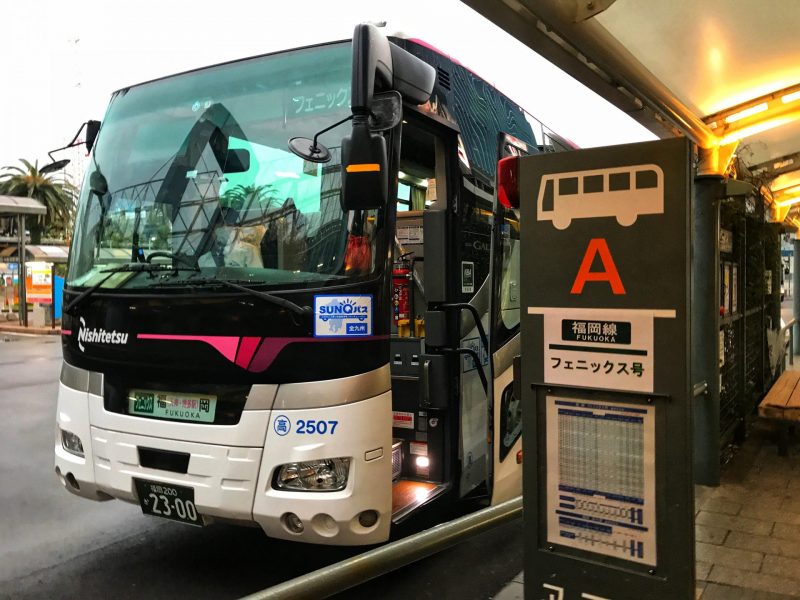
Moreover, some of the attractions such as Kurokawa onsen, and Takachiho Gorge are only accessible by self-driving or bus. If you are planning these places as part of your Kyushu itinerary, take a look at Kyushu SunQ unlimited Bus Pass . It covers almost 99% of highway and local buses in Kyushu.
SunQ Unlimited Bus Pass (More info about the validity, price, and coverage)
- All Kyushu SunQ Pass : 3-Days (¥11,000) and 4-Days Pass (¥14,000)
- Northern Kyushu SunQ Pass : 2-Days Pass (¥6,000) and 3-Days Pass (¥9,000)
- Southern Kyushu SunQ Pass : 3-Days Pass (¥8,000)
We have also documented how to reserve your seat ticket using each pass. Check it out if you need more information.
- Tips For JR Kyushu Pass Seat Reservation Online and Onsite
- How to make reservation on Kyushu Odan Bus
- How to reserve highway bus ticket in Kyushu Japan
Overview: Kyushu Itinerary
All in all, this Kyushu travel guide blog will give you some ideal things to do and see in Kyushu. There are various transportation options and attractions in each place. Free feel to check more detail on each travel blog when planning your Kyushu itinerary.
So, that’s it. Hopeful this Kyushu itinerary is helpful to plan for your Kyushu trip. If the above Kyushu travel guide can inspire you, feel free to continue reading on our travel blog below to know in more detail. Enjoy your Kyushu trip.
Northern Kyushu (Fukuoka, Kumamoto, Kurokawa Onsen, Beppu, Yufuin, Kitakyushu, and more):
- Fukuoka Itinerary: Ultimate Travel Guide
- Things To Do in Kumamoto: 1-Day Itinerary
- Nagasaki Itinerary: A Travel Guide Blog
- [Nagasaki] Sasebo Itinerary: Kujukushima Sightseeing Cruise
Southern Kyushu (Miyazaki, Takachiho Gorge):
- Kagoshima itinerary: A Travel Guide Blog
- Day Trip Sakurajima Itinerary: A Travel Guide Blog
- Miyazaki Itinerary: What to do and eat in Miyazaki
- Takachiho Gorge Travel Guide: 1-Day Itinerary Blog
You Might Interested:
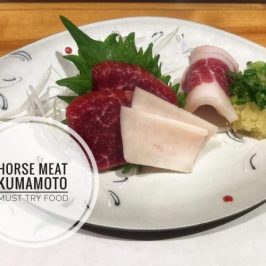
Suganoya Kumamoto: Must Try Food in Kumamoto
Do you ever tasted the basashi or horse meat sashimi? A must try local food...
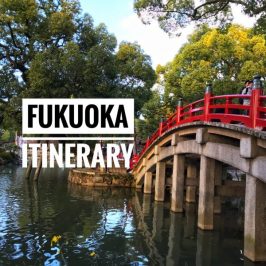
Fukuoka Itinerary: Travel Guide For What To Do in Fukuoka
An ultimate travel guide to plan on Fukuoka itinerary including things to do, where to...
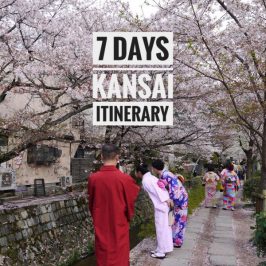
7 Days Kansai Itinerary: A Complete Travel Guide Blog
Last updated on April 27th, 2024 Planning on 7 days Kansai itinerary to Kyoto, Osaka,...
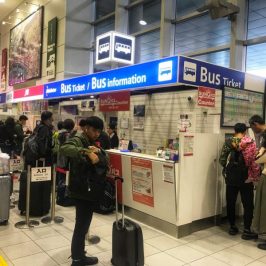
From Fukuoka Airport To Kumamoto by Bus, Explained
Read on to find out how to get to Kumamoto from Fukuoka Airport by highway...
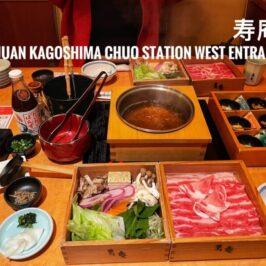
Juan Kagoshima: Berkshire Pork Shabu-shabu
We tried Kurobuta Black Pork at Juan Kagoshima Station West Entrance Branch, one of the...
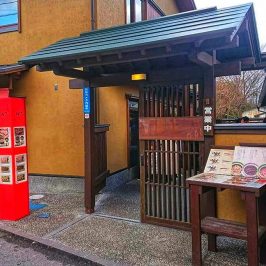
Yufumabushi Shin Food Blog: Must Eat Food in Yufuin
Enjoy eating the tasty best mabushi in Yufumabushi Shin, one of must eat in Yufuin....
Winter is here! Check out the winter wonderlands at these 5 amazing winter destinations in Montana
- Travel Destinations
30 Awesome Things To Do In Kyushu, Japan: The Ultimate Guide
Published: October 19, 2023
Modified: December 28, 2023
by Dianna Hatley
- Plan Your Trip
- Travel Guide
- Travel Tips
Are you planning a trip to Kyushu, Japan and looking for some unforgettable experiences? Look no further! In this ultimate guide, we have curated a list of 30 awesome things to do in Kyushu that will make your trip truly extraordinary. Kyushu, the third-largest island in Japan, offers a perfect blend of natural beauty, rich culture, and fascinating history. From soaking in hot springs and hiking scenic trails to exploring vibrant cities and indulging in mouthwatering cuisine, Kyushu has it all. Whether you are an adventure enthusiast, a history buff, or a foodie, Kyushu has something to offer for everyone. So, get ready to immerse yourself in the wonders of Kyushu as we take you on an exciting journey of discovery and exploration. Let’s dive in and discover the 30 awesome things to do in Kyushu, Japan!
Explore the historic streets of Nagasaki.
Immerse yourself in the rich history of Nagasaki as you stroll through its charming streets lined with traditional buildings and unique shops. Don’t miss the iconic Glover Garden and the solemn Peace Park, reminders of the city’s tragic past.
Soak in the beauty of Mount Aso.
Marvel at the breathtaking splendor of Mount Aso, one of the largest active volcanoes in the world. Take a cable car ride to the crater and witness the awe-inspiring view of the surrounding caldera.
Visit the enchanting Huis Ten Bosch theme park.
Step into a fairytale world at Huis Ten Bosch, a Dutch-themed amusement park. Enjoy the stunning replica of a Dutch village, beautiful gardens, and thrilling rides that will delight visitors of all ages.
Get immersed in history at Kumamoto Castle.
Experience the grandeur of Kumamoto Castle, one of Japan’s most impressive historical landmarks. Discover the fascinating architecture and explore the castle grounds, which offer spectacular views of the city.
Unwind in the soothing hot springs of Beppu.
Indulge in the ultimate relaxation at Beppu, a renowned hot spring destination. Soak in the rejuvenating waters of the various hot spring baths and immerse yourself in the peaceful atmosphere.
Discover the vibrant marine life at the Okinawa Churaumi Aquarium.
Dive into the underwater world at the Okinawa Churaumi Aquarium, home to an incredible variety of marine species. Be captivated by the majestic whale sharks and vibrant coral reefs that adorn the aquarium’s exhibits.
Take a scenic train ride on the Seven Stars in Kyushu.
Embark on a luxurious journey aboard the Seven Stars in Kyushu, a premium train known for its elegance and breathtaking views. Travel through picturesque landscapes and indulge in world-class services.
Explore the mystical Yakushima Island.
Immerse yourself in the untouched beauty of Yakushima Island, a natural wonderland thick with ancient cedar forests. Hike through the trails and be amazed by the island’s serene atmosphere.
Wander through the historic streets of Hakata.
Experience the charm of Hakata, Fukuoka’s historic district. Stroll along the bustling Nakasu River and enjoy the delicious local cuisine, including the famous Hakata ramen.
Witness the power of nature at Takachiho Gorge.
Be awe-inspired by the majestic Takachiho Gorge, a stunning natural formation carved by the Gokase River. Take a boat ride along the gorge and marvel at the breathtaking waterfalls and towering cliffs.
Visit the mesmerizing Yufuin Floral Village.
Immerse yourself in the beauty of the Yufuin Floral Village, a picturesque town filled with charming boutiques and stunning flower gardens. Enjoy a leisurely stroll and savor the serene atmosphere.
Explore the historical ruins of Iwaya Caves.
Delve into the ancient past at the Iwaya Caves, a fascinating network of caverns located on the remote island of Iki. Discover ancient rock paintings and witness the mysterious atmosphere of these natural formations.
Experience the magical Sand Sculpture Museum in Fukuoka.
Step into a world of sand art at the Sand Sculpture Museum in Fukuoka. Admire the intricate creations crafted by talented artists and be amazed by the detailed sculptures on display.
Take a ferry ride to Sakurajima.
Embark on a memorable ferry ride to Sakurajima, an active volcano located just a short distance from Kagoshima. Experience the thrill of being near a volcanic island and witness the natural beauty of this unique destination.
Discover the history of the Samurai at Karatsu Castle.
Travel back in time at Karatsu Castle, a well-preserved castle that offers a glimpse into the lives of the samurai. Explore the castle grounds and enjoy panoramic views of the surrounding area.
Explore the fairytale-like Kujuku Islands.
Embark on a scenic island-hopping adventure in the Kujuku Islands, a group of over 200 small islands scattered along the Nagasaki Prefecture. Enjoy stunning views, crystal-clear waters, and pristine beaches.
Experience the thrill of racing in Miyazaki.
Get your adrenaline pumping at the Miyazaki International Circuit, a world-class racetrack famous for hosting motorsport events. Take a ride in a go-kart or watch thrilling races that will leave you breathless.
Discover the art of pottery in Arita.
Learn about the centuries-old tradition of pottery in Arita, a town renowned for its exquisite porcelain. Visit local workshops, try your hand at pottery making, and bring home a unique piece of Arita ware.
Discover the beauty of Yufuin Onsen.
Indulge in the ultimate relaxation at Yufuin Onsen, a tranquil hot spring town nestled in the Oita Prefecture. Soak in the therapeutic waters and soak up the picturesque views of the surrounding mountains.
Take a scenic drive along the Yamanami Highway.
Embark on a picturesque road trip along the Yamanami Highway, known for its stunning landscapes and panoramic views. Enjoy the fresh mountain air and stop at the various viewpoints along the way.
Explore the historical Nagasaki Atomic Bomb Museum.
Gain a deeper understanding of the tragic events of World War II at the Nagasaki Atomic Bomb Museum. Discover the impact of the atomic bomb on the city and honor the memory of the victims.
Visit the picturesque Suizenji Garden in Kumamoto.
Immerse yourself in the tranquil beauty of Suizenji Garden, a traditional Japanese garden that features carefully manicured landscapes, serene ponds, and a replica of Mount Fuji. Take a leisurely walk and find inner peace in this peaceful oasis.
Explore the mysterious Takachiho Shrine.
Discover the mystical aura of Takachiho Shrine, a sacred Shinto shrine nestled in Takachiho Gorge. Experience traditional rituals and witness breathtaking views of the surrounding nature.
Marvel at the stunning views from Mount Inasa.
Scale the heights of Mount Inasa in Nagasaki and be rewarded with breathtaking views of the city and its harbor. Visit in the evening to witness the stunning city lights and experience a magical atmosphere.
Indulge in the delicious local cuisine of Kyushu.
Treat your taste buds to a culinary journey through Kyushu’s diverse cuisine. From the savory tonkotsu ramen of Fukuoka to the fresh seafood of Nagasaki, each region of Kyushu offers unique and delicious flavors to savor.
Experience the thrills of a traditional Japanese onsen.
Immerse yourself in the hot springs culture of Japan by enjoying a traditional Japanese onsen experience. Whether it’s a rustic mountain ryokan or a modern resort, Kyushu offers a plethora of options for a relaxing soak.
Explore the vibrant nightlife of Fukuoka.
Experience the electric atmosphere of Fukuoka’s nightlife scene. From bustling izakayas to lively clubs, the city offers a myriad of options for entertainment and fun after the sun sets.
Take part in a traditional tea ceremony in Saga.
Immerse yourself in the tranquility of a traditional Japanese tea ceremony in Saga. Learn about the art of tea preparation and enjoy the serene atmosphere of a traditional tea house.
Marvel at the extraordinary architecture of Daijingu Shrine.
Visit the remarkable Daijingu Shrine in Kumamoto, known for its grand architecture and beautiful design. Explore the tranquil grounds and pay respects to the deities worshipped at this sacred site.
Witness the mesmerizing Sandanbeki Cliffs in Miyazaki.
Be captivated by the stunning beauty of the Sandanbeki Cliffs, majestic cliffs that dramatically jut out into the ocean in Miyazaki. Take in the breathtaking views and feel the power of nature firsthand.
Q: How do I get to Kyushu?
A: Kyushu is easily accessible by both domestic and international flights. You can fly directly to major cities like Fukuoka, Nagasaki, and Kumamoto. Alternatively, you can also reach Kyushu by train or ferry from other parts of Japan.
Q: What is the best time to visit Kyushu?
A: Kyushu is beautiful all year round, but the best time to visit is during spring (March to May) and autumn (September to November) when the weather is mild and the landscapes are adorned with cherry blossoms or autumn foliage.
Q: Are there any must-visit hot springs in Kyushu?
A: Absolutely! Kyushu is famous for its hot springs. Be sure to visit places like Beppu, Yufuin, and Kurokawa Onsen for a rejuvenating soak in natural thermal waters.
Q: Can I explore Kyushu on a budget?
A: Yes, Kyushu can be explored on a budget. There are various affordable accommodations, street food stalls, and public transportation options available. Additionally, many attractions and natural wonders in Kyushu can be enjoyed for free or at a minimal cost.
Q: Is it necessary to speak Japanese in Kyushu?
A: While it can be helpful to know some basic Japanese phrases, most major tourist destinations in Kyushu have English signage and information available. Japanese people are also known for their hospitality and willingness to assist tourists, so language barriers should not pose a significant problem.

- Privacy Overview
- Strictly Necessary Cookies
This website uses cookies so that we can provide you with the best user experience possible. Cookie information is stored in your browser and performs functions such as recognising you when you return to our website and helping our team to understand which sections of the website you find most interesting and useful.
Strictly Necessary Cookie should be enabled at all times so that we can save your preferences for cookie settings.
If you disable this cookie, we will not be able to save your preferences. This means that every time you visit this website you will need to enable or disable cookies again.
cassiethehag
7, 10, 14-day Kyushu itinerary in beautiful Japan
Need some help with your 7 day Kyushu itinerary? In this post, I’ll give suggestions for how to spend one week or 14 days in Kyushu based on my own 10 day route around the island.
Please note that this blog post most likely contains affiliate links to products or services I use and love! If you click on the links, it means I get a little extra pocket money at no additional cost to you. This is what keeps my website ticking over – thank you!
I never expected my week in Kyushu to be my favourite of the four weeks I spent in Japan but it was a truly fantastic place to explore. I loved Fukuoka, the capital of Kyushu and a city with all the arcades, karaoke booths, temples and cute Japanese touches of its more famous city counterparts.
As someone who loves nature, seeing the volcanoes in Aso and Kagoshima was pretty awesome. Plus I was surprised to find multi-coloured hot springs in Beppu!
This post will be particularly helpful for anyone looking for a JR Kyushu rail pass itinerary or budget backpackers on the SUNQ Bus Pass. Everything on this list is accessible by public transport and suitable for families, couples – or solo travellers in Japan like me!
TIP: You must buy your JR Rail Pass before your trip. This is because the rail pass is only attended to be used by tourists. (There is a limited number available for direct purchase in Japan at a higher price.)
Buy your Kyushu JR Rail Pass here.
Click here for a 7, 14, or 21-day JR Rail Pass for the whole of Japan: Whole Japan Rail Pass

Table of Contents
7, 10, or 14 day Kyushu Itinerary :
- Begin in Fukuoka
- Back to Fukuoka
- Alternative Kyushu Japan itinerary route options
This is just an overview – read on below for more info about this fun-filled Kyushu itinerary!
It’s worth remembering Kyushu is huge, and you will have to be selective. I’ve tried to combine the BEST places that are fairly easy to access from each other, so you get a unique range of nature and cities to visit without suffering from travel burnout. If you prefer a slower pace and only have one week, be selective about which places you visit!
Thinking of visiting this beautiful part of Japan? Here are my suggestions for the ultimate 7 – 14 day Kyushu itinerary.
How to get to Kyushu?
Fukuoka great place to start and end your Kyushu Japan itinerary as it’s linked to the rest of Japan by Shinkansen. I took the train from Hiroshima direct to Fukuoka.
Alternatively, Fukuoka is made very accessible by its Hakata Airport. You can fly here internationally, or fly directly from Tokyo. It is particularly easy to fly here via Singapore since this is an international transport hub.
Kyushu itinerary (7-14 days)
I really liked Fukuoka as a city because it still has all of Japan’s craziness but it feels like a real, working city – it is the largest city in Kyushu. Don’t expect to see so many tourists when you visit Kyushu! It’s Fukuoka where I enjoyed arcades alongside the locals, my first karaoke booth experience, ate at a green tea-themed bakery and saw a very impressive anime water show.
This water show is free and can be seen at Canal City Shopping centre any evening at 8pm – it is the best I’ve ever seen, with projections which tell a story over an entire building, with perfectly timed fountains. Hard to explain but honestly worth it!
Speaking of, Canal City Shopping Centre is beautiful and worth a stop if you like shopping or not. The entire mall is built around an artificial canal. They also regularly have upcoming J-pop groups performing (free to view). I saw all the men singing along to 3 separate girl groups when I was just passing through… very unique, that’s for sure.

I visited Tocho-ji Temple to see its red pagoda and Buddha Statue. I also visited Kushida Shrine, famous for being home to the Hakata Gion Yamasaka festival. This festival sees huge decorative floats begin their journey from Kushida Shrine and take a walk through Fukuoka city. I could see them in storage when I visited!
You can also take the tube to the Fukuoka Tower and Seaside Momochi area.
Fukuoka Tower is very 234m tall with an observation deck at 134m with views of the city. It is the city’s tallest building. Seaside Momochi is a unique ‘modern style’, manmade beach area. Momochihama Beach is a huge stretch of sand, making it popular on sunny days.

When I visited this part of Fukuoka, there were huge, huge crowds of teenage girls outside Fukuoka Yafuoku Dome , waiting for their favourite J-pop band. Merchandisers were making great money selling t-shirts sporting their favourite stars.
One of my favourite things to do in Fukuoka was walking around the Hakata Castle ruins . From here, I walked to Ohori Park . Maybe you’ll see the terrapins and giant carp enjoying the lake in the centre of this park too.

For more information about what to do in Fukuoka, how to spend your evening and where to eat, please view my updated Fukuoka Guide here:
Things to do in Fukuoka – my complete guide.

Wondering where to stay in Fukuoka?
- Hostel: Hostel TOKI is a really cute hostel, perfect for backpackers, with a bar, laundry services, tea and coffee, air-con, and private bunks. Female dorms and private rooms are available. You can rent a bike for 500 yen a day, although it’s within walking distance of the station and nearby temples. From $20 pn.
- Budget: For a budget hotel with single and double rooms, Hotel Grandolce Hakata is centrally located. Rooms have an air-con, a TV, and a private bathroom. For a comfortable, clean, and convenient stay that’s good value for money, this is about the best you’ll find. From $50 pn.
- Apartments: Grand Inn Canalside offers aparthotel rooms with a kitchen, terrace with river views, TV, and air-con. From $88pn. Meanwhile, GRAND BASE Hakata Sumiyoshi offers cosier, centrally-located room for a slightly higher price. From $120pn.
- Ho tel: Pick The Royal Park Canvas Nakasu for a central hotel with gorgeous rooms and onsite facilities including a restaurant, bar, and sauna. From $150pn. For luxury, the beautifully decorated boutique With The Style hotel features a garden, rooftop hot tub, and two restaurants.
2 hours from Fukuoka, Beppu is a small resort city set between Beppu Bay and volcanic mountains, and a must-do spot to add to a Kyushu itinerary.
Beppu is famous for its hot springs – it has over 2000 of them! So this is the perfect place to try out a Japanese onsen. However, the real event here is the hot springs you can’t get into. The famous ‘jigoku’ which literally translates as ‘hell’ refers to multi-coloured springs which reach up to 100 degrees Celsius. The volume of water dispelled daily in Beppu is second only to Yellowstone, USA.
To see Beppu’s 7 hells is 2000 yen (£13.43) for all or 400 yen each.
‘Tornado hell’ is one of the world’s most regularly erupting geysers. It goes off for approx. 8 minutes every 35 minutes and the water reaches up to 150 Celcius! Though it’s the blue and red boiling onsen are the most beautiful.

For lunch, you can head to one of the many stalls selling food boiled in natural hot water. I recommend the Steam Kitchen aka Jigokumushikobo Kannawa – here you pick up your order on a vending machine, and after it’s prepared you to put on big rubber gloves and place it yourself into the natural boiling water! Definitely the most unique foodie experience I had in Japan! (& the great news is, it’s suitable for veggies and carnivores alike.) My lunch experience was 1200 yen.

Head to my Kyushu highlights video on my Instagram @cassiethehag to see videos of the experience or wait till you get there and see if you get as confused as I was!

A very unique activity to try next on your Beppu itinerary is a hot spring sand bath … however, being buried in the sand didn’t appeal to me, despite the rumoured health benefits.
All the geothermic activity in Beppu is not surprising seeing as Kyushu is rife with volcanoes – the nearest, Aso, is 60 miles away and our next stop.

Where to stay in Beppu?
For hostels, J-Hoppers Beppu Guesthouse is ideal! It has a shared lounge and kitchen, and I appreciated the clean female dorms with privacy curtains over the beds. It’s simple but well-located and really friendly. From $15pn.
If you prefer a budget guest house, Guesthouse Sakichi has rooms from $30pn and is a sweet, traditional-style home with welcoming hosts.
For hotels, head to HAJIMARI Beppu for a modern, stylish, and spacious aparthotel with excellent service and an onsite coffee shop. From $100pn. Or stay in luxury at AMANE resort SEIKAI with onsite hot springs baths, multiple restaurants and a spa. Rooms have chic furnishings, ocean views, and comfortable sofas with a TV. From $200pn.
Aso Volcano is the biggest volcano in Japan (and one of the biggest volcanoes in the world). The crater is famous for its aqua blue lake which is sometimes closed due to toxic gas fumes. There are loads of touristy activities in the area, including horse riding and museums, but taking a picnic or doing one of the hiking routes is probably the best option.

Visiting Aso Volcano can be temperamental as it has its own weather system, so check the weather and go early for the best chance of a clear view. Although I was unable to see into the famous crater due to a large display of toxic gas fumes during my visit, I was lucky to have clear views of the gorgeous nature instead.
Check the status before you go: http://www.aso.ne.jp/~volcano/eng/

The bus to the crater is 650 yen (£4.42) or 1300 yen return. Hiking or hitchhiking, either way, is of course free. I actually hitchhiked with a local on my way back down because I was worried about getting sunburnt.
Where to stay in Aso?
If you stay in hostels, I would recommend Base Backpackers Aso – it had a great vibe and was one of the best-equipped hostels I’ve ever been to; think great tourist info, super clean kitchen (including cooking basics such as olive oil and fresh garlic) and helpful hosts. On my first evening, they even ordered veggie food at the hostel for me because I was tired! It cost 650 yen.
For budget guest houses, AsoHakuunSanso is a natural hot spring resort guest house with mountain views. It also serves Japanese and Western dishes served in the restaurant at breakfast and dinner. From $58pn. As for hotels, Fairfield by Mar riott is the top-rated option in the area and a good pick for mid-range travellers due to its location near the station, modern facilities, and easy access to Mt Aso. From $110pn.
If you’re able to splash out on a Japanese-style traditional inn, Sozankyo will be a dream. It has outdoor and indoor hot spring baths, special Japanese set meals in a Komorebi dining room (you can even have a traditional multi-course Kaiseki dinner) and has massage treatments available. From $370pn.

I decided to spend a second night in Aso because I loved the landscape so much! On the second day in Aso, you could take a day trip to Karawara Onsen .
I spent my second day in Aso simply enjoying the gorgeous countryside and walking up to one of the small Buddhist temples in the area. Unfortunately, the main gate and offering hall of Aso Shrine (20 minutes by bus from Aso Station) collapsed in the 2016 earthquake. Aso Shrine is one of the oldest shrines in Japan, so one of the small, secluded local temples makes a good alternative.

In Kumamoto, you can see Kumamoto Castle which dates back to the 17th century. Although it was badly damaged in the 2016 7.0 earthquake, it remains a significant landmark. It has a fascinating history and a key visit for anyone interested in samurais!
I had 10 days in Kyushu, and to avoid travel burn out I decided to miss Kumamoto from my itinerary in order to avoid travel fatigue. However, history lovers should definitely add it to their Kyushu itinerary.
I still got to meet the Kumamoto mascot though! Meet Kumamon.

In Kagoshima, the main attraction is Sakurajima volcano which looms just off the coast. It translates to Cherry Blossom volcano and formed during an enormous eruption 22000 years ago. The ferry from Kagoshima to Sakurajima was 290 yen (return) and takes 15 minutes each way.

Once you arrive on Sakurajima Island , it is common to view key attractions by bus. You can pick a budget option, where the bus takes you to three of the key observation points on the island, or get a one-day bus pass for 500 yen. Upon arriving, the visitor centre at the ferry port can help you decide which route to take. You could also choose to rent a bike.

Highly recommended in Kagoshima is the Sengan-en Garden although I didn’t enter as this costs 1800 yen. I decided to skip it because it was out of my budget but this Japanese landscape garden, built in the 1700s, does look serene.
Other things to do in Kagoshima include visiting Mt Shiroyama for a beautiful view over the city or taking a steam sand bath.

Getting around Kagoshima is very easy! From my hostel, I just caught a tram to the ferry port. See how cute my tram was below – and he also had the butt of a pig, for some reason. Finally, I took the train from Kagoshima back to Fukuoka to complete my 10-day Kyushu itinerary. This was the longest distance on my JR Kyushu rail pass itinerary, taking almost 3 hours.
Where to stay in Kagoshima?
There aren’t many good hostel options in Kagoshima, but the well-reviewed Green Guest House was conveniently-located and clean, even if it didn’t have the same character as other hostels I stayed at in Japan.
For hotels, Guest House Carapan is good for budget travellers and has a coffee shop and sea views. From $45pn. Meanwhile, Sheraton Kagoshima is an excellent mid-range with a fitness centre, garden, restaurant, and spa facilities. From $150pn.

ALTERNATE PLACES TO VISIT ON A KYUSHU ITINERAR Y
YUFUIN – another onsen town only 10km from Beppu and perhaps most well-known for its trendy shopping area which includes everything from boutique shops to Heidi-themed market stalls, and even a floral market inspired by The Cotswold in England. Mount Yufu and Lake Kinrinko make it a good stop for nature lovers too.
NAGASAKI – Sadly most well-known for being the second location where an atomic bomb was dropped during WWII, instantly killing thousands. Today it is home to a b eautiful peace park and the lookout point from Mount Inasa has amazing views over the city.
The city has both traditional Japanese influences and also Chinese, Dutch and Portuguese architecture – interestingly, Nagasaki was the only port city in Japan from the 16th – the 19th century.
From Nagasaki, you could also visit HUIS TEN BOSCH – a Dutch-themed theme park. I can hear you booking your ticket already. 🙂
KIRISHIMA or KUROKAWA ONSEN – For a more secluded onsen experience and the perfect place to stay in a Ryokan. The nature here looks incredible so good for those who like chilling out in sleepy villages at the end of a long hike.
YAKUSHIMA – Beautiful island full of moss-covered forests and the inspiration behind Princess Mononoke. Accessible by plane or ferry from mainland Kyushu. Hiking trails can be taken individually with a bit of research, or use of a guide. I would love to visit Yakushima more than anything!

Kyushu Travel Itinerary Q&A
How to get around kyushu.
JR KYUSHU RAIL PASS
This gives you unlimited use of JR trains in Kyushu for 3 or 5 consecutive days. It will cost 8500 – 1800 yen depending on which option you want. You can buy this online or at any major station in Kyushu once you arrive.
3-5 day rail pass just for Kyushu: JR Kyushu Rail Pass (3 or 5 days )
Alternatively, use the Whole Japan rail pass.
SUNQ BUS PASS
Runs on 99% of long-distance and local buses in Kyushu and gives you unlimited use of them for 3 or 4 consecutive days. Usually costs 9000 – 14000 yen depending on which area/length of time you book it for.
If you’re not on a budget, self-drive road trip Kyushu itineraries are an amazing way to immerse yourself more fully in the nature and culture of another country.
HINT: calculate approximate transport costs based on your itinerary BEFORE buying a pass – it might work out cheaper to buy all tickets separately.
Best time to visit Kyushu?
Kyushu, the southernmost of Japan’s four main islands, is a fantastic destination year-round. However, the shoulder seasons (Spring and Autumn) are an ideal time to visit.
Spring (March to May) is a beautiful time to visit Kyushu, thanks in large part to the region’s stunning cherry blossom displays, which begin blooming from late March to early April. Parks and gardens throughout the island burst into bloom during this time, creating a truly magical atmosphere. The weather is mild and pleasant – perfect for exploring the outdoors.
Summer (June to August) can be hot and humid in Kyushu, but it’s also a great time to enjoy the island’s beaches. The Kyushu coastline is beautiful, and it’s a great place for surfing or sunbathing. Still bring a rainjacket, as Kyushu is rainier than other parts of Japan during Summer.

Autumn (September to November) is an ideal time to visit Kyushu. The weather cools down slightly, making it ideal for hiking and exploring Kyushu’s many scenic trails. The fall foliage is also spectacular during this time – you can see Autumn leaves in many places around Kyushu, including the Fukuoka castle ruins, Takachiho Gorge, Yufuin, and the Kuju Mountain Range.
Winter (December to February) is a good time to avoid the crowds in Kyushu and the weather is mild. Snowfall is rare except in mountainous areas such as Mount Aso or Kirishima National Park. It’s a perfect time for soaking in hot springs to escape the cold, or wrapping up and enjoying the prefecture’s parks and gardens.
Overall, the best time to visit Kyushu is probably Spring and Autumn, but since Kyushu is mild and not as touristy as other parts of Japan, you can have a wonderful time here all year round. Spring offers cherry blossoms, summer is great for beach days, Autumn is picturesque with colourful foliage, and Winter is the ideal time for unique experiences such as hot springs or winter festivals.

How long should you spend in Kyushu?
If you want to explore major cities like Fukuoka or Nagasaki, three to four days should be sufficient. However, if you plan on visiting multiple destinations within Kyushu, such as onsens, national parks, and historical sites, I recommend planning at least a 7-day Kyushu itinerary. On a 14 day Kyushu itinerary, you’ll have the opportunity to see more of the natural attractions and lesser-known hikes.
FIRST-TIME IN JAPAN?
Get your 7 day JR Rail Pass in advance with a 4G Sim card included.
Or simply save time by purchasing your 4G Sim card in advance – you can pick it up from the airport when you arrive!
See the iconic Mt Fuji on a day tour from Tokyo.
Book top-rated travel insurance with World Nomads . They have flexible insurance options which you can even book when you’re already on the road.
Check GetYourGuide for a list of current and popular tours.
I hope you found this Kyushu travel blog helpful! What else would you like to add to a one-week Kyushu itinerary?

Share this:
Hi, I'm Cassie, and I've been solo travelling the globe since May 2018. In this time, I've backpacked around Southeast Asia, Japan and The Balkans, alongside living in New Zealand and Australia. Current location? Mexico
What to read next

11 fun things to do in Fukuoka – Kyushu, Japan

Solo Travel in Japan tips + best places to go alone in Japan

Best hidden gems in Japan – an Off-the-beaten-track Japan bucket list!
16 comments.
it really is a stunning part of Japan if you ever have the chance to go! 🙂
Ahh they were definitely my favourites! Thanks so much
The volcano and geyser look fantastic! I’d love to explore more of Japan, I’ve only been to Tokyo and this itinerary is inspiring!
It is such a beautiful region with many unique activities
This looks so amazing! I had never heard of this area in Japan before! Now I wanna go :p
Wow!! Absolutely pinning for later. Japan is such a bucket list trip for me, and this area looks stunning. Thanks for sharing!
This is amazing Cassie. I have never heard of this area before. So wish to see Japan next year.
Kyushu sounds like an amazing place to visit. Hopefully this quarantine will end soon so I can go visit.
I have never heard of Kyushu. Now when I go to Japan I am going to try to make a stop there. It looks breaktakingly beautiful!
Such a detailed guide, thanks so much! A trip to Japan has been on my travel wish list for years, but I haven’t looked into any specific areas/places to visit yet. I’ll certainly take your recommendations onboard though as I love geysers and the mountainscapes in this article look amazing too!
aw thanks so much Kristen! There was so much more I wanted to see there but I was so worried about sticking to my budget at that part of my trip xx
Great post Cassie! I’ve spent months in Kyushu for work but only one day off a week it was hard to get out very much (I still did crazy 10 hour round trips like to Mt Aso tho). This gives me some great ideas for next time I’m down there.
Ahh would love to visit Nagoya!
Japan is my favorite country and I love exploring less touristy places. During our last trip we went to Nagoya and rarely saw tourists. Huis Ten Bosch is definitely on my bucketlist :))
Dang! We already had planned visiting Japan but after this we’re ready to book the flight tomorrow! Beautiful photos and lovely informative article. Thanks for sharing!
Marta & Max | https://www.connectedhorizons.co.uk
These images are gorgeous! I guess I’ve found another spot to add to my to-visit list. Glad you are having a good time.
Join the discussion Cancel reply
This site uses Akismet to reduce spam. Learn how your comment data is processed .
- Itineraries
- Tours and Activities
- Travel Guides
- Best of Japan
JRailPass.com » Japan Travel Blog » Kyushu region: Japan travel guide
Kyushu region: Japan travel guide

The Kyushu region of Japan largely covers the third-largest of the country’s main islands . The southernmost region of Japan, Kyushu is a historically significant area that long served as a gateway between Asia and the rest of the world.
Separated from the island of Honshu by the Kanmon Straits, Kyushu is defined by vast areas of mountainous terrain and varied natural landscapes . It also experiences significant tectonic activity and is home to Japan’s most active volcano, Mount Aso.
The eastern part of the island around the city of Beppu is also renowned for its natural hot springs and wealth of onsen resort towns .
Kyushu prefectures
Historically, the region of Kyushu was known as Saikaidō , which was made up of 9 ancient provinces. The meaning of Kyushu is literally “Nine Provinces”.
Today, the Kyushu region is made up of 8 prefectures, 7 of which are located on the main island. It also includes the Okinawa prefecture, located on the Ryukyu islands to the south.
Kyushu is home to roughly 10% of the total population of Japan , although most of this is concentrated in the northwestern prefecture of Fukuoka. Nevertheless, the southernmost prefectures are a popular tourist destination due to their subtropical climate.
The 8 prefectures of the Kyushu region are as follows:
- Fukuoka – Located on the northern tip of Kyushu island, this prefecture is home to the major cities of Fukuoka and Kitakyushu, and is famous across Japan for its wealth of delicious seafood.
- Kumamoto – A mountainous prefecture shaped by volcanic activity, Kumamoto offers some of Kyushu’s best natural hot springs as well as a range of historically significant sites.
- Nagasaki – Comprises the important port city of the same name as well as a number of forested offshore islands surrounded by crystal-clear waters.
- Ōita – Known for the abundance of mud hot springs around the city of Beppu and the mountainous Kunisaki Peninsula , home to numerous important spiritual sites.
- Saga – A historic coastal prefecture, Saga is defined by its feudal past, numerous castles, and reputation as the birthplace of ceramics in Japan.
- Kagoshima – The southernmost prefecture on the main island, Kagoshima boasts a varied landscape that includes large swathes of ancient forests, the active volcano of Sakurajima, and the tropical islands of Amamai Oshima.
- Miyazaki – Offers some of the best beaches in Kyushu, ample surfing opportunities, and one of Japan’s most beautiful waterfalls.
- Okinawa – A subtropical chain of islands that boasts coral-rich coastlines, white-sand beaches, and a rich cultural heritage.
Top destinations in Kyushu
The Kyushu region is home to several major Japanese cities that each offer a range of enticing attractions for visitors to explore.
The modern city of Fukuoka is a major draw due to its famous seafood delicacies and the colorful annual Gion Yamagata festival, while Nagasaki offers visitors the chance to explore the Peace Park commemorating the infamous atomic blast.
Some of the best destinations in Kyushu include:
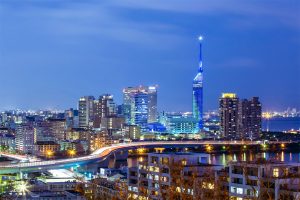
The city of Fukuoka is one of the main tourist destinations in southern Japan, and it is listed among Japan’s ten most populous cities. It is the largest city on the island of Kyushu, and packed with amazing travel experiences.
Whatever you’re looking for in your next Japanese vacation, Fukuoka is likely to deliver. The city is home to traditional parks and temples, massive shopping complexes, modern cityscapes, and special offerings for the food enthusiast. There are also a number of day trips from the city made possible using the Shinkansen bullet trains, and its southern, warmer weather is loved by the Japanese.
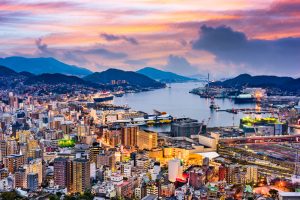
Nagasaki, capital of the prefecture of the same name, is a port city on the island of Kyushu . It has been a prominent Japanese city for centuries due to its proximity to mainland Asia. Nagasaki also holds an unenviable role in world history , that of being the second city to endure an atomic weapon.
In the years since that tragic event, Nagasaki has recovered and flourished. Today, tourists flock to Nagasaki to see breathtaking scenery, historic reminders, and religious relics. Start planning your next trip to Nagasaki with the help of this handy travel guide.
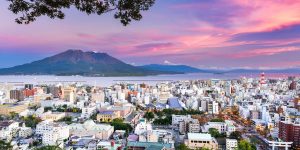
Located in Kagoshima prefecture at the southwestern tip of the island of Kyushu, Kagoshima is the largest southernmost city on the main islands of Japan and is often considered the friendliest Japanese city for visitors.
Kagoshima has a long history as an important commercial port , especially during the medieval period and the Edo period from 1603–1868, is widely regarded as the birthplace of the industrial revolution in Japan. It was officially inaugurated as a city in 1889.

Okinawa Prefecture consists of more than 150 distinct islands, all of which lie 400 miles from mainland Japan . This sets Okinawa apart as a world unto itself.
In Okinawa, you can explore deserted beaches , swim with sea turtles, or snorkel in crystal clear waters. One hundred and eleven of Okinawa’s islands are uninhabited, pristine and untouched , making them prime real estate for adventure. Okinawa is home to rare creatures, such as the Iriomote wild cat, and cuisine unique and different from the rest of Japan .
Best things to do in Kyushu
From the healing waters of Beppu Onsen, to the slopes of the smoking Sakurajima volcano in Kagoshima, to the vibrant coral reefs of Okinawa, there are plenty of unique natural attractions to explore in Kyushu. The region is also home to several significant historic sites.
Some top attractions in Kyushu include:
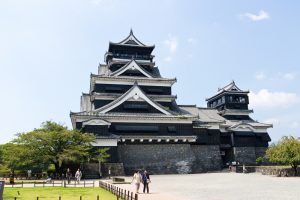
Located in Kumamoto Prefecture on the island of Kyushu, Kumamoto Castle (熊本城, Kumamoto-jō) is one of the largest and most impressive castles in Japan . During its heyday, it was considered one of the most impenetrable fortresses in the country.
Designed with strategic defense firmly in mind, the castle originally boasted over 49 turrets, 29 gates, and a number of unique defensive measures including holes in the walls for dropping boiling water, rocks, or excrement onto attackers.
Main train lines and transportation in Kyushu
The island of Kyushu is linked to Honshu by a variety of train lines , including the Sanyo Shinkansen and a number of other non-bullet train services which operate via the Kanmon Tunnels.
The services that operate within the region itself include the following:
- Kyushu Shinkansen
- Seven Stars Kyushu
- Ibusuki-makurazaki line
- Hisatsu line
- Kitto line (Ebino Kogen Line)
- Hisatsu line (Ebino Kogen line)
- Nichinan line
- Mitsumi line (Amakusa Misumi line)
- Kyudai line
- Nagasaki line
- Sasebo line
- Karatsu line
- Gotoji line
- Chikuho line
- Sasaguri line
- Chikihi line
Other regions of Japan
Japan is typically divided into 8 areas , although Okinawa is sometimes classified as a 9th region. Nevertheless, it is traditionally considered to be a part of the Kyushu region.
If we include Okinawa within Kyushu, the other 7 regions of Japan are as follows:
Related Tours & Activities

- Wednesday, June 19, 2024
- Prefectures
Must see destinations
Discover the natural beauty of sekinoo falls, miyazaki japan, an ancient volcanic cave : mizunokuchi, kagoshima japan, discover the natural wonders of miyazaki japan: a guide to the best sightseeing spots, tranquility in the miyazaki forest : kaeda valley trekking, sugahara shrine kagoshima: a small spiritual island, editor's pick, exploring mt aso: a comprehensive guide to the magnificent volcano, nabegataki waterfall: kumamoto prefecture.
Located within the Mochio Sekino-o Prefectural Park of Miyakonojo, Sekino-o Falls is considered one of the…
Believed to have formed from a great volcanic eruption of the Aira caldera some 29,000years ago,…
As a travel enthusiast, I have had the opportunity to explore various destinations around the world.…
Miyazaki is an often overlooked destination in Japan. This somewhat remote prefecture of Japan, located on…
Visible directly from one of Japan’s best coastal roads, Sugahara shrine is a small gem along…
Sogi Falls: The Niagara of Kyushu Japan
Often referred to as the Niagara of the East, Sogi Falls certainly lives up to its…
The cherry blossom waterfall of Kyushu Japan.
Sakura falls or Sakuradake ( 桜滝 ) is a dramatic and very easily accessible waterfall in…
Exploring the Ancient Magic of Takachiho Shrine
Takachiho Shrine, located in the Miyazaki Prefecture of Kyushu, Japan, is one of the most sacred…
Skiing & Snowboarding in Kyushu Japan
Who would have thought that you could find good quality fun snow so far south in…
Exploring the Natural Wonders of Yakushima: A Travel Guide
Yakushima is a small island located off the coast of Japan, about 60 kilometers south of…

8 Unique Experiences On Kyushu — The Third Largest Japanese Island
M y knowledge of Japan, up until now, has been limited to hearing about Tokyo and Mount Fuji. Having recently traveled to Kyushu (pronounced “Q-shoe”), Japan’s third largest island, to visit family, my eyes have been opened to a whole new world.
Kyushu is a magical place, an island of grassy green hills, tunnels, waterfalls, volcanoes, and hot springs. But more than that, it is a “throwback” to another time. And by that I mean Kyushu is a wonderful example of Japan’s ancient culture and traditions, from ancient temples and sacred shrines to fighting spinning tops and world-acclaimed porcelain. What I found most unique about Kyushu is its people. They are friendly, hospitable, and excited to share a bit of their world with visitors.
A few memorable places in Kyushu were the Yukoto Inari Shrine, Sachihime Brewery (sake-tasting and tour), Shinsaikai Bridge, Ito Ichiba Fish Market, Tenkaiho Observatory, and Kujukushima (“99 Islands”). With so much to love about Kyushu, Japan, here are my eight favorite “unique” experiences on the island.
1. Sakurajima Volcano
One of the most unique and thrilling experiences is to spend the night on or near one of Japan’s most active volcanoes, Sakurajima (“Cherry Blossom Island”), located on Kyushu’s western tip in Kagoshima prefecture. Spending the night at the base of this smoking volcano has been described as “both a weird mix of serenity and a feeling of power.” If you’d like to visit Sakurajima, but would rather not stay so close to an active volcano, there are hotels in Kagoshima with amazing views of the volcano from across the bay.
Sakurajima has several volcano observation points, as well as historical shrines, to visit around the island. Be sure to stop in at the Sakurajima Visitor Center and volcanic museum near the ferry port. Admission is free and it’s right next to a lava trail and Yogan Nagisa Park Footbath (a hot spring) which is a unique experience on its own.
Pro Tip: Sakurajima is accessible by ferry from Kagoshima or via a narrow road on the opposite side, the easiest access point if traveling from Kirishima Kurozu (below).
2. Kirishima Kurozu (Black Vinegar)
A very unique experience in Kyushu is found in Kagoshima prefecture: Kirishima Kurozu or Black Vinegar (factory). The best place to experience Kirishima Kurozu is at Sakamoto Kurozu Tsubobatake Information Center . Strange black pots are visible from the road as is the smell of delicious vinegar as it wafts through the air. At the visitor and information center, there is a small museum, an exquisite restaurant, and a gift shop where you can buy hundreds of vinegar products as well as taste the different variations of vinegar produced at this factory.
The most unique highlight here, though, are the large fields lined with thousands of black vinegar jars — a centuries-old method of making black vinegar. On clear days, you’ll have a great view over the vinegar jars of Sakurajima Volcano smoking in the background.
3. Hirado Castle
Hirado City is located on Hirado Island in Nagasaki prefectureʼs western region. In the mid-16th century, Hirado became the international trading capital of Japan. The Hirado Dutch Trading House (established 1609), Japan’s first Western-style building, has been restored and is now a fantastic history museum open to the public.
High on the hill above the Dutch Trading House stands Matsura Historical Museum . It is housed in the residence of the Matsura feudal lord who reigned during the Kamakura period (circa 1185–1333). The museum contains remnants and historical artifacts from the reign of the Matsura.
Hirado Castle , built in the 18th century, is one of the unique castles in Kyushu. The current castle tower was fully restored in 1962. With five floors, Hirado Castle is part museum and part historical-site gallery with a theater and unique interactive experiences. The castle grounds are gorgeous with gardens, statues, and shrines. And you just might run into a samurai warrior or two.
Pro Tip: There are many steps to climb both inside Hirado Castle and to get up to Matsura Historical Museum.
4. Sasebo Spinning Tops
For a unique (only in Kyushu) experience, visit Sasebo Spinning Tops, also known as Sasebo Goma. See the ancient method of making “fighting” spinning tops and learn the art and sport of spinning them. Learn ancient traditions and the theory of “Yin-Yang and the Five Elements” (the colors used to paint the tops). In the workshop, visitors can paint their very own handcrafted spinning top, a very unique and special souvenir.
Sasebo Goma is rich in history; a traditional craft of the Nagasaki prefecture that is famous worldwide. Dating back to before the Heian period (circa 800–1200), spinning tops was a game played only by royalty. Today, spinning tops are made for everyone’s enjoyment and are still made in Sasebo by third- and fourth-generation spinning top makers.
Pro Tip: Spend as much or little time as you want at the factory. The owners are more than glad to spend several hours with visitors. There is also a gift shop to buy premade spinning tops of every shape and size.
5. Seven Hells Of Beppu
Beppu’s Jigoku, also known as the “ Seven Hells of Beppu ,” sounds somewhat ominous but it is a very unique Kyushu experience in Oita prefecture. Its name comes from the mysterious geothermal springs (boiling water and gas bubbling up from below the ground). Each of the seven hells have different characteristics, including Oniyama Jigoku, an animal preserve where 80 alligators live. Four of the hells are designated National Places of Scenic Beauty. Umi (“sea”) is a gorgeous cobalt-blue color and the boiling clay of Chinoike (“blood lake”) is blood-red, the oldest of Japan’s hells.
These Jigoku are for viewing, not for bathing in, as they can reach temperatures of about 99 degrees Celsius (210.2 degrees Fahrenheit).
However, there are many hot-spring bathing facilities that you can soak in. Many hotels and vacation rentals offer public and private onsens.
Pro Tip: A must-visit picturesque onsen town near Beppu is Yufuin Floral Village (a local’s favorite “mini theme park”). Visitors delight as they walk through the quaint village of Cotswolds, England-style cottages, shops, eateries, and lanes filled with flowers.
The largest city on Kyushu, Fukuoka actually has a laid-back vibe. Known as a foodie destination, Fukuoka has all the draws of a big city — museums, sporting and cultural events, etc. However, for a truly unique experience, visit the Reclining Buddha at Nanzoin Temple . The reclining pose is a rarity in Japan and this one is an impressive 134 feet long and 36 feet high. Be sure to rub his feet for good luck.
Another stunning location, and in my opinion a unique must-see, is less than an hour drive from Fukuoka in Itoshima: Sakurai Shrine Futamigaura Torii and Couple Stones. It’s a short walk (and some stairs) from parking down to the beach but well worth it for the amazing photos you’ll capture.
7. Ceramic Treasure Hunting
Saga prefecture is the birthplace of Japanese porcelain. For over 400 years, the most well-known and collected porcelain throughout the world was, and still is, from the small Kyushu towns of Arita and Imari .
For a most-unique experience involving porcelain and ceramics, try “treasure hunting.” There are several places that offer treasure hunting. I recommend Kouraku Kiln in Arita. Visitors “buy” a shopping basket and enter a very large warehouse stacked with thousands of crates full of ceramics — bowls, plates, saki cups — everything you could imagine. You are issued gloves (the ceramics may be very dusty) and are given 90 minutes to scavenge and fill your basket. Whatever fits in your basket, you keep.
Pro Tip: There is a children’s play area inside the barn for when the littles get tired of searching for treasures. Outside is another family-fun adventure — Samurai Archery .
While in Saga, learn about Japanese porcelain history at Arita Ceramic Museum or the much larger Kyushu Ceramic Museum . There are many ceramic kilns and shops in the prefecture open for tours and to buy wares. Two must-stops are Zwinger Palace at Arita Porcelain Park and Ookawachiyama Village (“Village of the Secret Kilns”), a national historic site.
8. Huis Ten Bosch
Sasebo is home to one of Kyushu’s most unique experiences — Huis Ten Bosch — Japan’s largest amusement park by area (yes, larger than Tokyo’s Disney). Located on Osaka Bay in Nagasaki prefecture, Huis Ten Bosch (“House In The Forest”) is an exquisite replica of a Netherlands town and countryside (complete with windmills, tulips, castles, and a canal). It was built to pay tribute to the importance of early Dutch trade in 16th-century Japan.
Not your typical amusement park — there are no screaming roller coasters — there is plenty to do for the whole family here. Visitors will find virtual reality and digital gaming along with more traditional activities. The nights are spectacular at Huis Ten Bosch as the entire park lights up with over 13 million lights. There are several light shows at the castles. One day is not enough to see and do all the park has to offer.
Pro Tip: The train stops at Huis Ten Bosch from Nagasaki and Fukuoka. There are several hotels on site and nearby.
Getting Around Kyushu
There are airports in all the major Kyushu cities. However, it may be best (cheaper) to fly to an international airport then transfer to domestic and hop down to Kyushu. We found that flights to Narita (NRT) in Tokyo were least expensive and the airport very easy to navigate.
Kyushu Railway Company is a great way to get around the island with trains to all major cities, including a bullet train (another unique experience). Driving around Kyushu is pretty easy after getting used to driving on the left-hand side of the road. Be prepared for the cost of toll roads to add up.
Pro Tip: If you plan on renting a car and driving yourself, you must obtain a Japanese driver’s license before arrival.
Related Reading:
- 16 Unique And Delicious Foods You Need To Try In Japan
- 13 Incredible Things To Do In Nagano, Japan
- My 9 Favorite World Heritage Sites I Visited In Japan
This article originally appeared on TravelAwaits

Japan’s southern island, Kyushu, is often overlooked by foreign tourists, but it has a number of points of interest which are not to be missed. Aside from the famous Atomic Bomb Museum, there are many places to visit and things to do here. There are many undiscovered activities and attractions here, whether you’re into hiking, museums, beaches, shopping or natural beauty.
We recommend five great locations where you could easily spend your days in Kyushu:
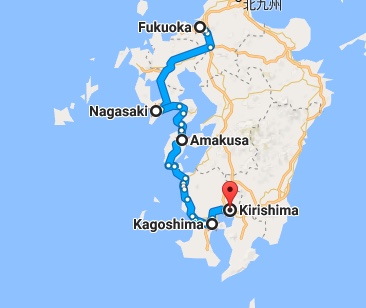
One of Kyushu’s major ports and one of the most cosmopolitan places in the south island, this is the best place to start exploring Kyushu. Fukuoka is a lively place and there is always something going on. Known for its festivals, check to see what’s on at the time of your visit, or visit the Hakata Machiya Folk Museum anytime to learn a little local history.
Fukuoka is one of the greenest cities in Japan and has recently been hitting the headlines for the promotion of all things eco-friendly. To enjoy some outdoor space, visit Ohori Park and walk across the bridges which run through the lake, or hire a paddle boat if you’re feeling brave. Right next door are the ruins of the Fukuoka Castle – not much is left of the fortress but the area has been beautifully looked after and is well worth a look.

Other top attractions in Fukuoka include Kushida Shrine, the Art Museum and East Asian Art Museum, Nokonoshima Island, the Seaside Park, Fukuoka Tower, eating some Yatai (street food), shopping at Canal City and having a coffee at the Moomin Cafe. Though it is better to have a couple of days here to fully explore, you may check out this one day in Fukuoka (especially good for ramen lovers!).
-> If you’re in Fukuoka during summer, check out Day trip to Itoshima beach from Fukuoka
Well known for its recent history, Nagasaki is so much more than an opportunity for dark tourism. If you do fancy learning about the wartime events, the Atomic Bomb Museum, Memorial Hall and Peace Park will take up anything from an hour of your time to all day long depending on how interested you are. The three locations are all close together and a short ride away on the tram from the central train station.

If you’d like to find out about Nagasaki’s less recent history, a great place to start is Dejima island. Home to Dutch merchants who found themselves no longer welcome in the city, Dejima is a fascinating place and has been beautifully restored. For something similar with a bit more of a view, check out the Glover Garden at the end of the tram line. This beautiful garden also has a number of houses which have undergone restoration in recent years.
Other top attractions in Nagasaki include the 26 Martyrs Museum (near to the train station), Hashima Island, the Spectacles Bridge (stroll all the way up the river for a beautiful walk), Chinatown, the Museum of History and Culture, and the beautiful Seaside Park. While you’re in Nagasaki, grab a plate of Champon – this local dish is Chinese inspired and thoroughly delicious.
-> To find out more about Nagasaki, check out our Top 5 Things to do in Nagasaki

This location is often overlooked by foreign tourists, but if you love spending time by the sea then there are few better places to visit in Amakusa. Glorious beaches are hives of activity in the summer, but head down to the beach a few weeks before or after peak season and you’ll have the place to yourself.
Dolphin watching cruises are one of the most popular pastimes in Amakusa, with trips to suit every budget. Water sports enthusiasts can also find something to tickle their fancy. If land-based activities are more your cup of tea, learn a little local history at one of the many museums detailing the recent past of Christians in Amakusa. The Collegio Museum, Rosario Museum, Amakusa Shiro Memorial Hall, Christianity Museum and of course the various churches and cathedrals are all well worth visiting if you’d like to find out more about religion in Japan over the years.
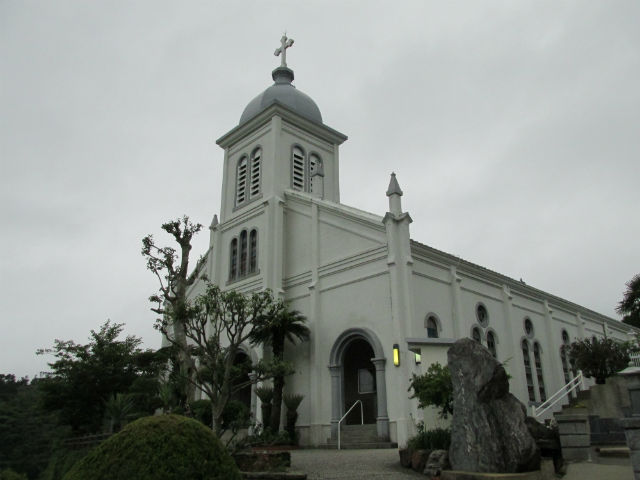
Further down south, Kagoshima is another historical hotspot with countless museums and art galleries to have a look in. The Reimenkan Museum is particularly noteworthy, and you could do worse than to stroll down ‘culture street’ (Reimenkan is at one end) and take your pick of the museums there. Behind Reimenkan is a not inconsiderable hill. Climb it. The view across the Sakura-jima is unrivaled. Getting from Amakusa to Kagoshima would take up at least 4 hours but it will be worth it.

Sakura-jima, one of Japan’s most active volcanoes, is also well worth a visit. The ferry across takes no time at all and runs several times an hour. You can’t venture too close to the top of the volcano – probably a good thing given that it tends to erupt pretty much every day – but take a bus to the lava fields for some really unique sightseeing!
Kuro-buta (black pork) is a popular local dish, best tried in hot pot. Another must try are Kagoshima cakes, made from sweet potato. You can buy boxes of them at the main train station and they have a wonderful variety. If you like Japanese alcohol, check out some of Kagoshima’s local sho-chu as they have unique flavours.
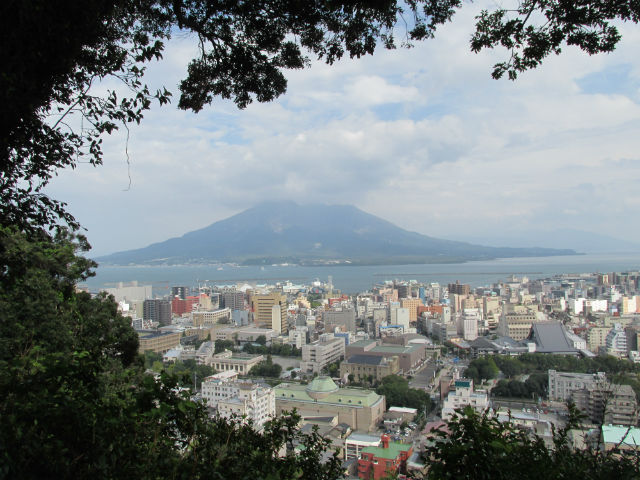
If you like hiking, Kirishima will be your idea of heaven. The hiking around Kirishima is unrivaled, and while it gets busy in the summer, the area tends to be quiet at other times of the year. Head up to the Ebino Plateau to start yourself off. The information centre there has plenty of maps and things to help you on your way. There are gentle strolls, medium walks of two or three hours, and then for the more experienced walkers, challenge yourself to a full day hike around the mountain tops.
Japanese deer live in these woods, and if sitting in a forest with a good book is more your cup of tea than sweating it up a mountain, don’t be too surprised to glance up and see a deer sharing the peace and quiet with you. The area is also famous for natural hot springs, so whether you’ve been hiking or not, end your day with a gloriously hot bath – the outdoor pools are best.

Kirishima itself is a small town but worth visiting. They have a huge temple which is open to visitors, and a brilliant little museum of masks which has been set up by a local with a passion for collecting!
Traveling in and around Kyushu
All of these locations in Kyushu are easy to get to by train, but not always on the bullet train – you’ll have to switch to local lines if you want to reach Nagasaki or Amakusa. Alternatively, travelling by car is often cheaper than coughing up for a Shinkansen ticket, but be aware of peak travel times – in the summer, the roads down to Kagoshima and Amakusa can cause traffic jams adding hours to your journey.
Related articles: Top 5 Things to Do in Nagasaki, Kyushu Itoshima, Day Trip from Fukuoka in Summer, Kyushu
Author: Celia Jenkins
Celia Jenkins is a freelance writer, specialising in travel writing and writing for children. She spent five years working as a TEFL teacher in Asia (China and Japan), and continues to teach part-time alongside her primary work as a writer. Her plans for the future include plenty more travel, copious amounts of writing, and gobbling sushi whenever she gets the chance. Find out more here: https://www.celiajenkins.com/ View all posts by Celia Jenkins
Leave a Reply Cancel reply
Your email address will not be published. Required fields are marked *
Save my name, email, and website in this browser for the next time I comment.
9 days, 8 nights
The following is a suggested, very fast paced itinerary for travelers who spend 9 days and 8 nights in Kyushu . This itinerary is designed around using a rental car for some of the rural areas where public transportation is inconvenient. Public transportation can be used instead of a rental car, however, it will result in longer travel times.
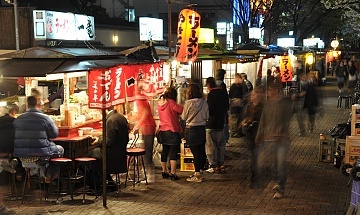
A 7-day All Kyushu Rail Pass pays off for this itinerary if used for days 3-9. A rental car is recommended for days 6-8 and would simplify transportation on day 4. Alternatively, public transportation can be used for the entire itinerary at a possibly lower cost, but with appropriate adjustments made to account for the longer travel times. Below are some sample budgets for the itinerary, excluding airfare. Find out more about the sample budgets and about the current yen exchange rates .
Questions? Ask in our forum .

You are using an outdated browser. Please upgrade your browser to improve your experience.
- Restaurants
- Best-of Guides
- MICHELIN Guide Ceremony
- My Favorites
- Subscribe to newsletter
- Booking partnership with OpenTable
- Booking partnership with Resy
- USA - English - USD
- Hiroyuki Kanda of Three MICHELIN Stars Kanda Shares His Favorite Tokyo Highlights
This project introduces Tokyo through the lens of culinary figures and celebrities connected to the city. Try visiting these cafés, bars and other trendy hot spots, and you might discover an entirely new side of Tokyo.
Editor's Pick My Tokyo Travel Japan Three Michelin Stars

Tokyo by The MICHELIN Guide
See the Tokyo guide

Hiroyuki Kanda was raised in a family that ran a Japanese restaurant in his home prefecture of Tokushima. He gained experience in France and Japan before opening Kanda in Moto-Azabu.
Kanda has continuously received Three MICHELIN Stars since the Michelin Guide Tokyo 2008. And in the Michelin Guide Tokyo 2021, Hiroyuki Kanda was awarded the MICHELIN Mentor Award for his work and career as an exemplary chef. He is also deeply invested in developing the next generation.
Since then, he has relocated to Tokyo’s Toranomon area where he continues his pursuit of even greater beauty.
1. Chugoku Hanten Fureika
‘A Chinese restaurant I like to visit. I come here to enjoy authentic Cantonese cuisine. I can recommend the entire dim sum menu, but I always make sure to get the spring rolls. I also recommend the spring onion-flavoured jellyfish and Shingen chicken served cold.’ An elegant Chinese restaurant not far from Azabu-Juban Station. Open the heavy glass doors, and it’s like you’re in China. This restaurant offers private rooms of various sizes, so it’s the perfect spot for celebrating an anniversary.
3-7-5, Higashi Azabu, Minato-ku

2. Sorahana
‘Japanese cuisine from Ms. Wakimoto, who used to work at Kanda. The flavours here are the closest to my own cooking. Especially the dashi (broth). The food has a gentle feel to it.’ A One MICHELIN Star Japanese in Kamiya-cho. Kanako Wakimoto, who trained at Kanda, was born, and raised in Kyushu, and also has a restaurant in Kamakura. Filled with a sense of nature, this chef’s distinctively gentle and tender flavours satisfy both the stomach and spirit.
5-3-3, Toranomon, Minato-ku

3. Ginza Ippodo Gallery
‘A gallery that features artworks from modern artists working today. Dishes and hanging scrolls are on display here. Chefs can’t help but be inspired by these works of art. For example, when you encounter a beautiful plate, you also instantly imagine ingredients and cuisines that pair well with it.’ A gallery sharing works from modern artists of Japan—a land with excellent rice—with the world. Viewings are by reservation only, so call or email to make a reservation before visiting. They also have another gallery location in Manhattan, New York.
3F, Isei Building, 1-8-17, Ginza, Chuo-ku

4. Chinois Ginza
‘I’m a red wine lover, and Chinois in Ginza comes to mind whenever I feel like indulging. They’re open late, so I go there after Kanda has closed for the night. It’s a convenient restaurant for late-night drinks.’ Operating for a quarter century, Chinois has been a consistent presence in Ginza. The streets and shops of Ginza 6-Chome may change, but the vastness of Chinois’ wine selection stays the same. A restaurant sure to satisfy wine lovers today just as it has in the past.
B1F, Orient Building, 6-4-5, Ginza, Chuo-ku

5. Shantan Ramen Chorori
‘This is my favourite restaurant for shoyu ramen. I like the soup with the fried spring onions in it. I have wonderful memories eating in this restaurant. A long time ago, I brought Joel Robuchon here. We had a work meeting and then ate here afterwards. Reflecting on that memory fills me with joy and a longing to revisit this restaurant.’ This ramen shop is a long-beloved local favourite in Ebisu. The ‘Shantan’ in its name comes from the fragrant soup with the sweet flavour of fried spring onions. The generously portioned lunch sets in the afternoon and the ramen and gyoza at night are both not to be missed.
4-22-11, Ebisu, Shibuya-ku

6. The Enoura Observatory
‘The Enoura Observatory is in Odawara, just over an hour from Tokyo. Created by Hiroshi Sugimoto —the same architect who designed my restaurant, Kanda—this observatory is a place for truly experiencing architecture. Even now, I still clearly remember Mr. Sugimoto guiding me as I walked around here when dealing with problems like the Covid-19 pandemic and relocating my restaurant.’ Leaving the buildings of the big city behind to immerse yourself in nature. This place might be good for days like that too. Here, you can experience the beauty of Hiroshi Sugimoto’s architecture. And perhaps you’ll experience a flash of inspiration or recall feelings from the past here.
362-1, Enoura, Odawara Kanagawa

Artwork by Hiroshi Sugimoto welcomes you at the main entrance to Kanda. The interior features the brilliant beauty of stone and wood scattered throughout.
ⒸTop Image: Kanda

Wakana Kubo is a Digital Editor for the MICHELIN Guide Japan, based in Tokyo. She loves food and travelling. Her favourites are beautiful beaches in the spring and summer, and onsens in the autumn and winter. With the motto "Always take on challenges with positive vibes," she enjoys sharing Japan’s food culture and travel tips to the world.

Milan for Design Lovers
A Fashionable 2-Day Itinerary in the Style Capital.

The Inspectors Reveal All on Daigo, One MICHELIN Star Restaurant Specializing in Shojin Ryori
From the journal of a MICHELIN Guide Inspector . Experience Japanese culture through Shojin ryori vegetarian cuisine.

Kiko Mizuhara's Tokyo Favorites: A Guide to Experiencing the Fun and Stylish Side of the City
As you explore the city, let Kiko Mizuhara’s favorite spots guide you to some of the best-kept secrets and must-visit locations.

All You Need to Know About Toyosu and Tsukiji Markets
Top-quality ingredients, traditional snacks, tuna auctions—there’s something for everyone at these markets.
Keep Exploring - Stories we think you will enjoy reading

Diary of a Dish: The Unicorn at Miami’s Pao by Paul Qui

Tokyo’s Best Neighborhoods for Vintage Clothes Shopping
Discover a different side of Tokyo’s fashion scene

Lionel Beccat of Two MICHELIN Stars ESqUISSE Shares His Favorite Parts of Tokyo
This project introduces Tokyo through the lens of culinary figures and celebrities connected to the city. Try visiting these recommended cafés, bakeries and design museums, and you might discover an entirely new side of Tokyo. This time, we’ll bring you a selection of Tokyo destinations featuring a vibrant sense of French esprit.
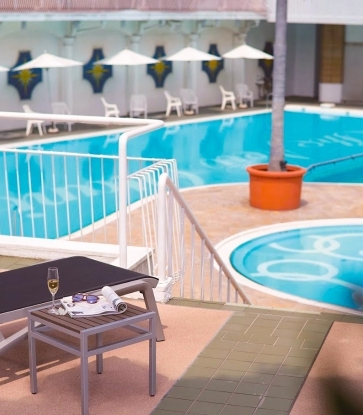
Tokyo in the Summer: 10 Things to See and Do
Beat the heat and enjoy your Tokyo summer stay to the fullest.

Best Day Trips from Tokyo
Our top picks for day trip destinations easily reached from the capital

Spas, Sento and Onsen: The Best of Bathing Culture in Tokyo
Immerse yourself in one of Japan’s oldest traditional practices

Where to Stay in Tokyo if You Love Nightlife
Along with being known for its culture, food, beautifully walkable streets and amazing pockets of nature, Tokyo has a fantastic nightlife scene.

Tokyo’s Best Speakeasy Bars to Feel the Vibes
Discover Tokyo’s booming and blooming cocktail bar scene.

Must-Try Dishes in Tokyo, According to MICHELIN Guide Inspectors
All year round, our MICHELIN Guide inspectors incessantly sample dishes from the best chefs and restaurants in Japan. Here are their most memorable ones.
MICHELIN Guide

Use the app to find the best restaurants and hotels everywhere
Be the first to get news and update about the michelin guide.
MICHELIN Guide selections
The michelin group.
- Terms of Use
- Privacy Policy
- Legal Notice
Display settings
Customize your experience by easily adjusting display settings for territory, and currency to suit your preferences!
Member privileges
The Plus program provides upgrades and amenities at participating hotels. For this hotel, Plus members will receive:
Non-members can add the privileges at checkout through our 30 day free trial, cancellable at anytime.
- Media & Industry
- Meetings & Events
- Select Language 简体中文 繁體中文(香港) 繁體中文(臺灣) India (English) Bahasa Indonesia 한국어 ภาษาไทย Tiếng Việt Singapore (English) Philippines (English) Malaysia (English) Australia/New Zealand (English) Français Deutsch Italiano Español United Kingdom (English) Nordic countries(English) Canada (English) Canada (Français) United States (English) Mexico (español) Português العربية Japan(日本語) Global (English)
- India (English)
- Bahasa Indonesia
- Singapore (English)
- Philippines (English)
- Malaysia (English)
- Australia/New Zealand (English)
- United Kingdom (English)
- Nordic countries(English)
- Canada (English)
- Canada (Français)
- United States (English)
- Mexico (español)
- Global (English)
- Fujiyoshida
- Shimonoseki
- Ishigaki Island
- Miyako Island
- Kerama Island
- Tokyo Island
- Koka & Shigaraki
- Hida Takayama
- Ginza, Nihonbashi
- Beppu & Yufuin (Onsen)
- Ginzan Onsen
- Nagasaki Islands

- Kumano Kodo
- Shikoku Karst
- Amami Oshima
- Hachimantai
- Omihachiman
- Aizuwakamatsu

- Diving in Japan
- Skiing in Japan
- Seasonal Flowers in Japan
- Sustainable Outdoors
- Off the Beaten Track in Japan
- Scenic Spots
- World Heritage
- Home Stays & Farm Stays

- Japanese Gardens
- Japanese Crafts
- Temple Stays
- Heritage Stays
- Festivals and Events
- Theater in Japan
- Japanese Tea Ceremony
- Cultural Experiences in Japan
- Culture in Japan

- Local Cuisine Eastern Japan
- Local Cuisine Western Japan
- Local Street Food
- Japan's Local Ekiben
- Japanese Whisky
- Vegetarian and Vegan Guide
- Sushi in Japan Guide
- Japanese Sake Breweries

- Art Museums
- Architecture
- Performing Arts
- Art Festivals
- Japanese Anime and Comics
- Japanese Ceramics
- Local Crafts

- Scenic Night Views
- Natural Wonders
- Theme Parks
- Samurai & Ninja
- Iconic Architecture

- Wellness Travel in Japan
- Japanese Ryokan Guide
- A Guide to Stargazing in Japan
- Relaxation in Japan
- Forest Bathing (Shinrin-yoku)

- Experiences in Japan
- Enjoy my Japan
- National Parks
- Japan's Local Treasures
- Japan Heritage
- Snow Like No Other
- Wonder Around Japan

- Visa Information
- Getting to Japan
- Airport Access
- COVID-19: Practical Information for Traveling to Japan
- Anime Tourism
- Countryside Stays
- Accessible Tourism
- Hokkaido Great Outdoors
- Scenic World Heritage in Tohoku
- Shikoku’s Nature and Traditions
- Southern Kyushu by Rail

- Traveling by Rail
- How to Travel by Train and Bus
- JR Rail Passes
- Scenic Railways
- Renting a Car
- Sustainable Travel in Japan
- Travel Brochures
- Useful Apps
- Online Reservation Sites
- Eco-friendly Accommodation
- Luxury Accommodations
- Traveling With a Disability
- Hands-free Travel
- How to Book a Certified Tour Guide
- Volunteer Guides
- Tourist Information Center

- Japanese Manners
- Spring in Japan
- Summer in Japan
- Autumn in Japan
- Winter in Japan
- Cherry Blossom Forecast
- Autumn Leaves Forecast

- Japan Visitor Hotline
- Travel Insurance in Japan
- Japan Safe Travel Information
- Accessibility in Japan
- Vegetarian Guide
- Muslim Travelers
- Safety Tips

- JAPAN Monthly Web Magazine
- Arts & Cultures
- Nature & Outdoor
- Festivals & Events
- Insider Blog
- Things to do
- Local Guides
- Food & drink
- Traditional
- Hokuriku Shinetsu

My Favorites
${v.desc | trunc(25)}
Planning a Trip to Japan?
Share your travel photos with us by hashtagging your images with #visitjapanjp
DISCOVER JAPAN DESTINATIONS
- Destinations
From the great white north to the sub-tropical south—and everywhere in between
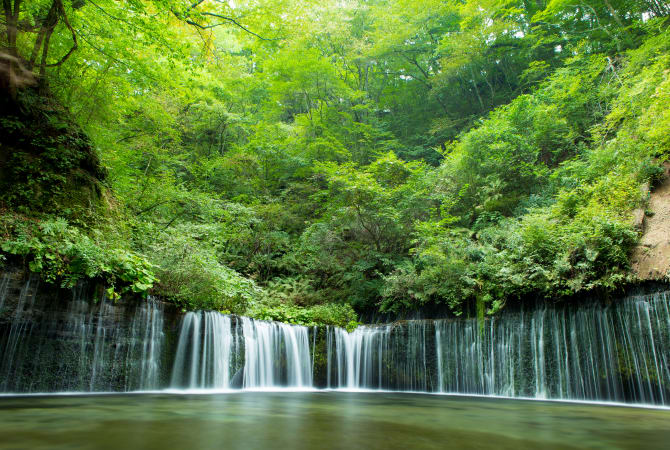
Please Choose Your Language
Browse the JNTO site in one of multiple languages

IMAGES
VIDEO
COMMENTS
Travel guide for Japan's Kyushu Region. Kyushu (九州, Kyūshū, literally "nine provinces") is Japan's third largest island, located southwest of the main island Honshu.
Kyushu is a land full of energy, from its vibrant people to its famous volcanoes. Close to the rest of Asia and easily accessible from Tokyo, Kyushu has welcomed new ideas and cultures for over a thousand years. Experience the dynamic landscapes, relax in the many hot springs, and enjoy the warmth of genuine hospitality.
I'll be referencing various modes of transport throughout this Kyushu travel guide, but in general I'd say you should expect a mix. The Shinkansen, for example, only runs between Fukuoka (Hakata), Kumamoto and Kagoshima, which means that for travel to cities like Nagasaki, Beppu and Miyzaki, you'll need to avail ordinary express trains ...
Easily reached by land, sea and air, dynamic Kyushu is bubbling with energy, culture and activity. Japan's third-largest island is internationally famous for its tonkotsu ramen, varied hot springs, dramatic mountains, and peaceful beaches. While the startup hub of Fukuoka bubbles with international attention, the volcanic terrain to the south ...
Here are some important things to note before we get started: I've combined two of my personal itineraries to create this 7-10 day Kyushu travel guide.; For Days 1-4, I recommend using public transport such as the trains and express airport bus.; From Day 5 onwards, a rental car is the best option to reach more remote areas.; I also recommend using Kumamoto as a base, due to its central ...
Day 1 - Fukuoka. Explore Fukuoka city and check out the city's famous food stalls (yatai) in the evening. Day 2 - Fukuoka to Nagasaki. Travel to Nagasaki and explore the city. Stay overnight there. Day 3 - Nagasaki to Kagoshima. Leave Nagasaki early and head to Kagoshima in southern Kyushu. Check out Sakurajima, an active volcano and the symbol ...
The Ultimate Kyushu Travel Guide (for adventure) 30 Amazing Things to do In Kyushu such as waterfalls, hikes, volcanoes, and hot springs! ... Onbara Falls is a bit of a hidden gem just outside the town of Beppu in Oita Prefecture of Kyushu, Japan. Beppu is one of the most famous Onsen towns in Japan and even the world.
Day 8 - Yufuin via Mount Kuju. Drive to Yufuin via the Kuju Mountains and overnight in Yufuin. Day 9 - Beppu. Drive to Beppu and visit the town's hot springs. Return your rental car. Day 10 - Return to Fukuoka. Take a train back to Fukuoka via Kokura Station. A rail pass does not pay off for this itinerary. A rental car is recommended for days ...
Good to Know. Kyushu is Japan's warm and friendly southern island, with verdant green hills, active volcanoes, abundant hot springs and delicious food. It's also well connected to the world, with many transport options, lively cities and free Wi-Fi in many areas. Here are some tips on when to go, where to stay and how to make the most of your trip.
Kyushu Travel Guide: Video. Japan Travel. Kyushu, Japan's third-largest and southernmost island, is a cultural collection of natural beauty, historic charm, spiritual c.. Kagoshima 5 4.
Kyushu, home to the most active volcanoes in Japan, and one of the earliest regions in Japan to receive foreigners, has a very interesting environment and history. For the nature-inclined, visit the ethereal Yakushima Island with its ancient cedars and moss covered forests where Studio Ghibli's Princess Mononoke took inspiration from, the ...
My 7-Day Kyushu Travel Itinerary. In the end, after all the research, this is the Kyushu itinerary I went with: Day 1: Hiroshima. Land in Osaka in the morning, go to Hiroshima immediately, and spend all day in Hiroshima. Day 2: Fukuoka. Travel to Fukuoka in the morning, then spend time in Fukuoka All-Day; Day 3: Nagasaki. Travel to Nagasaki in ...
Highlights include Sakurajima, one of the world's most active volcanoes, which looms over the city of Kagoshima, while the lush island of Yakushima, roughly 100km south of Kyūshū, sports towering, thousand-year-old cedar trees. Travel ideas for Japan, created by local experts. 13 days / from3535 USD.
If you are planning the Kyushu itinerary, this ultimate Kyushu travel guide blog has all the essential information including things to do, where to stay, and money-saving tips for your Kyushu trip. Kyushu (九州) is Japan's third-largest island and is located southwest of the main island Honshu. Literally, as nine provinces, Kyushu ...
Introduction. Welcome to Kyushu, the southwesternmost of Japan's main islands and a treasure trove of natural wonders, rich history, and vibrant culture. This enchanting region is known for its breathtaking landscapes, hot springs, delicious cuisine, and warm-hearted locals. Whether you have 5, 7, or 10 days to spare, this comprehensive ...
Kyushu, the third-largest island in Japan, offers a perfect blend of natural beauty, rich culture, and fascinating history. From soaking in hot springs and hiking scenic trails to exploring vibrant cities and indulging in mouthwatering cuisine, Kyushu has it all.
3. Go treasure hunting at Kouraku kiln. Image credit: Kyushu Tourism Organization. Located in the small town of Arita, Kouraku kiln is a porcelain factory with a long history. Known as the birthplace of pottery in Japan, Arita pioneered pottery-making, producing porcelain for around 400 years.
Click here for a 7, 14, or 21-day JR Rail Pass for the whole of Japan: Whole Japan Rail Pass. SUNQ BUS PASS. Runs on 99% of long-distance and local buses in Kyushu and gives you unlimited use of them for 3 or 4 consecutive days. Usually costs 9000 - 14000 yen depending on which area/length of time you book it for.
Drive to Yufuin via the Kuju Mountains and overnight in Yufuin. Day 11 - Beppu. Drive to Beppu and visit the town's hot springs. Return your rental car. Day 12 - Return to Fukuoka. Take a train back to Fukuoka via Kokura Station. A rail pass does not pay off for this itinerary. A rental car is recommended when on Yakushima and for days 8-11.
The Kyushu region of Japan largely covers the third-largest of the country's main islands. The southernmost region of Japan, Kyushu is a historically significant area that long served as a gateway between Asia and the rest of the world. Separated from the island of Honshu by the Kanmon Straits, Kyushu is defined by vast areas of mountainous ...
Discover the natural beauty of Sekinoo falls, Miyazaki Japan. April 15, 2023. admin. Located within the Mochio Sekino-o Prefectural Park of Miyakonojo, Sekino-o Falls is considered one of the…. Kagoshima Shrines & Temples.
Having recently traveled to Kyushu (pronounced "Q-shoe"), Japan's third largest island, to visit family, my eyes have been opened to a whole new world. Kyushu is a magical place, an island ...
Nokonoshima Island, Fukuoka. Other top attractions in Fukuoka include Kushida Shrine, the Art Museum and East Asian Art Museum, Nokonoshima Island, the Seaside Park, Fukuoka Tower, eating some Yatai (street food), shopping at Canal City and having a coffee at the Moomin Cafe. Though it is better to have a couple of days here to fully explore ...
Travel guide for Kitakyushu City in Fukuoka Prefecture. Kitakyushu (北九州, Kitakyūshū, lit. "North Kyushu") is the northernmost city of Kyushu and has been an important hub for both land and marine traffic since olden times. It is the gateway between Honshu and Kyushu, as well as an important port for international trade.
A 7-day All Kyushu Rail Pass pays off for this itinerary if used for days 3-9. A rental car is recommended for days 6-8 and would simplify transportation on day 4. Alternatively, public transportation can be used for the entire itinerary at a possibly lower cost, but with appropriate adjustments made to account for the longer travel times. Below are some sample budgets for the itinerary ...
Travel 2 minutes 13 June 2024 ... was born, and raised in Kyushu, and also has a restaurant in Kamakura. Filled with a sense of nature, this chef's distinctively gentle and tender flavours satisfy both the stomach and spirit. 5-3-3, Toranomon, Minato-ku ... Wakana Kubo is a Digital Editor for the MICHELIN Guide Japan, based in Tokyo. She ...
Check out our Japan map, explore Japan's destinations and travel highlights in this comprehensive guide to where to visit in Japan.